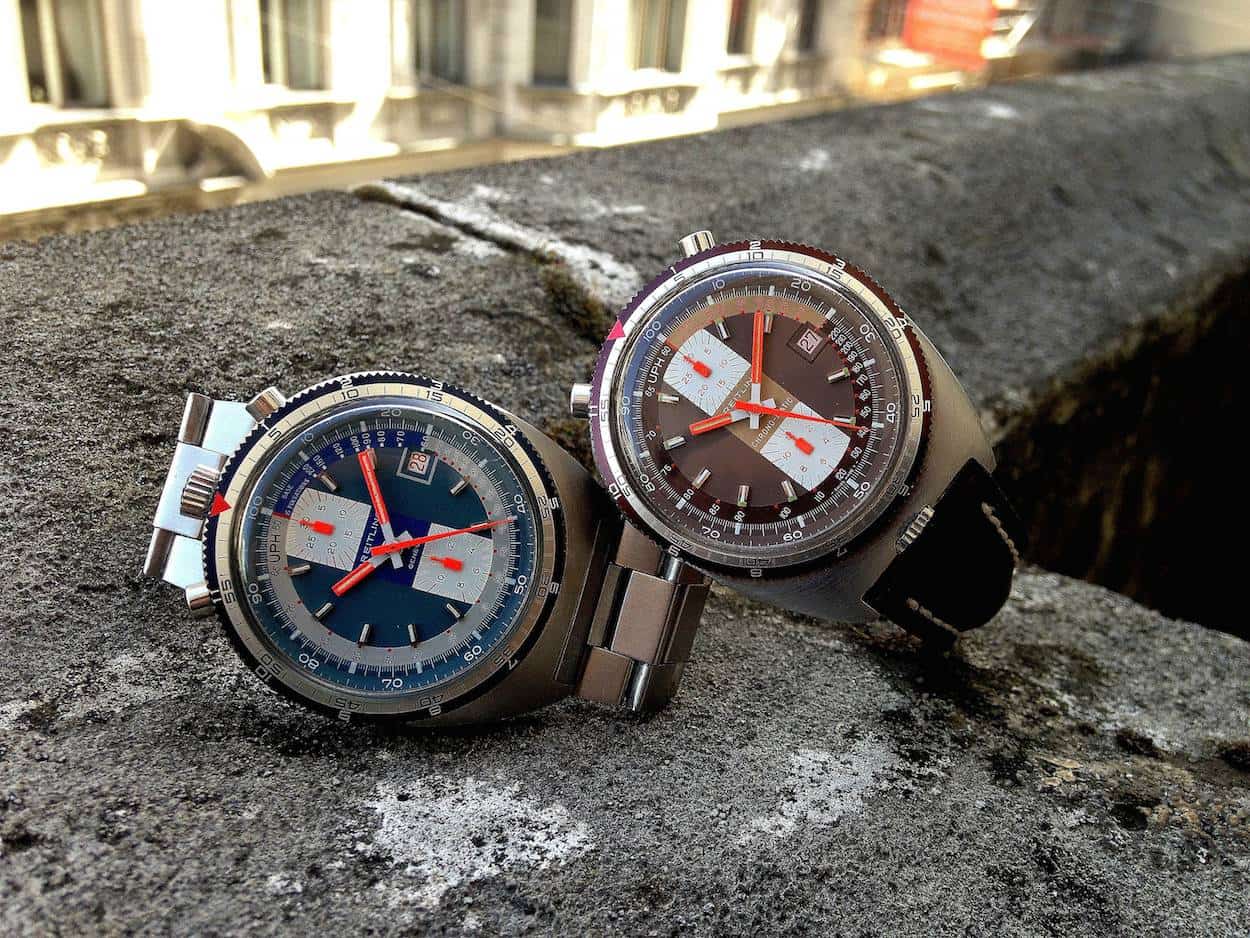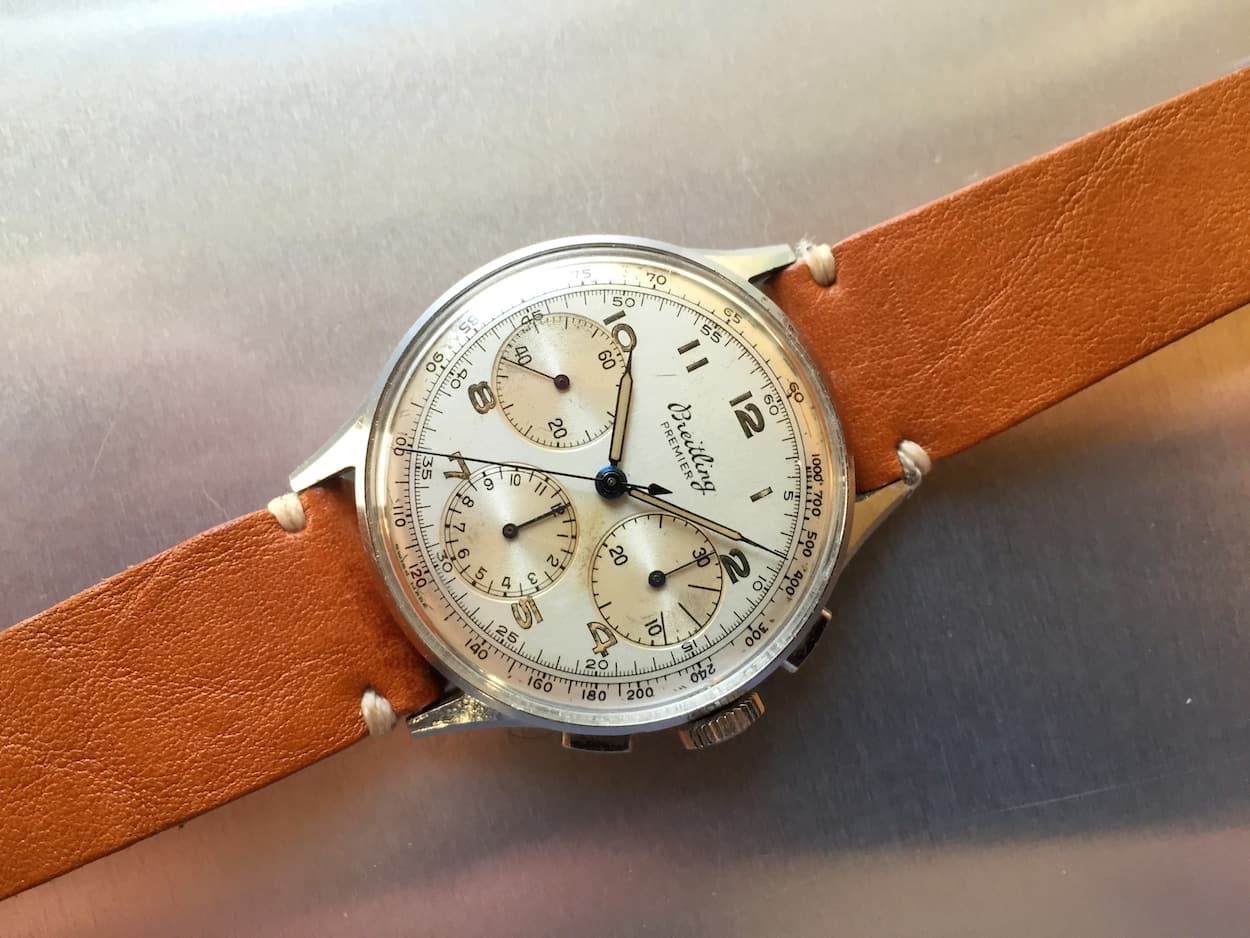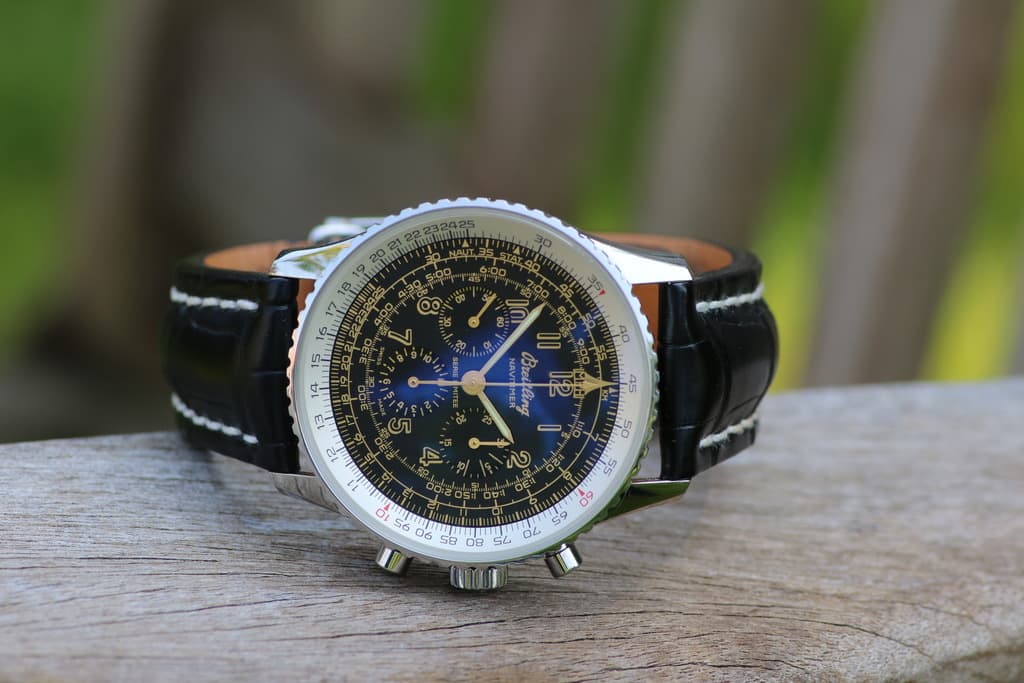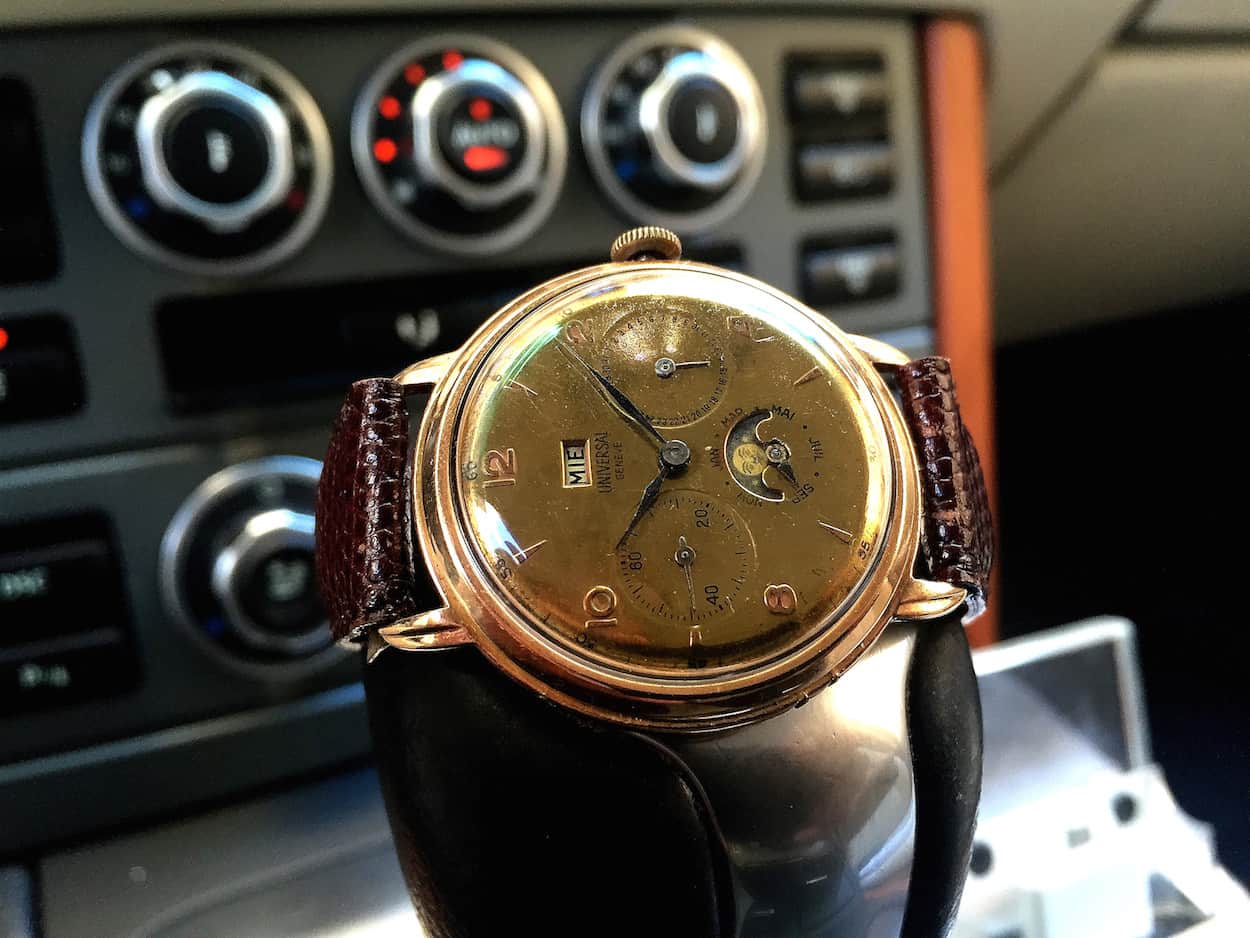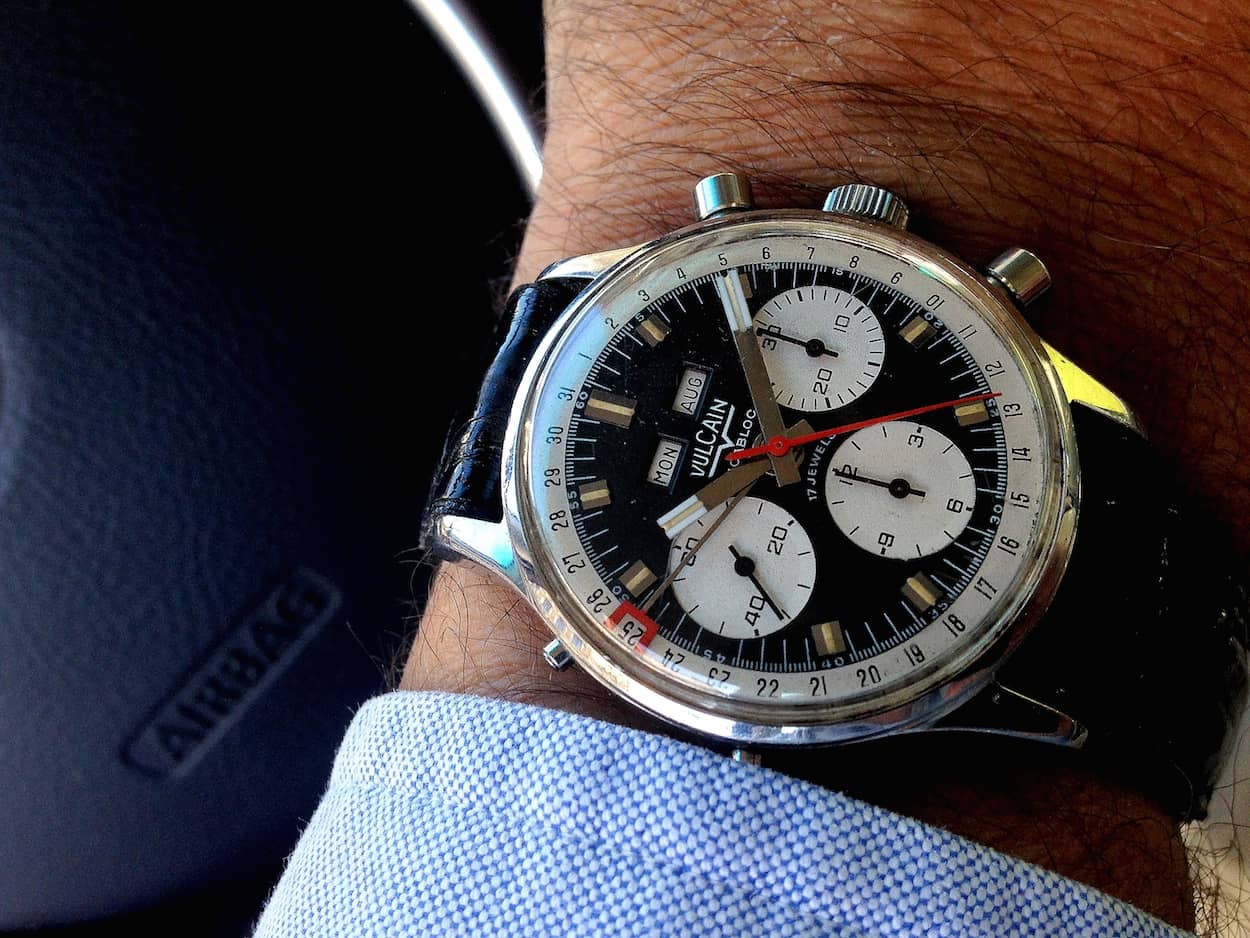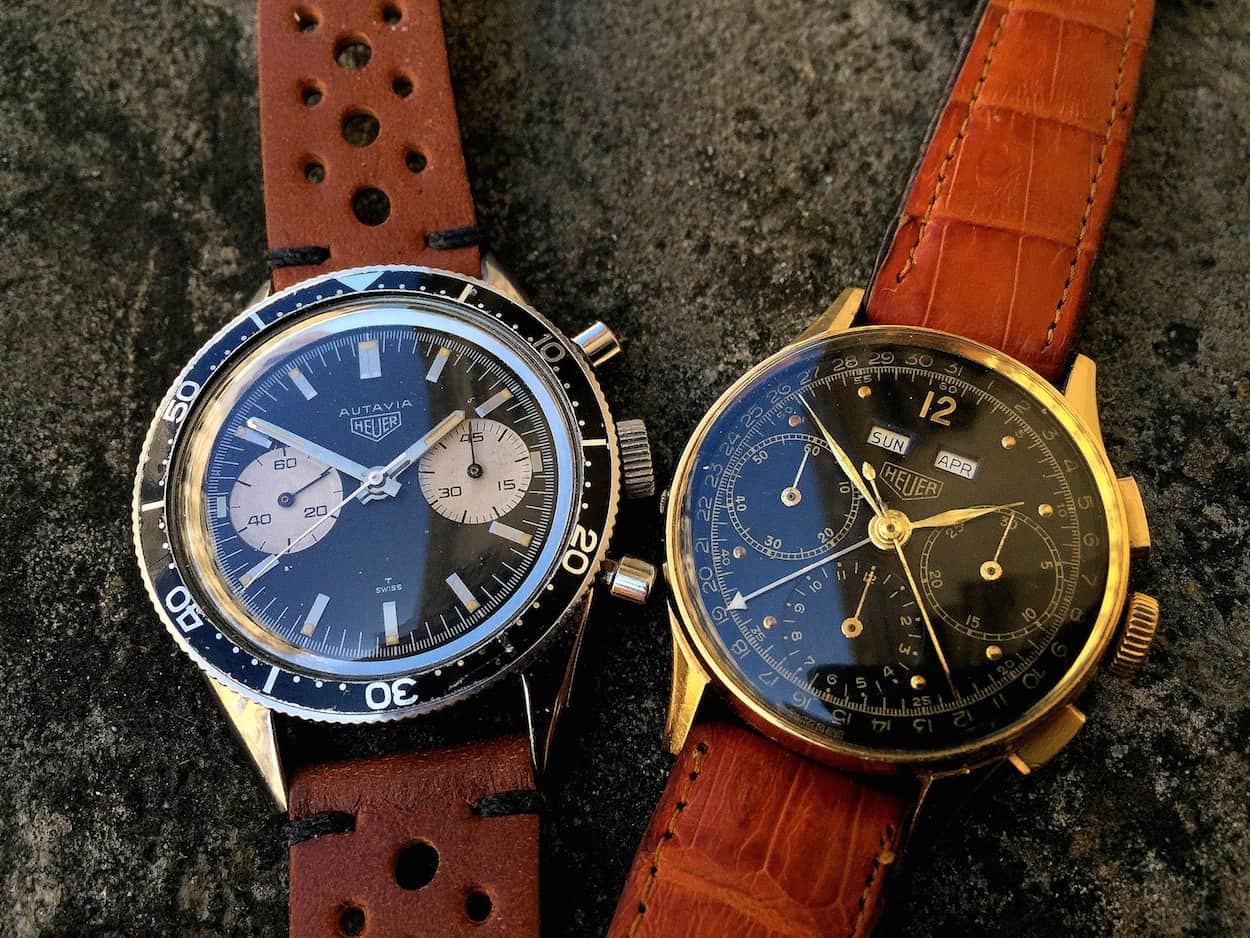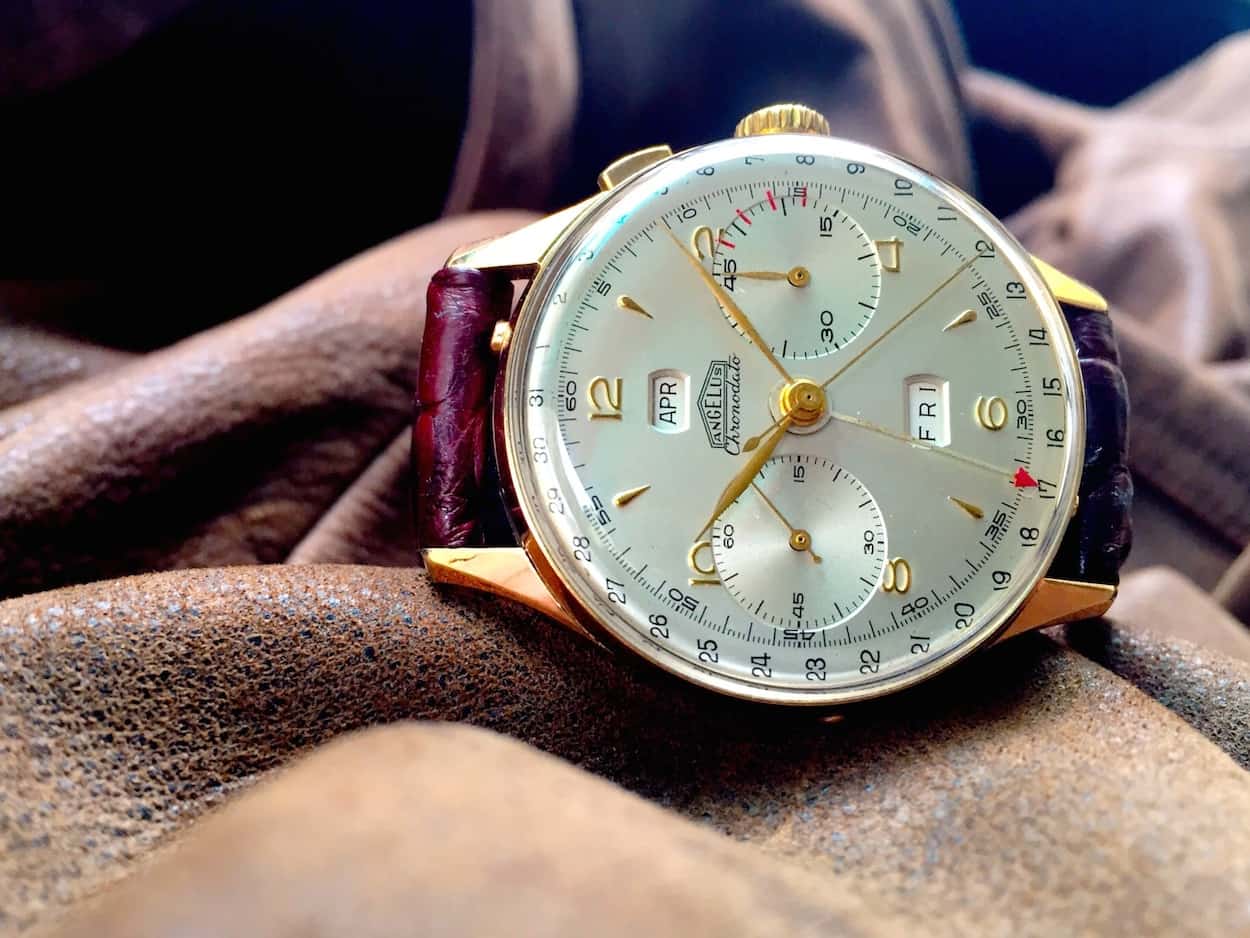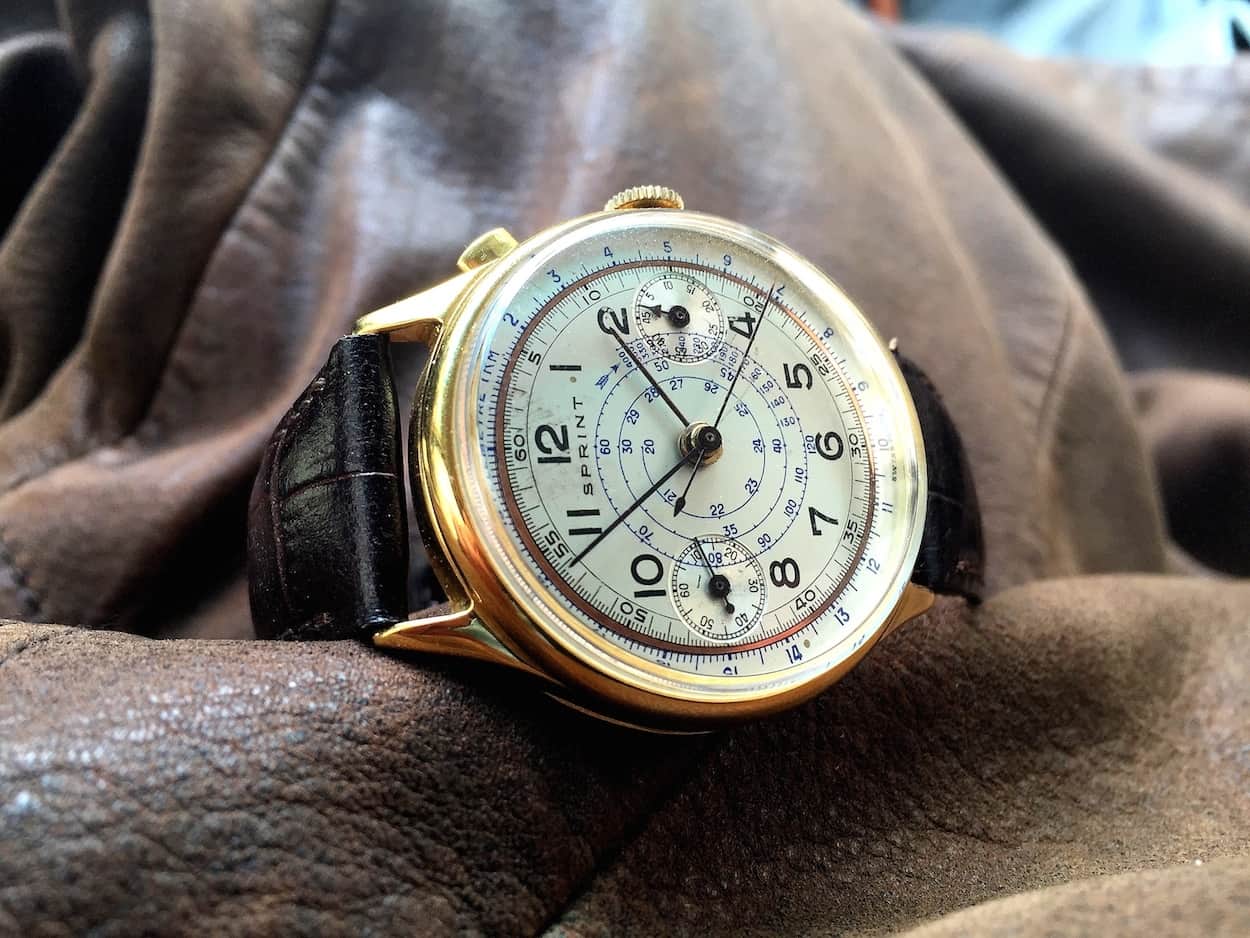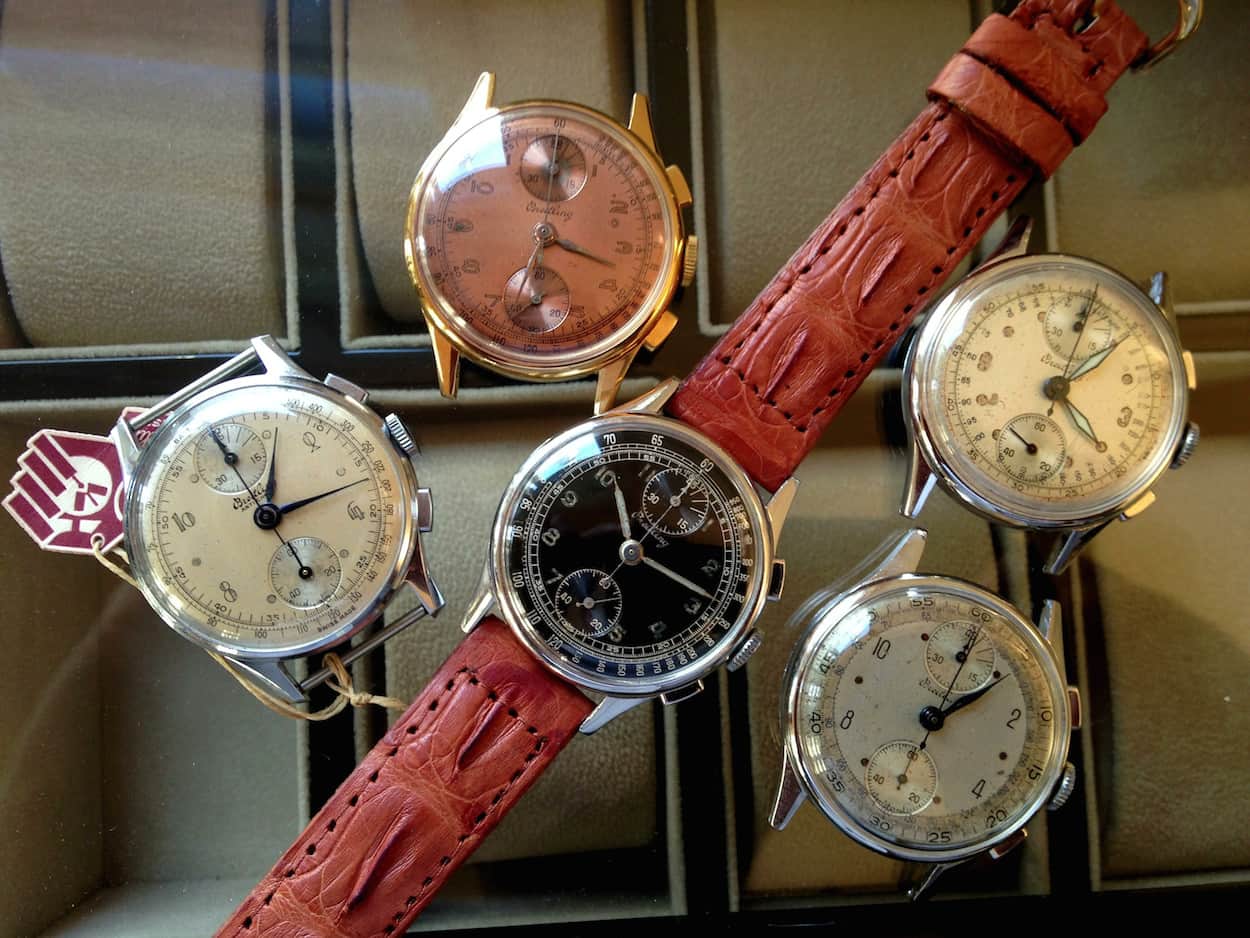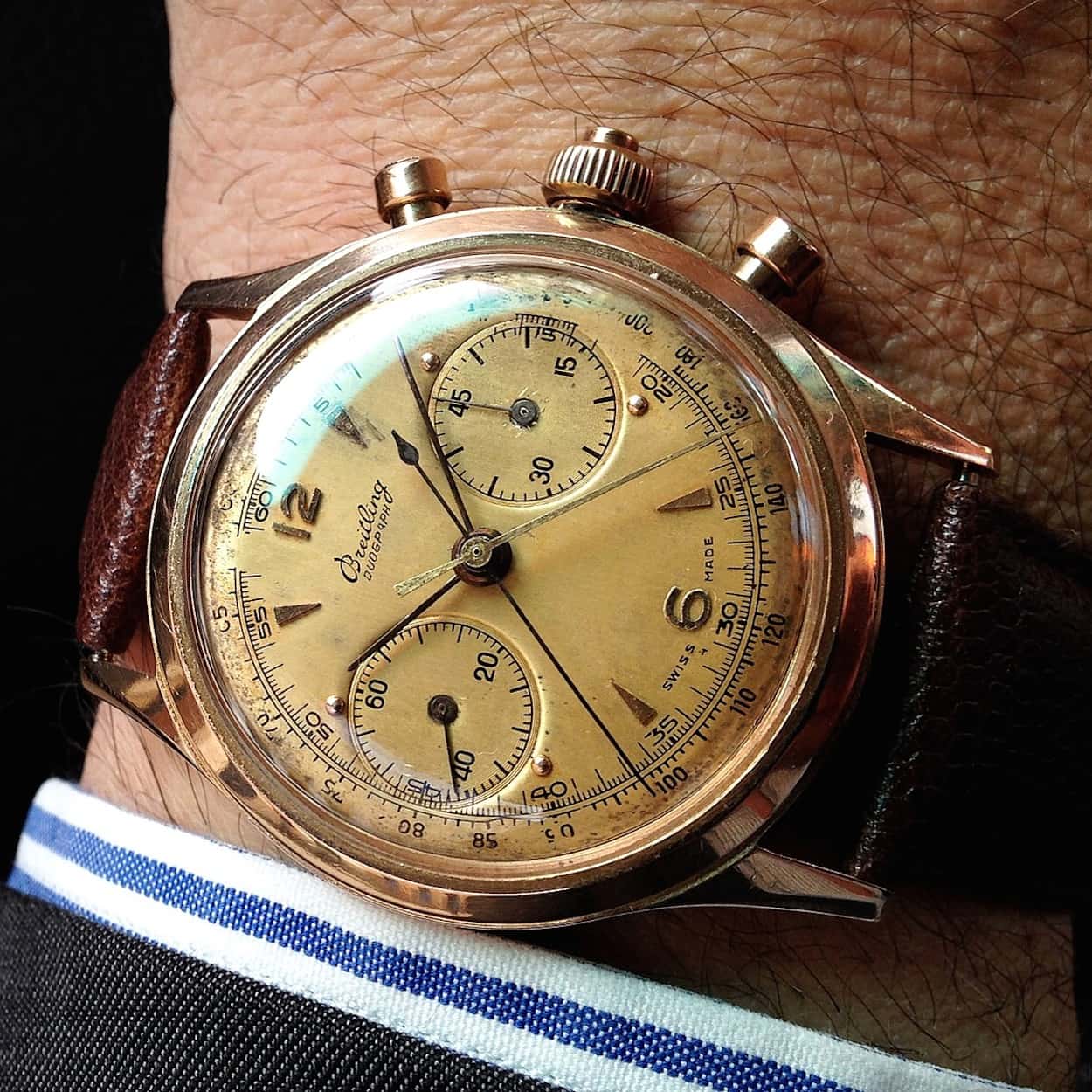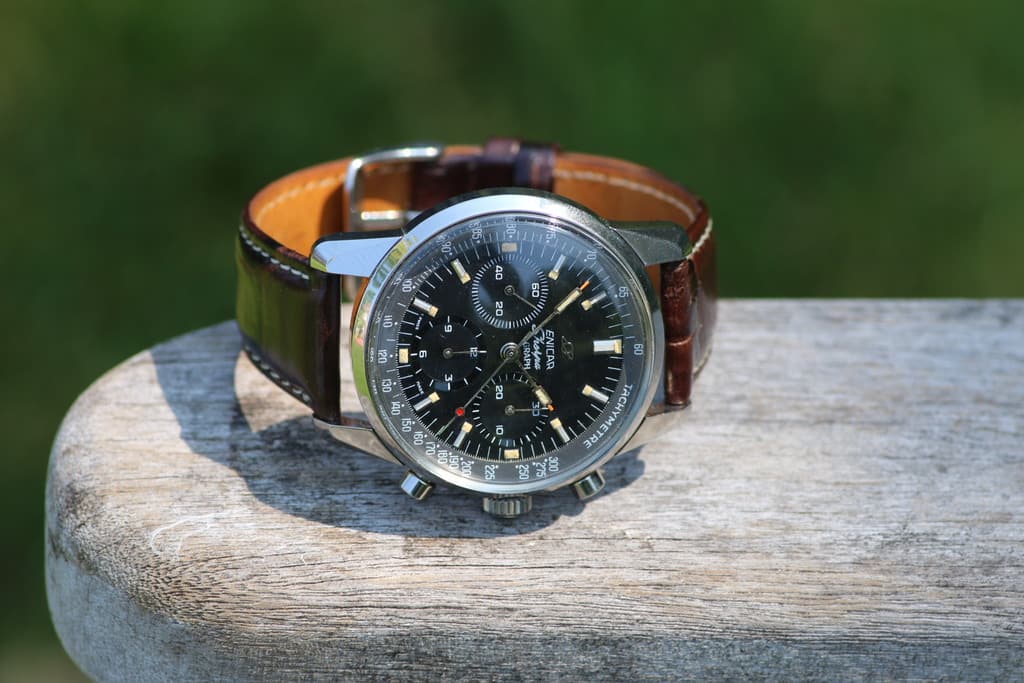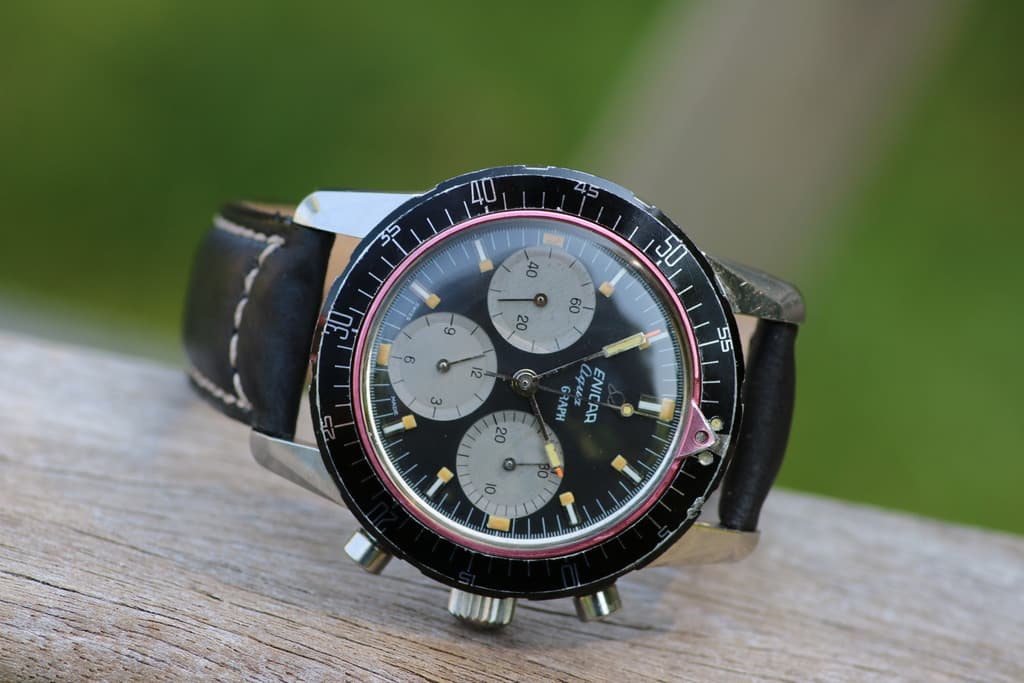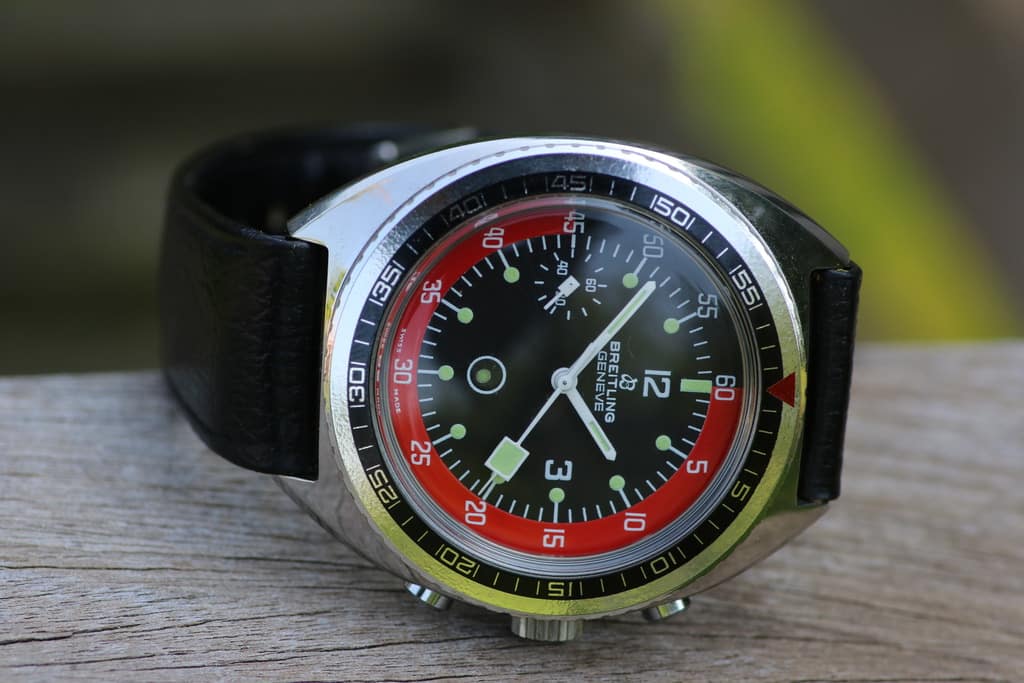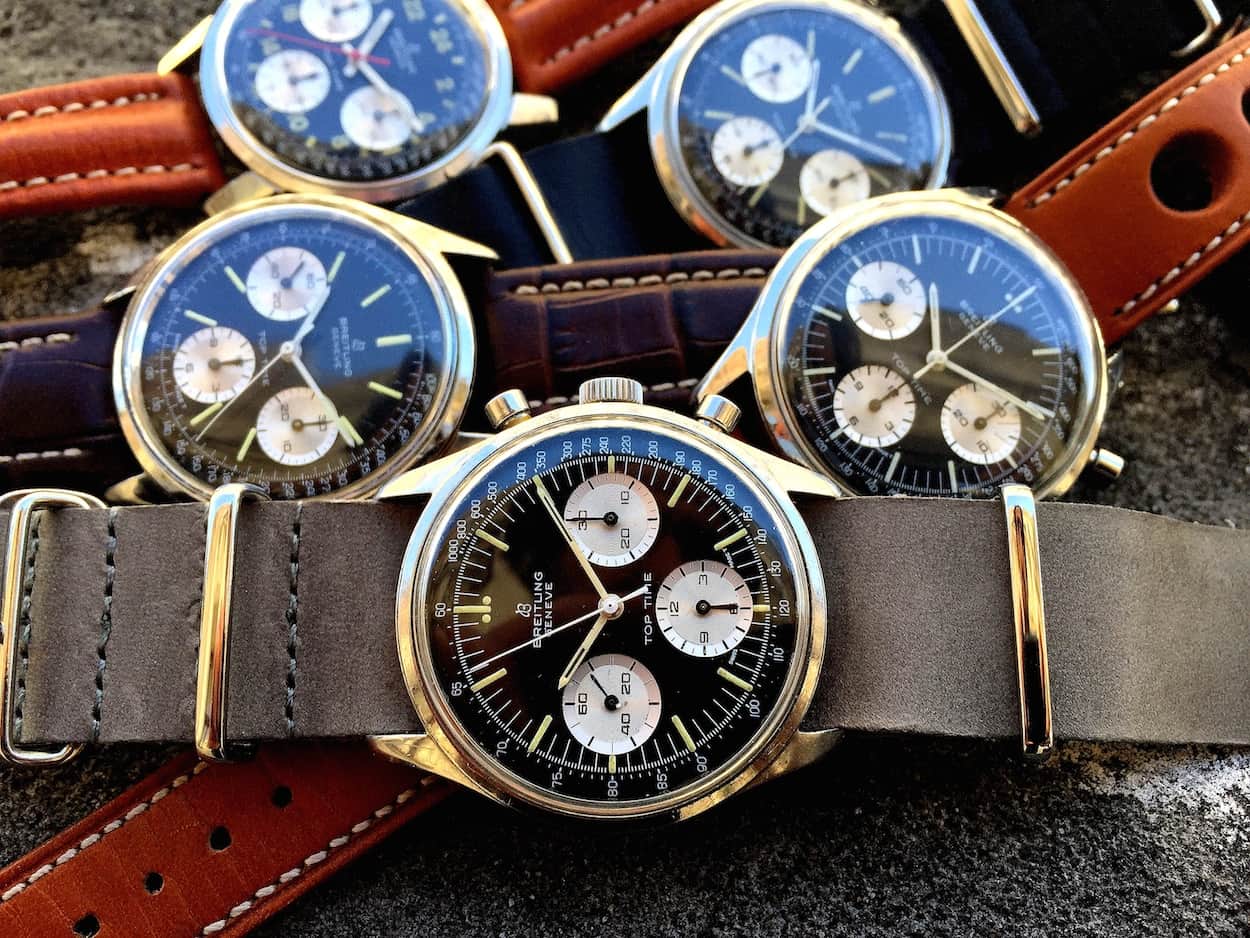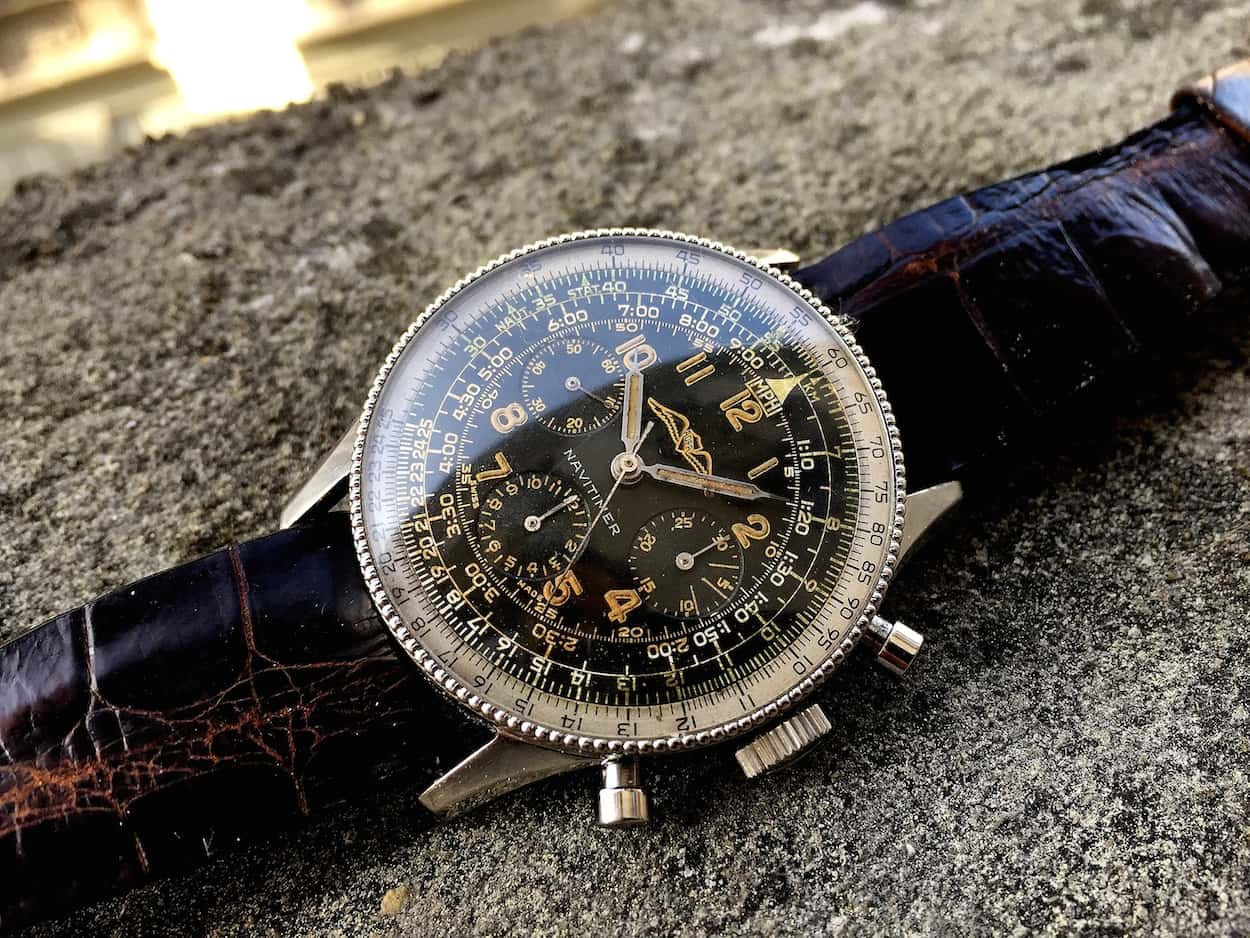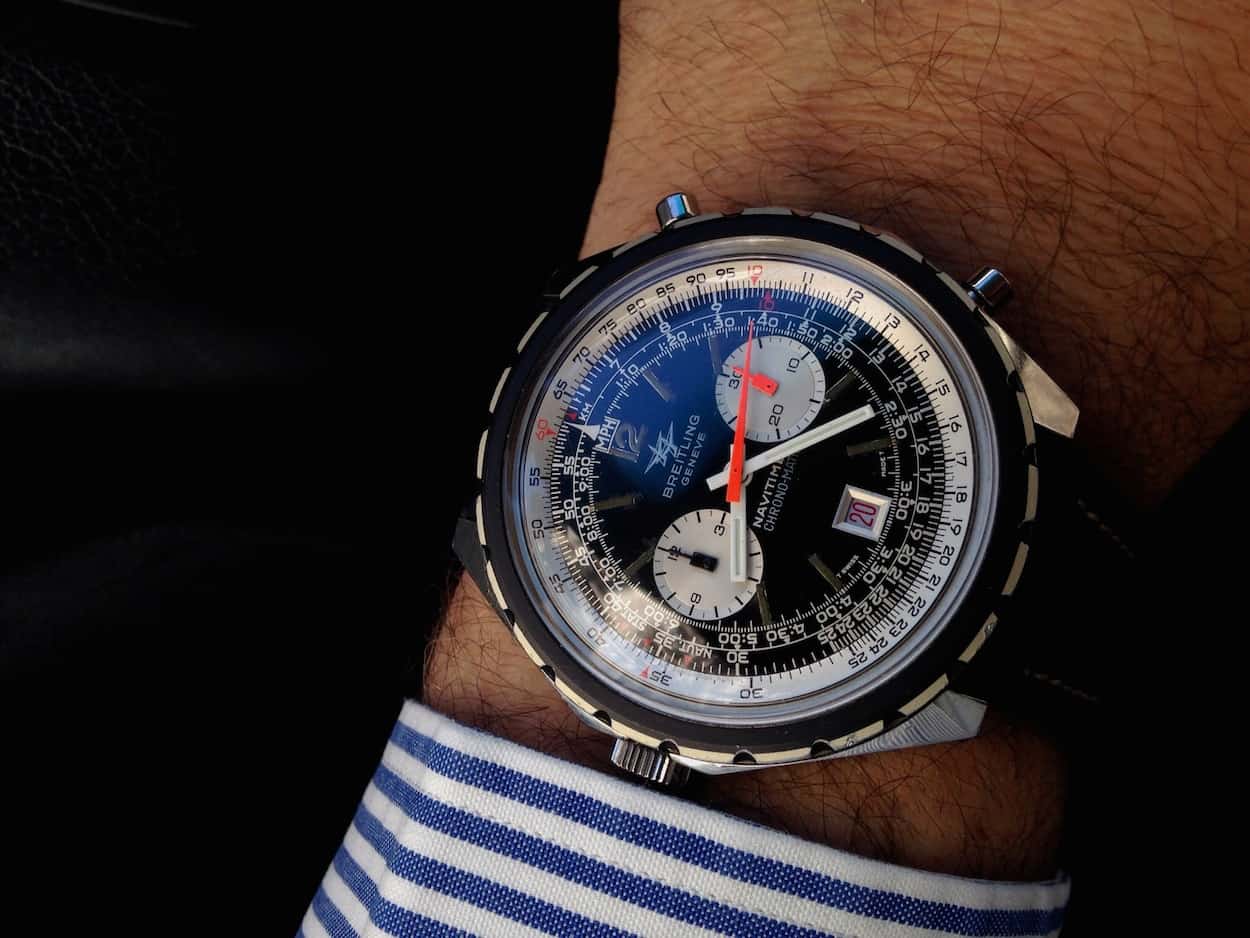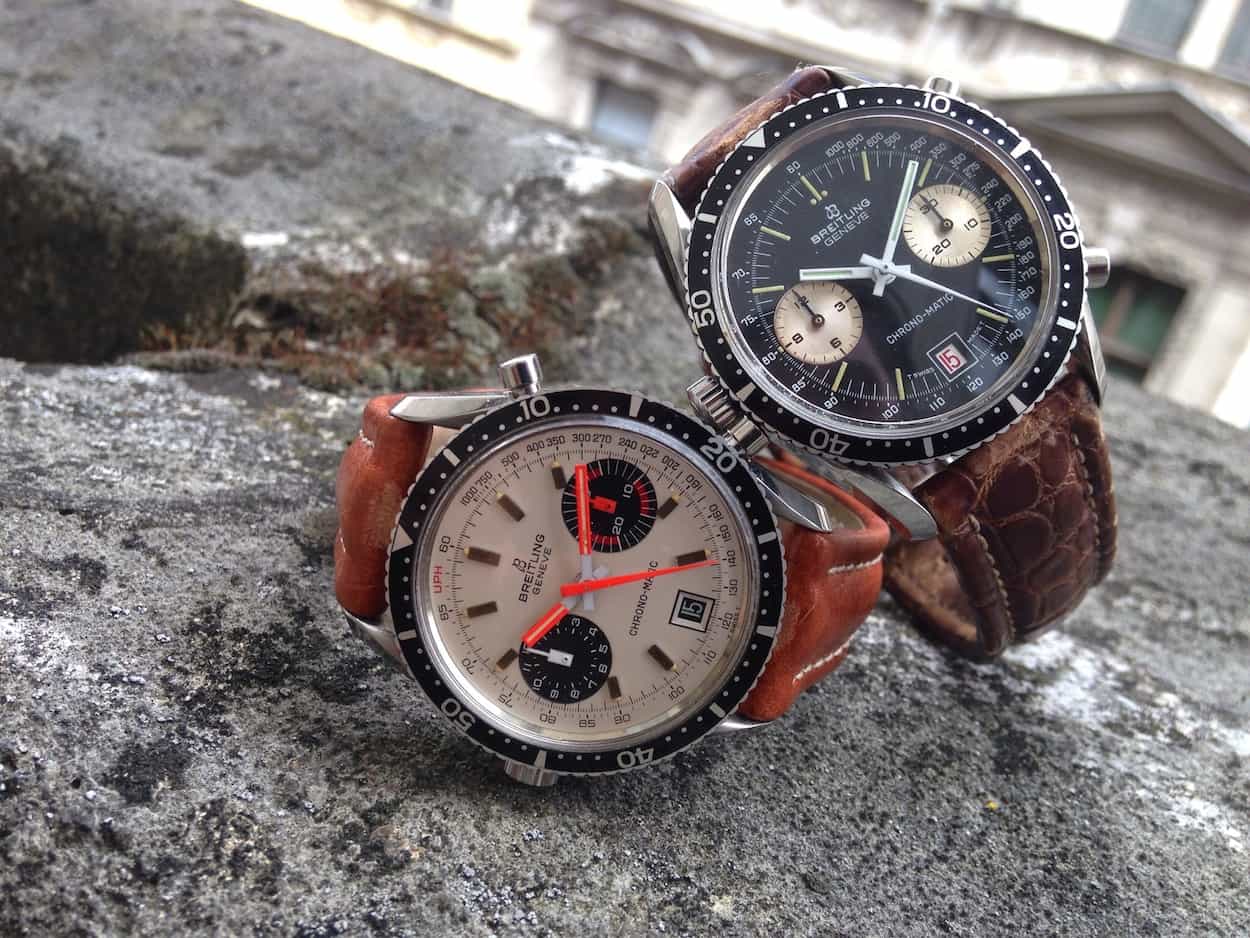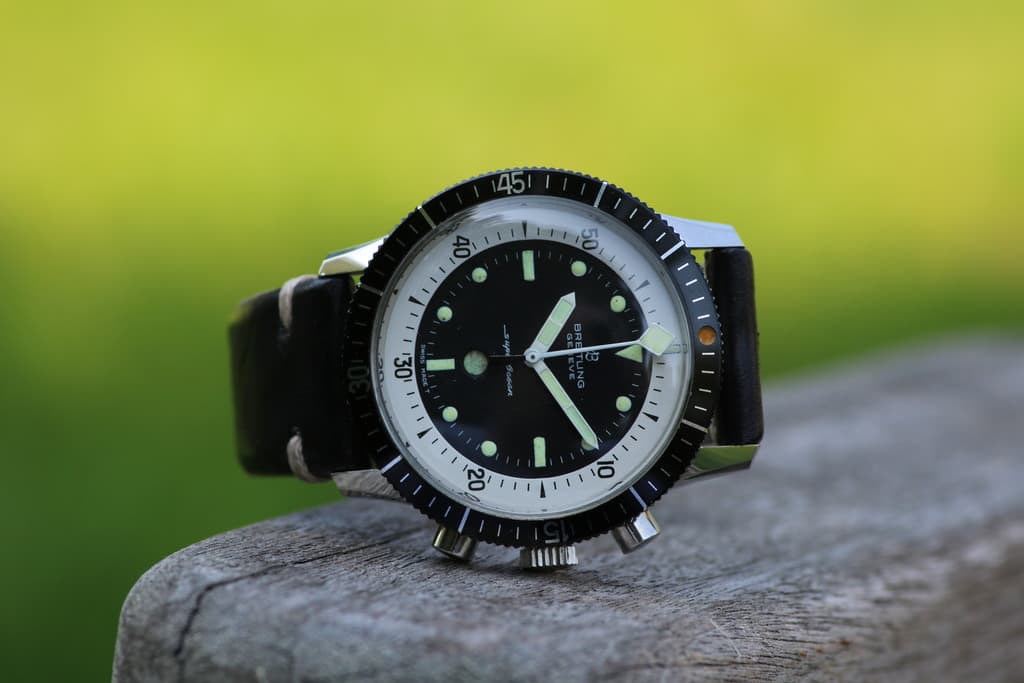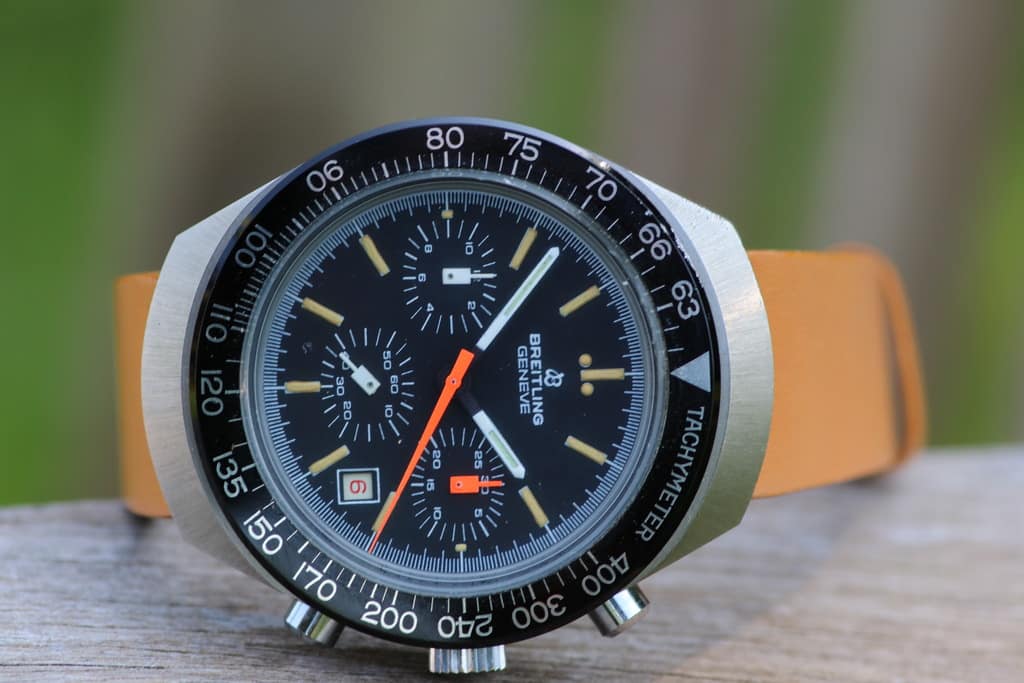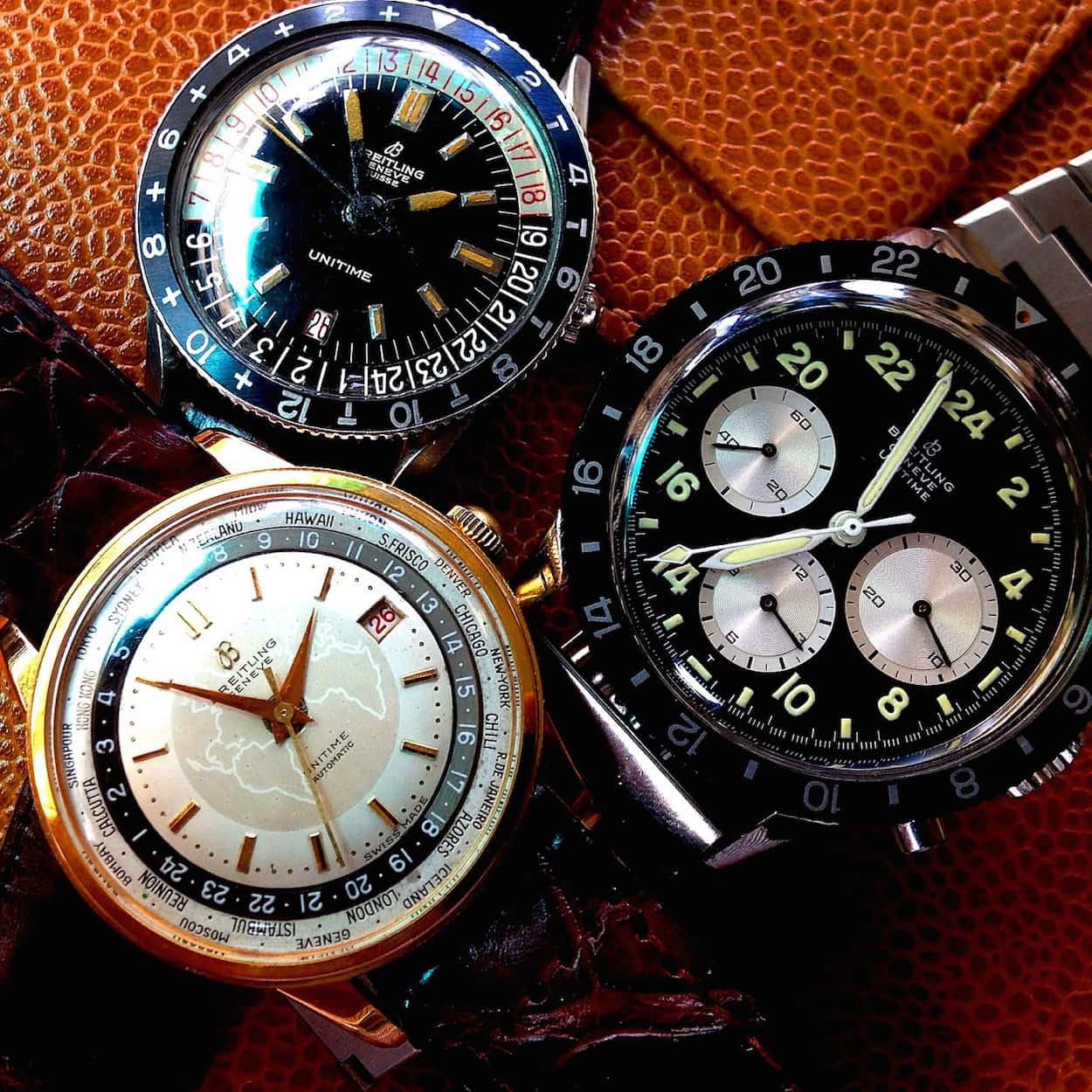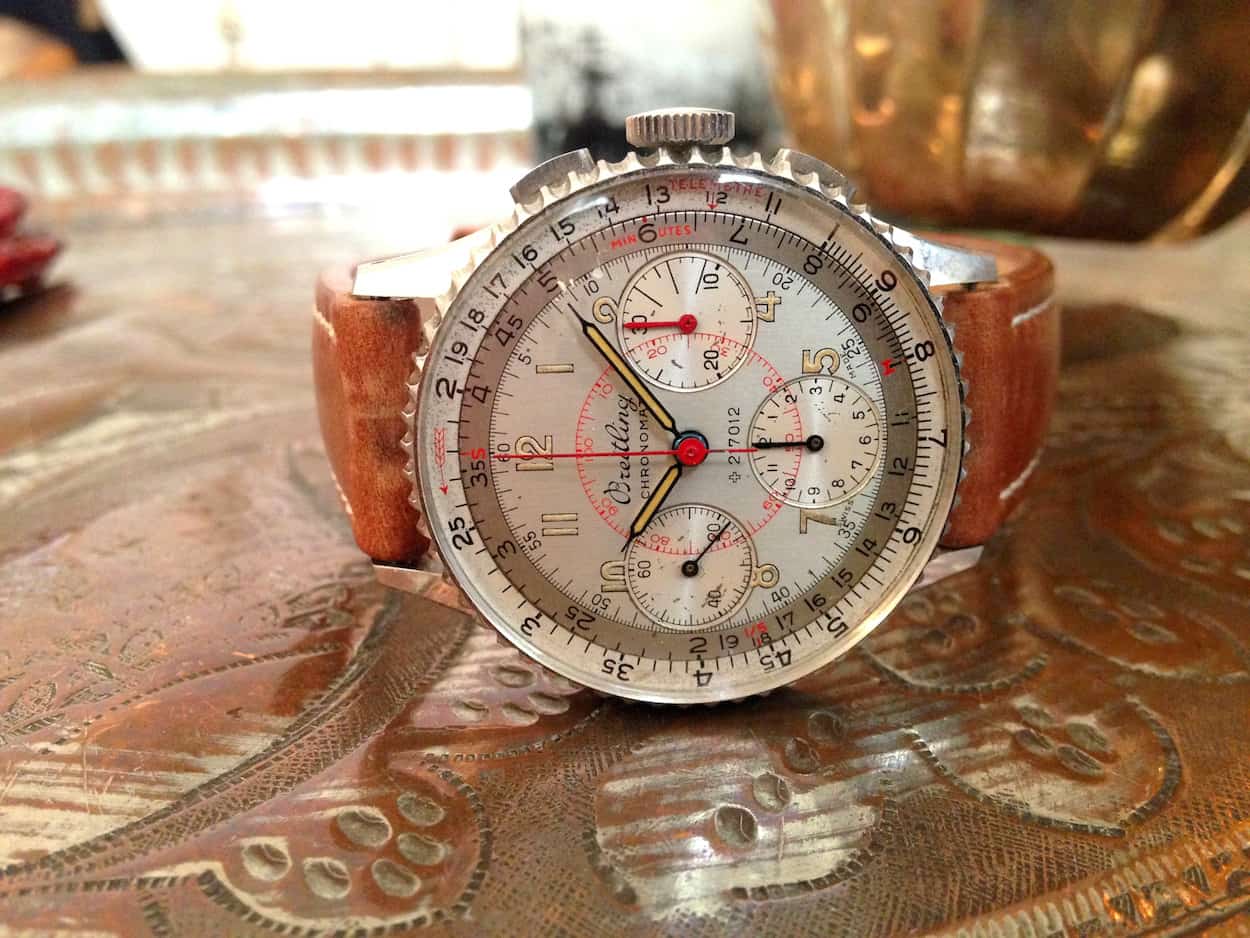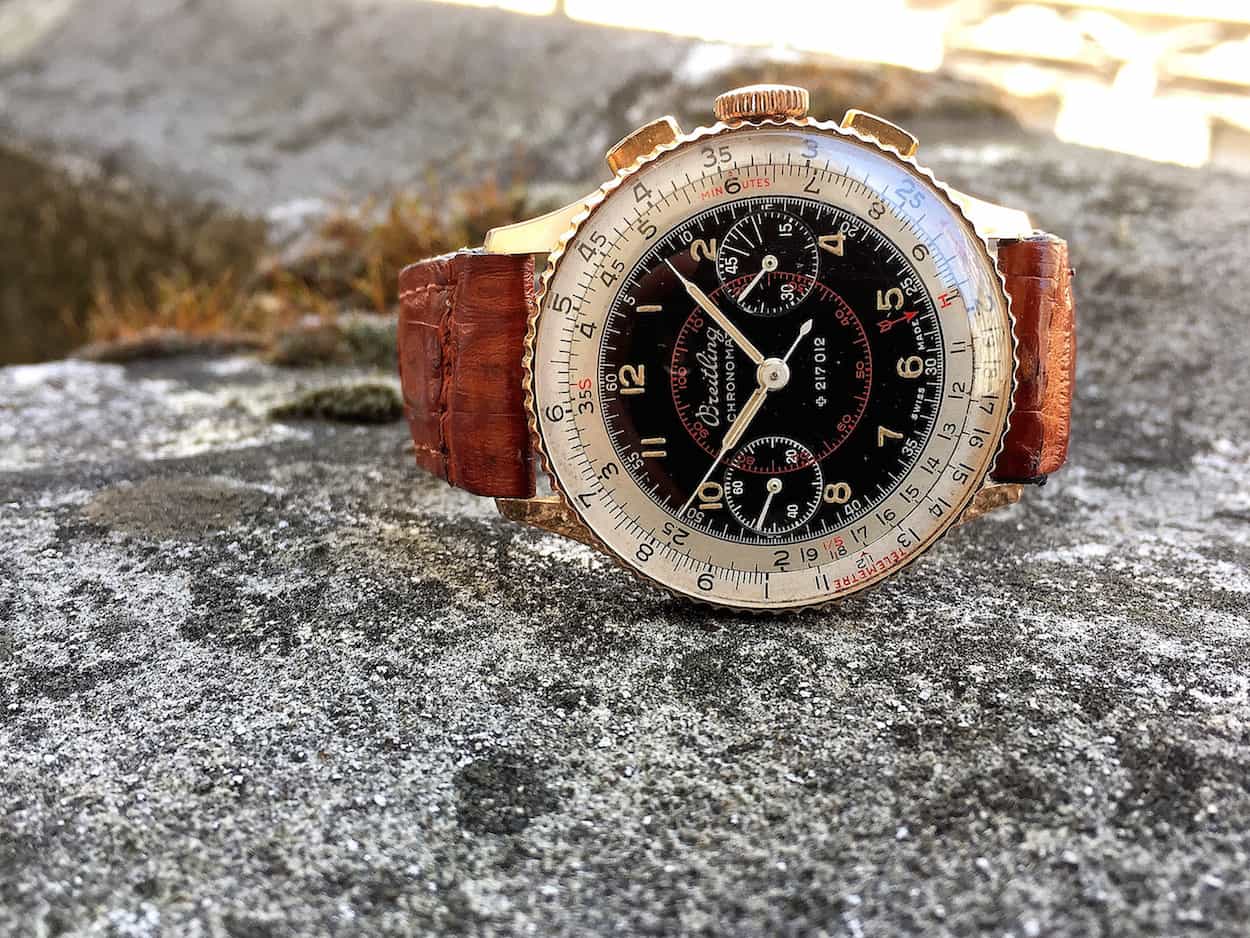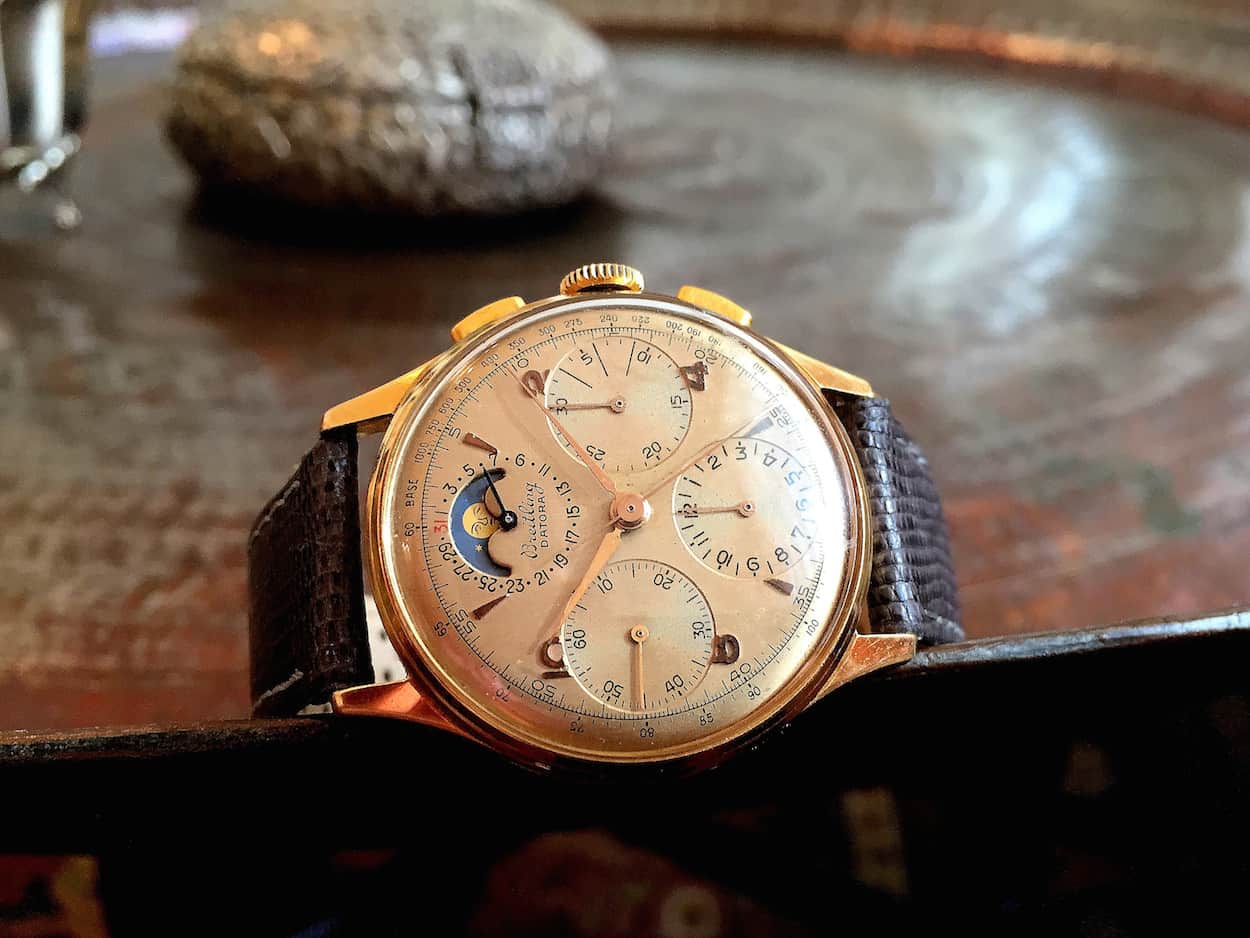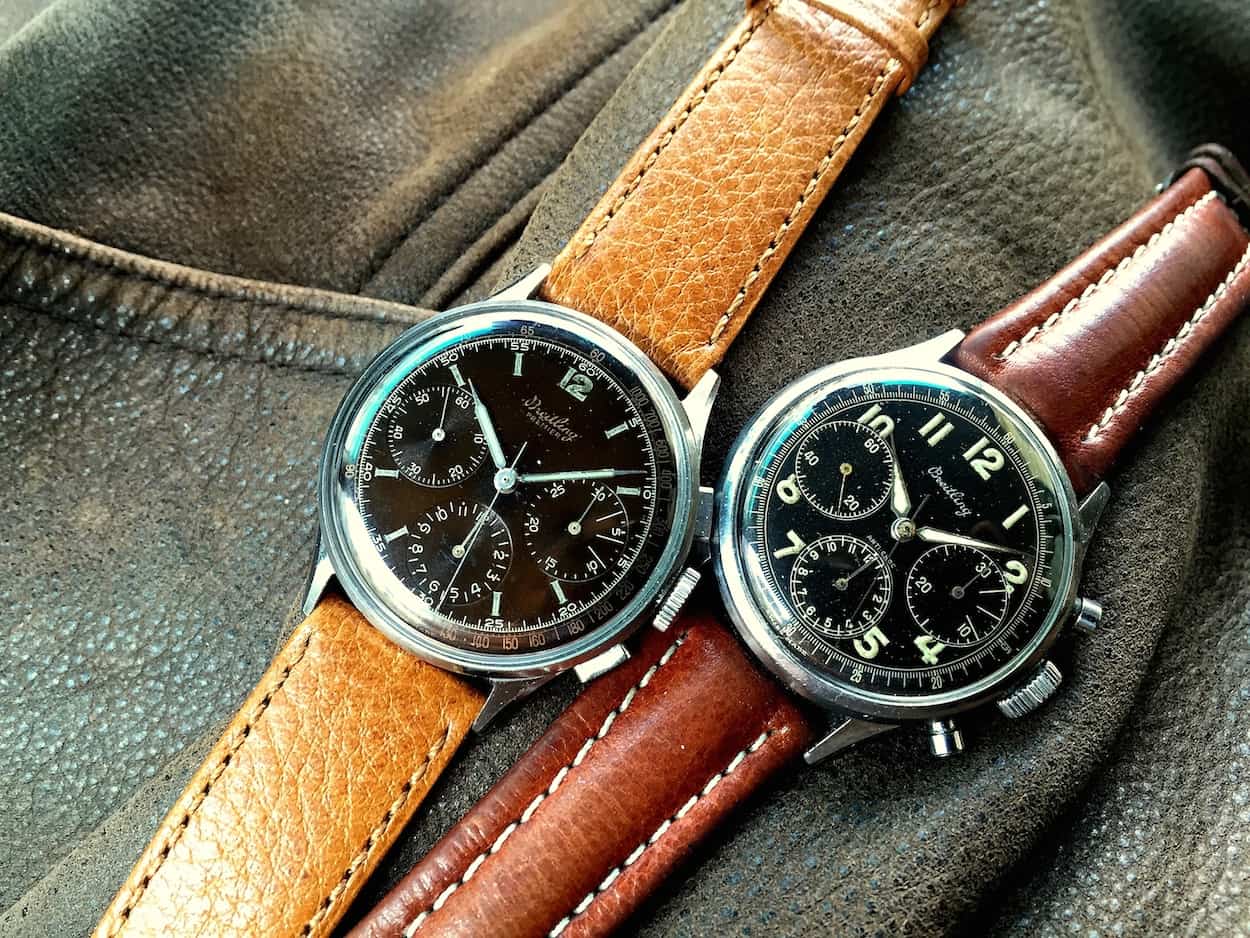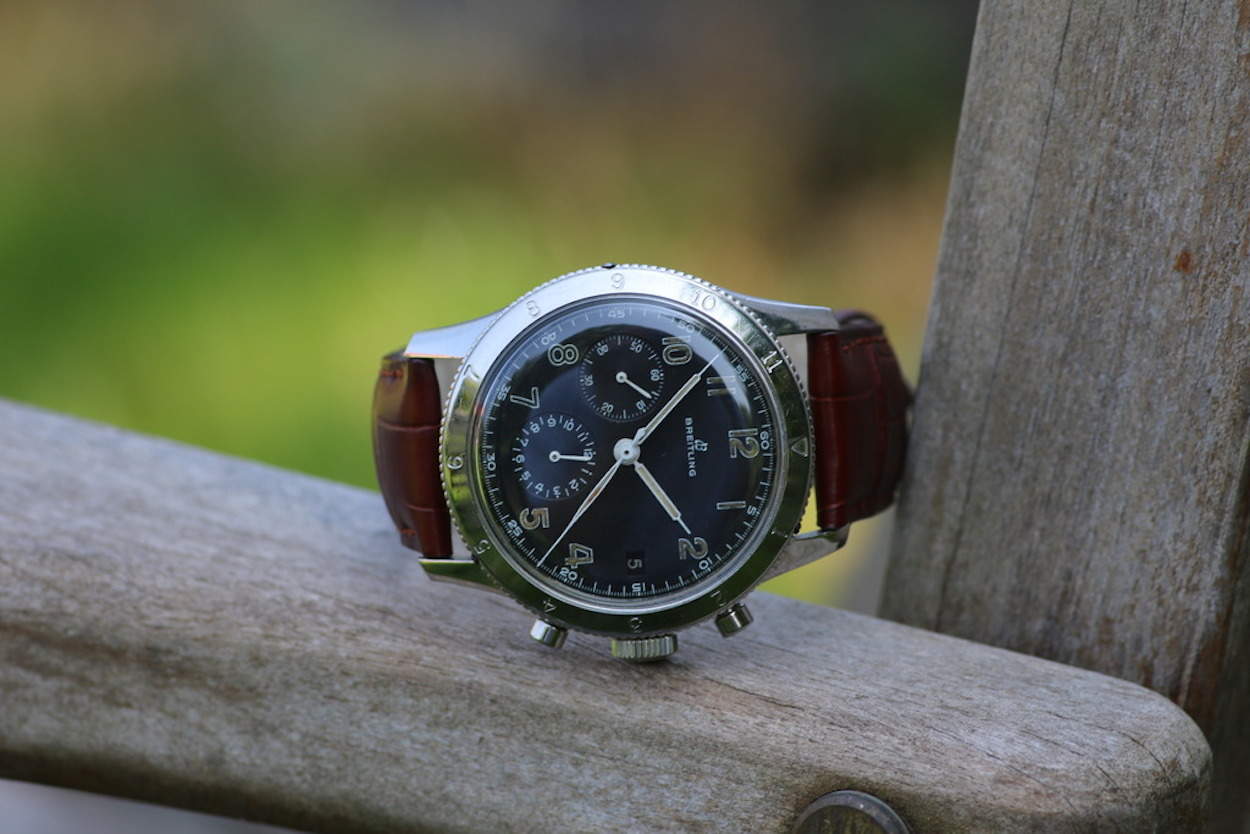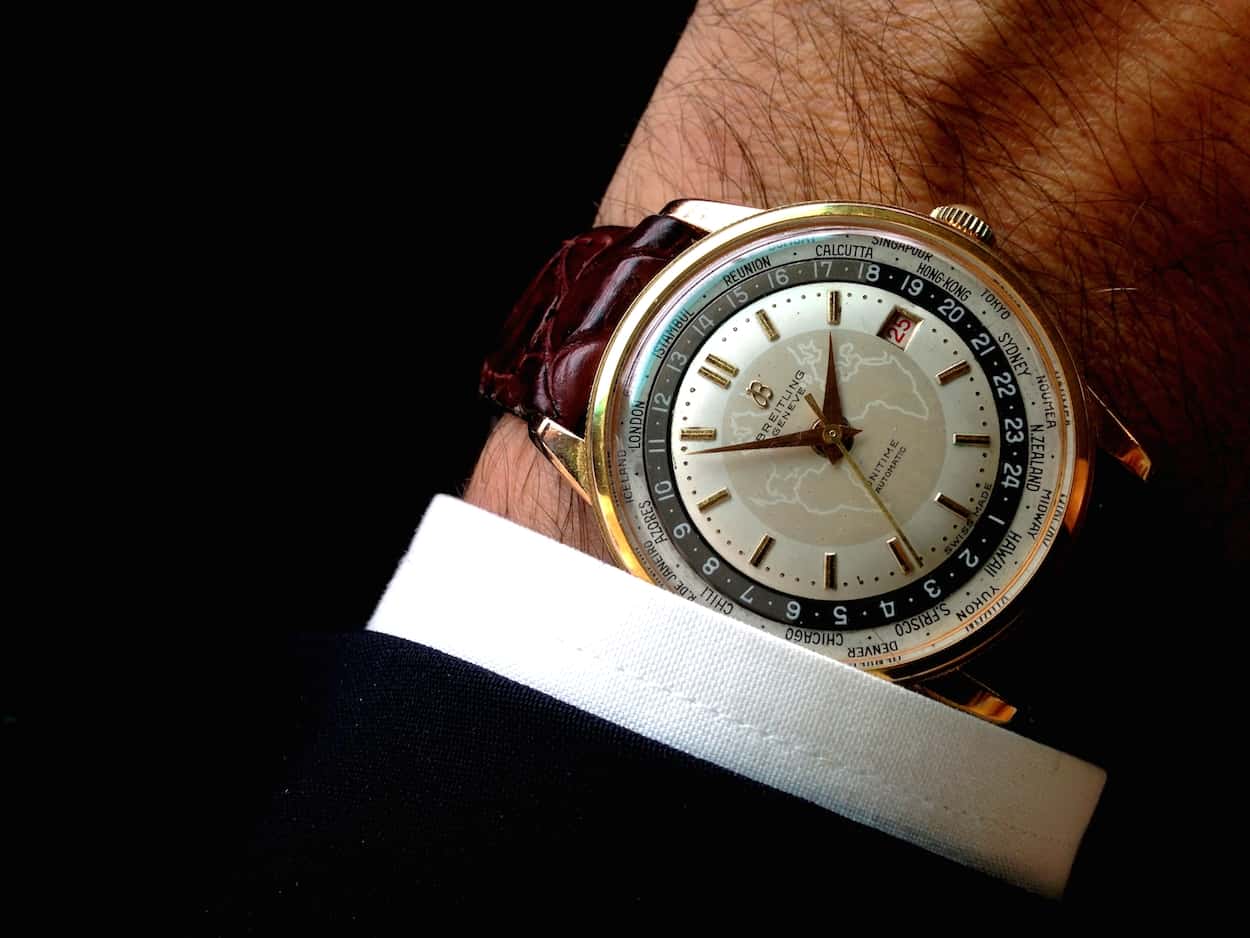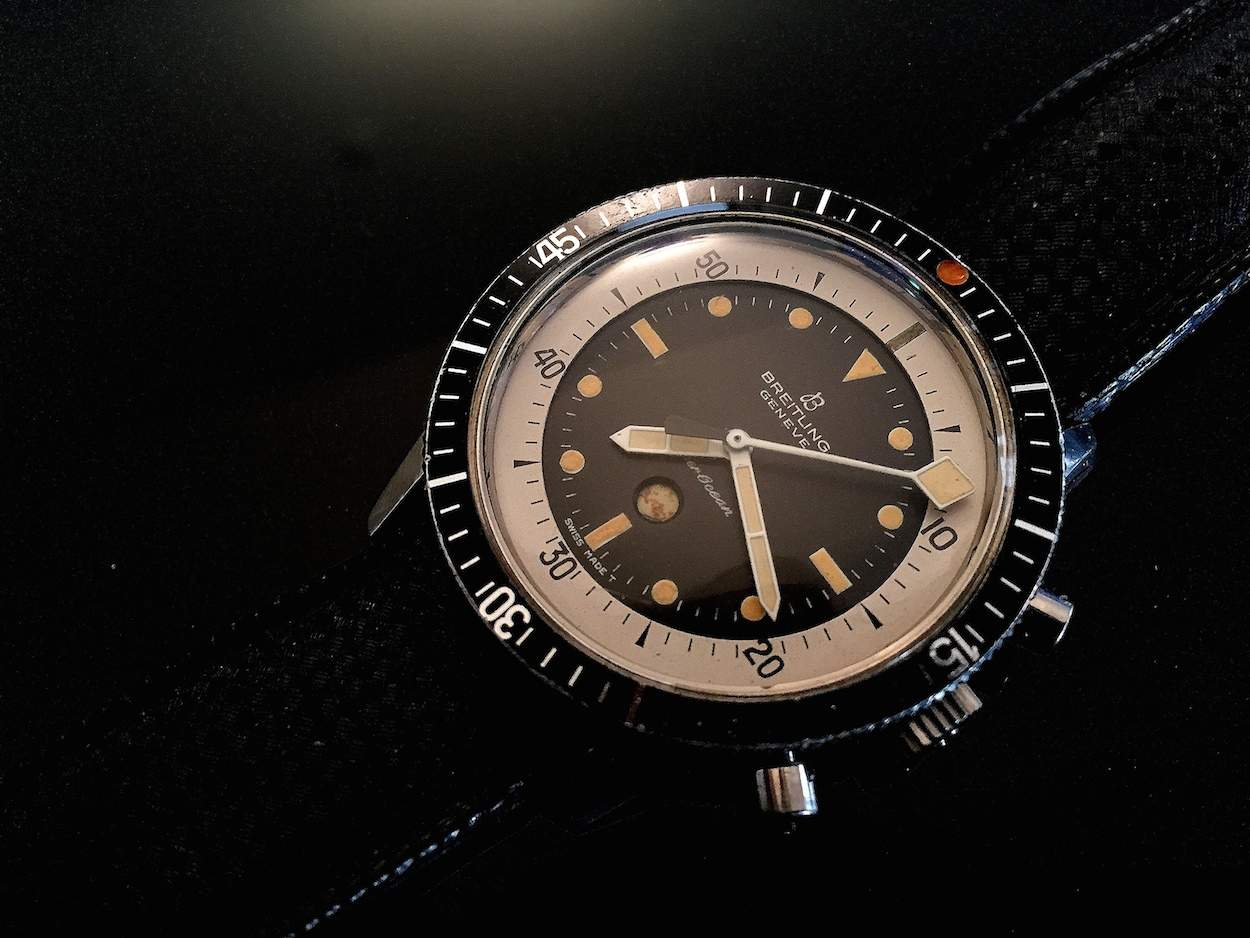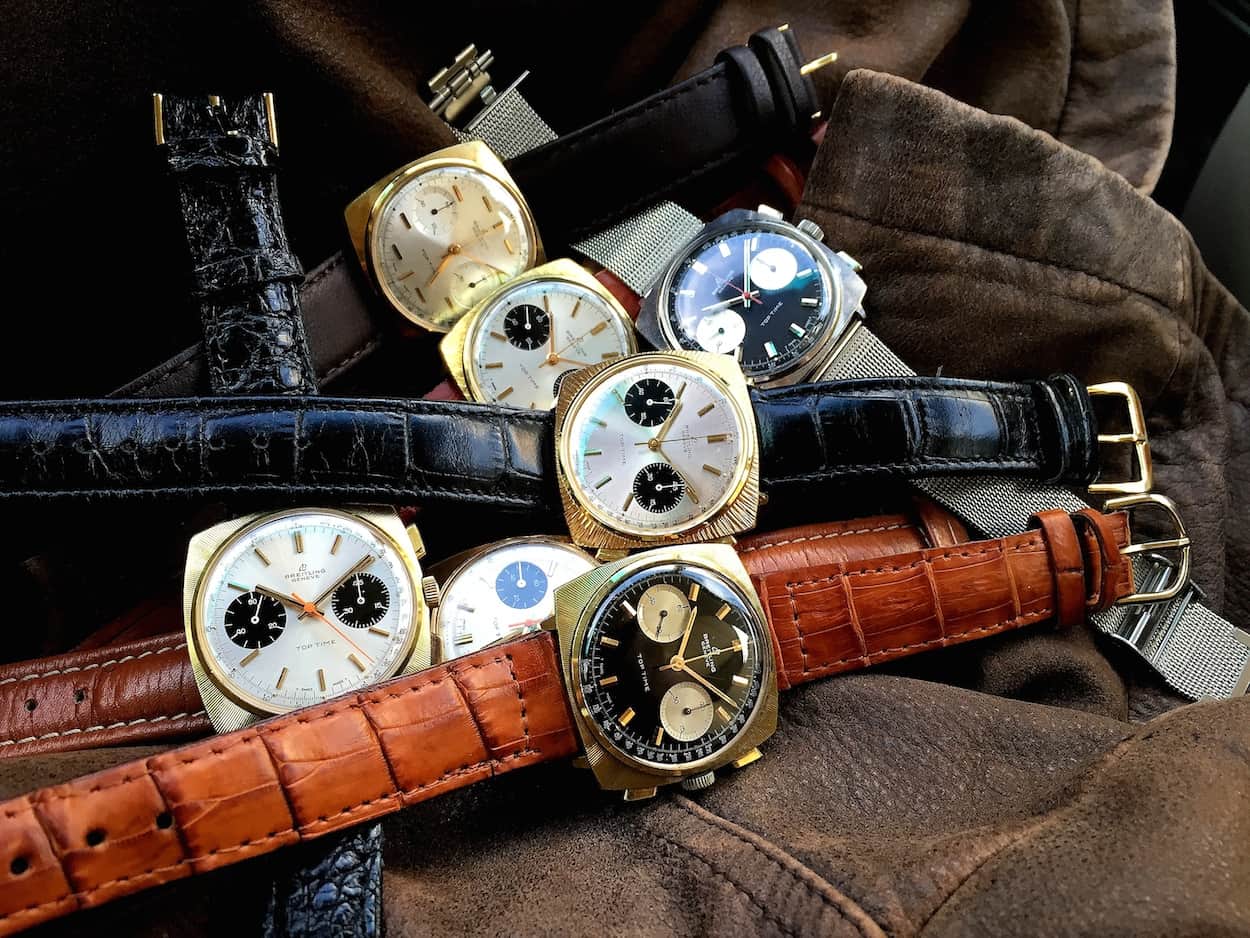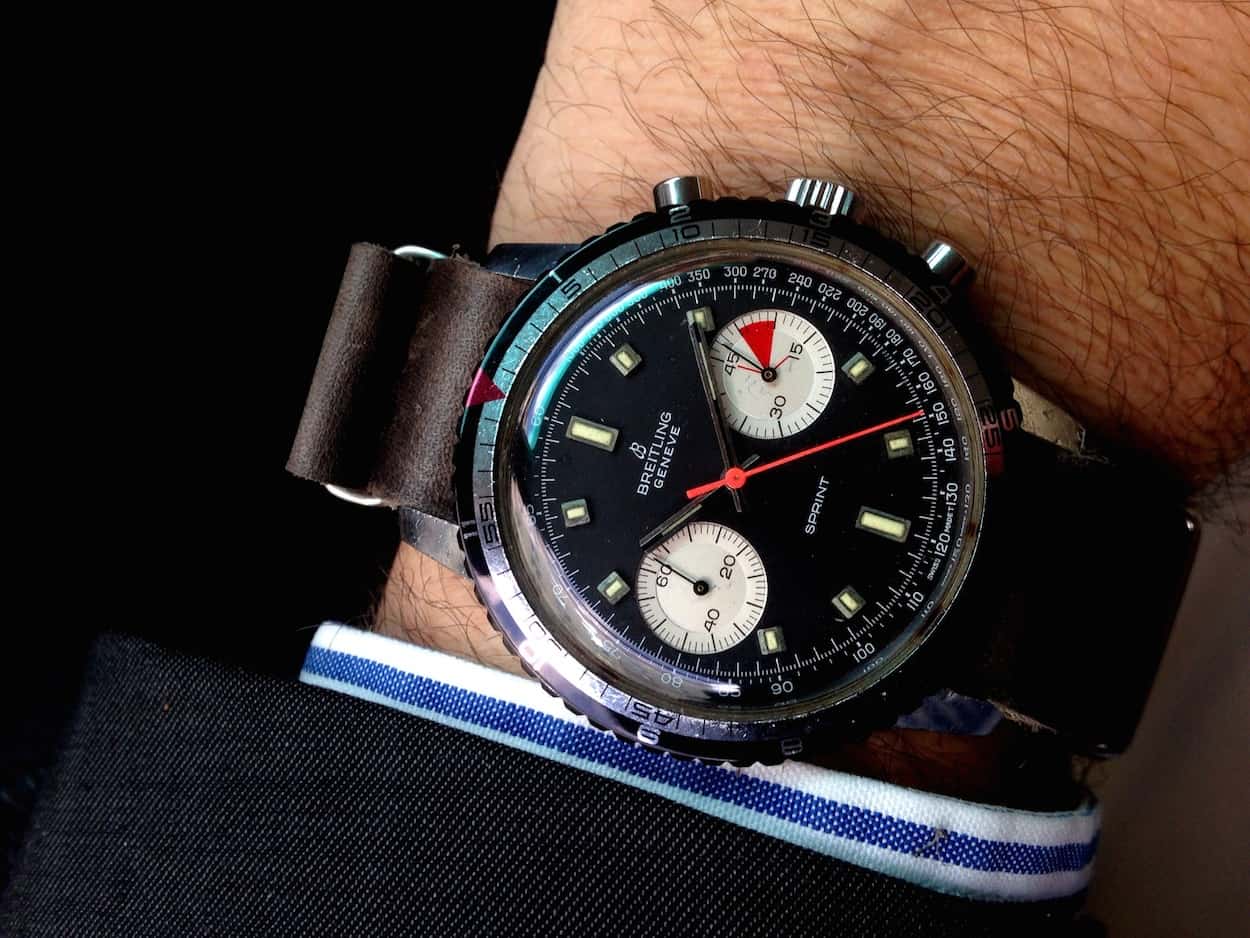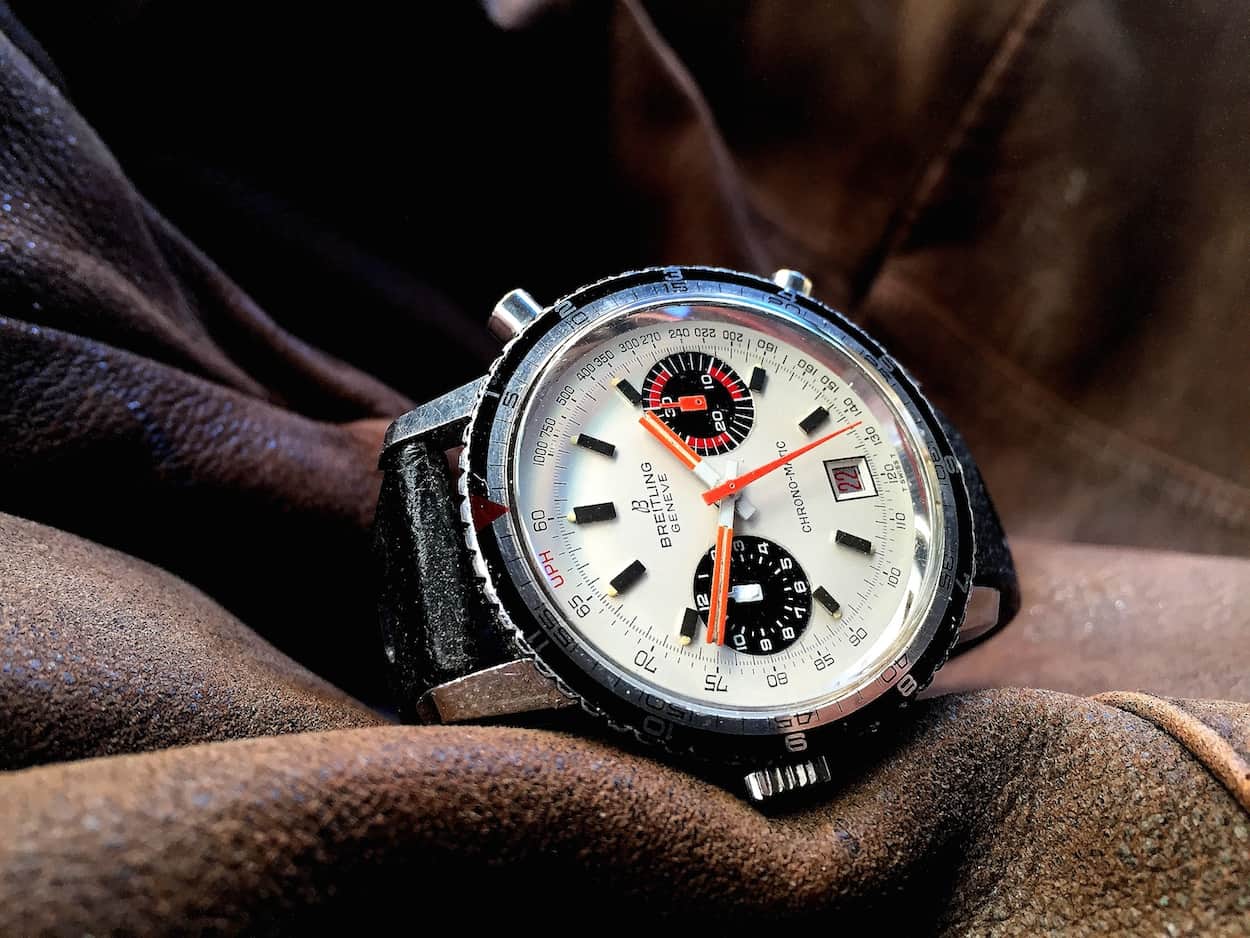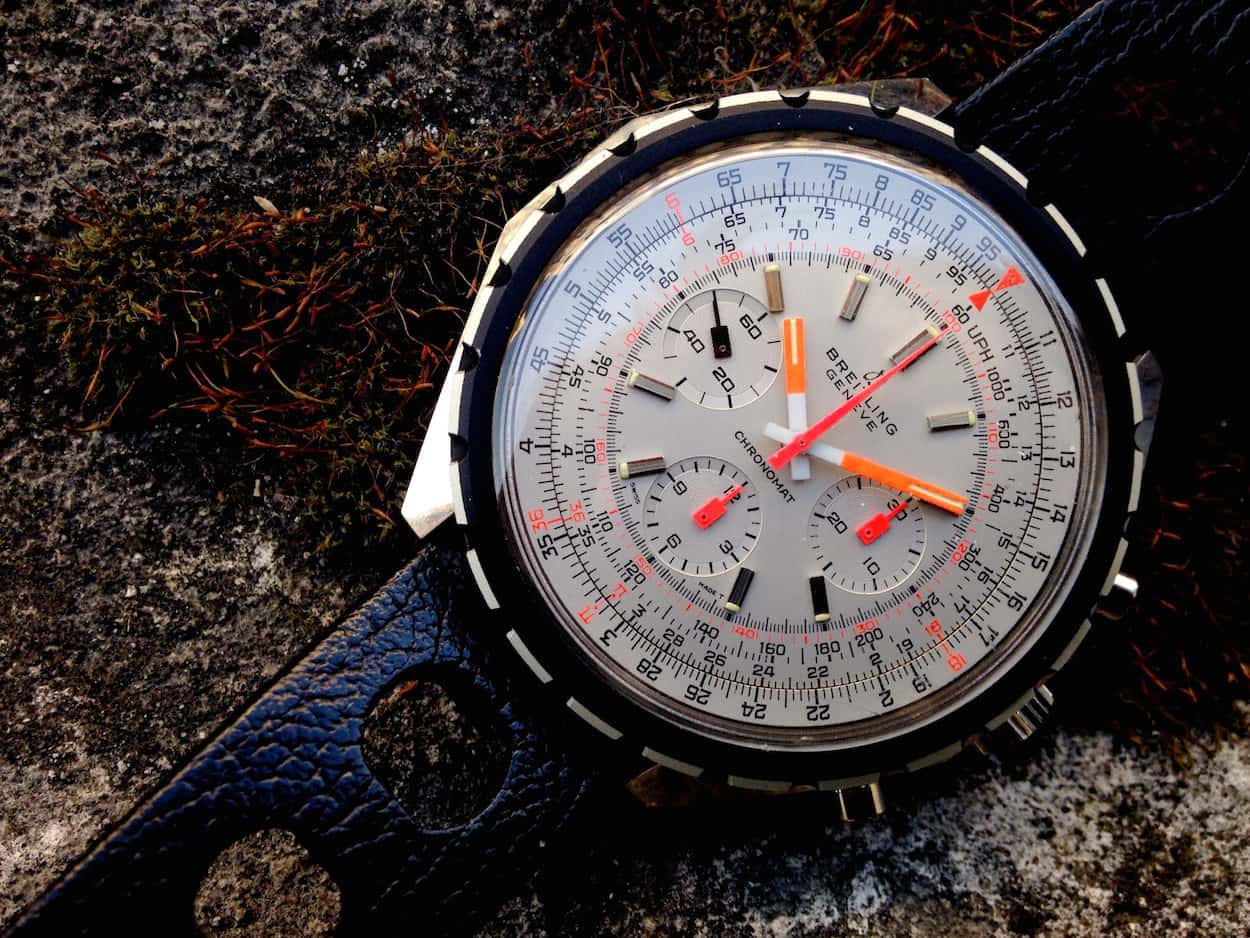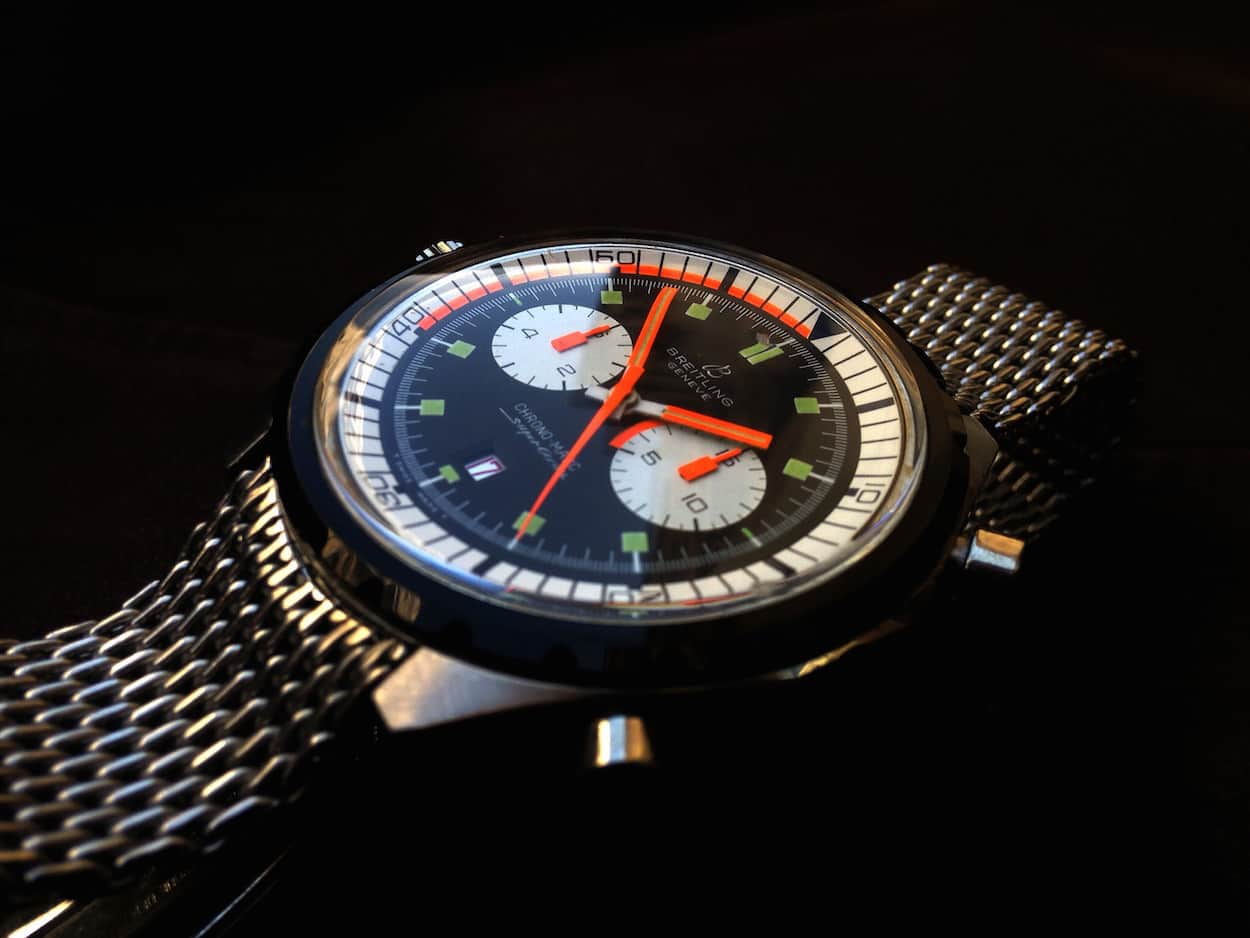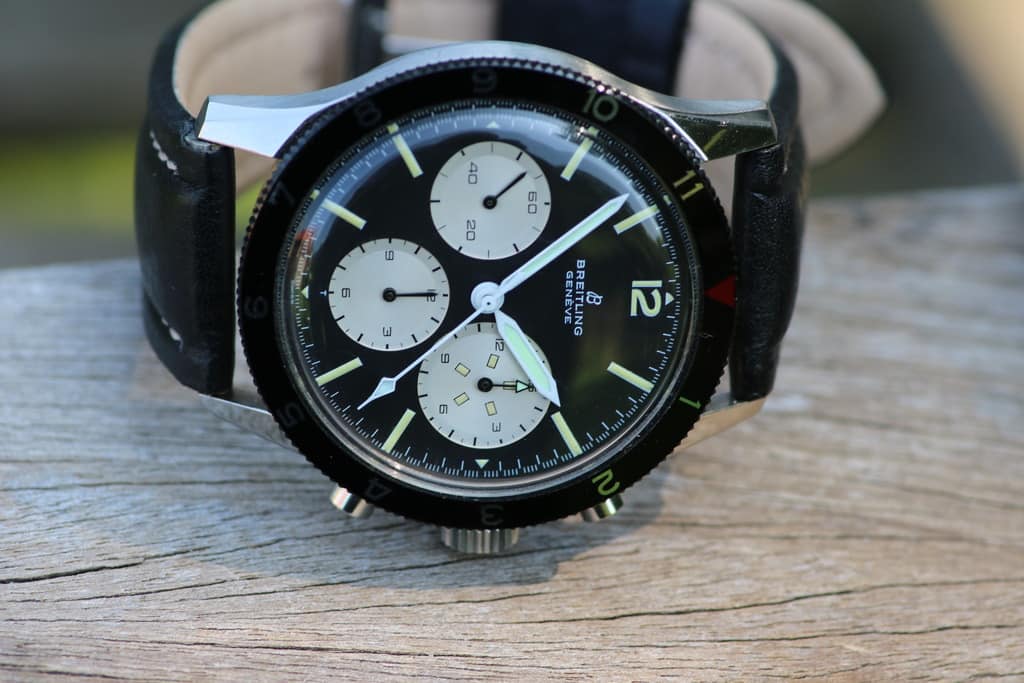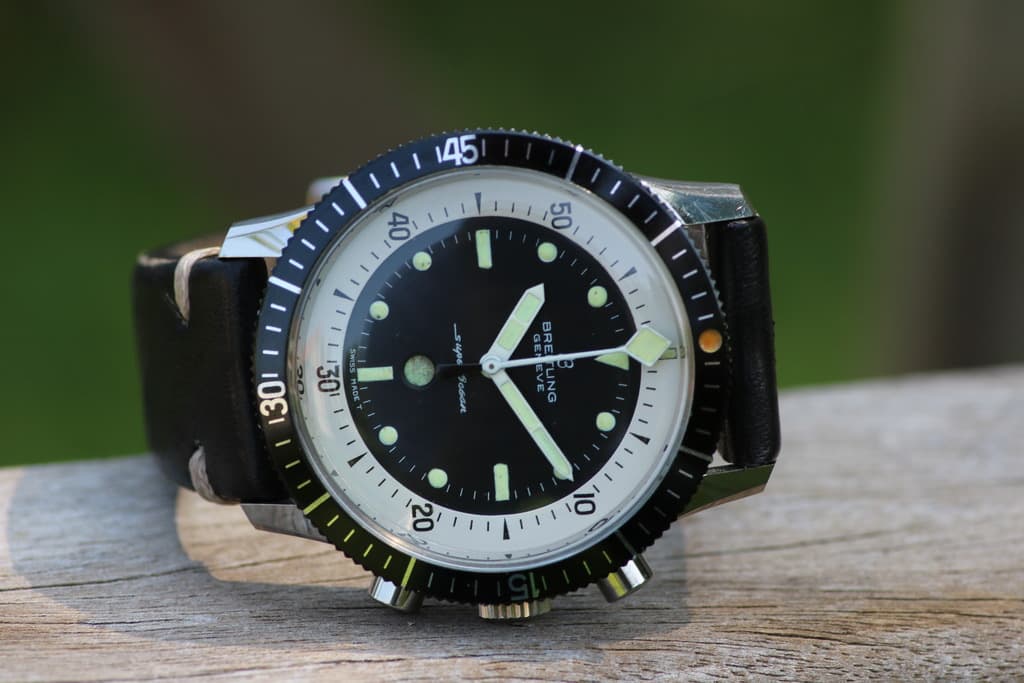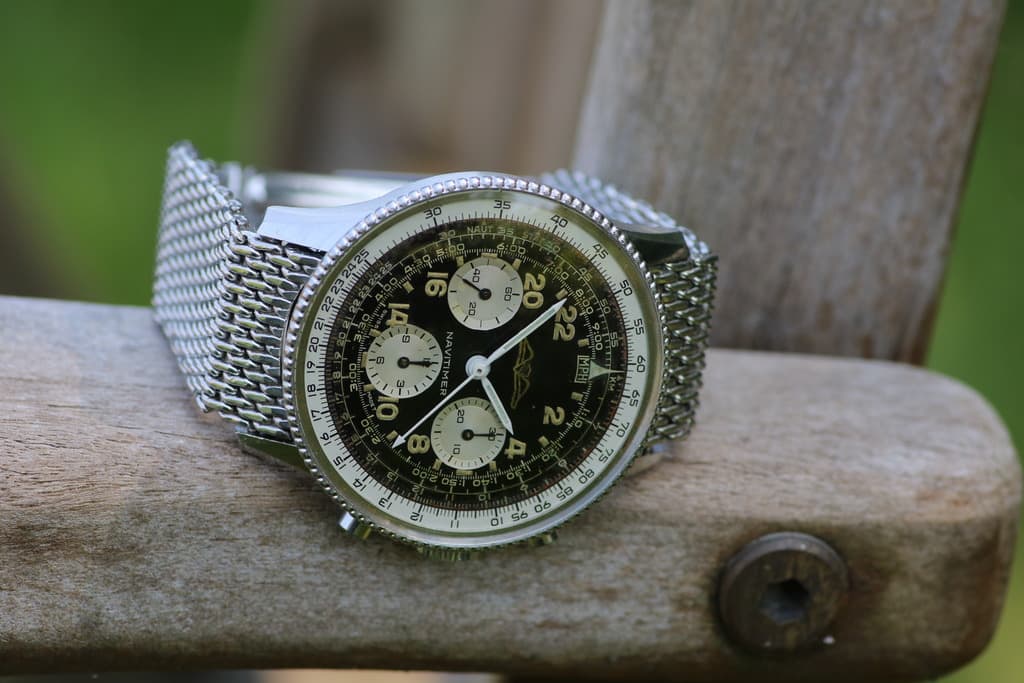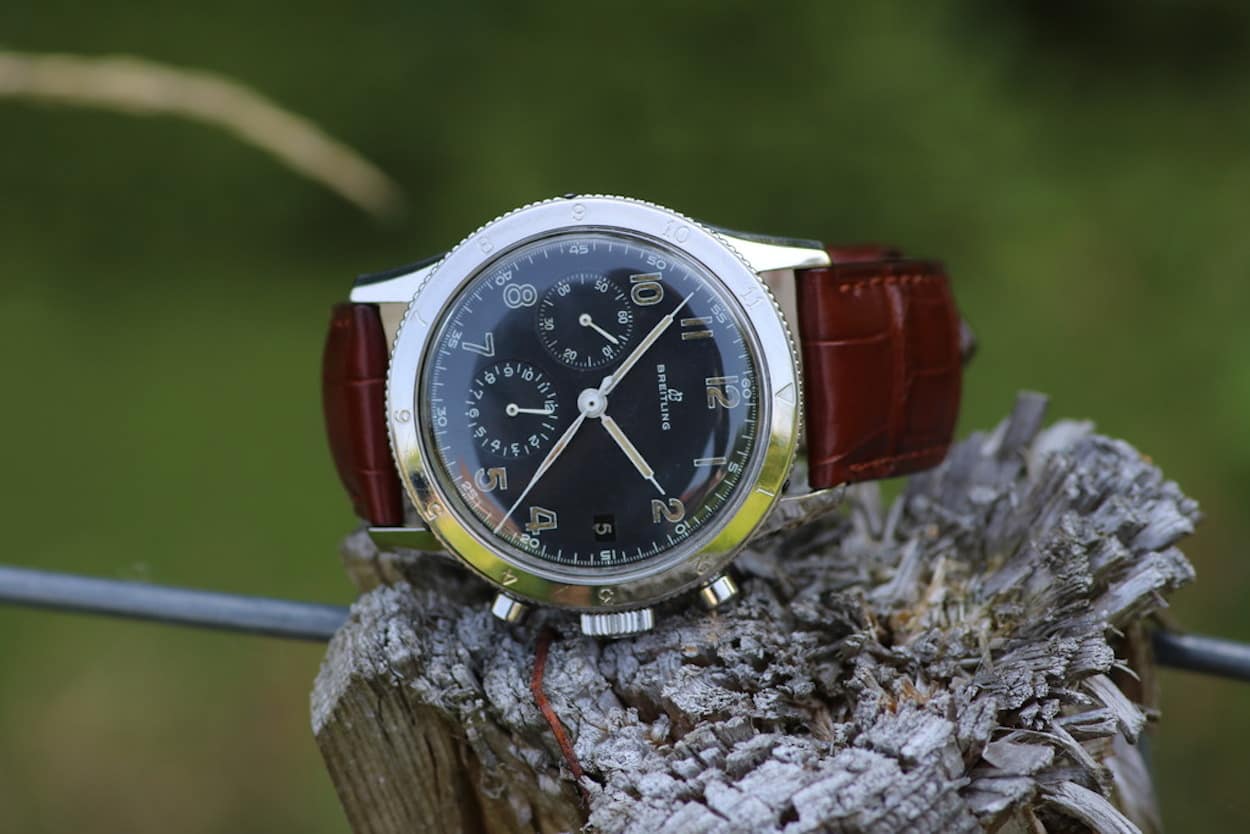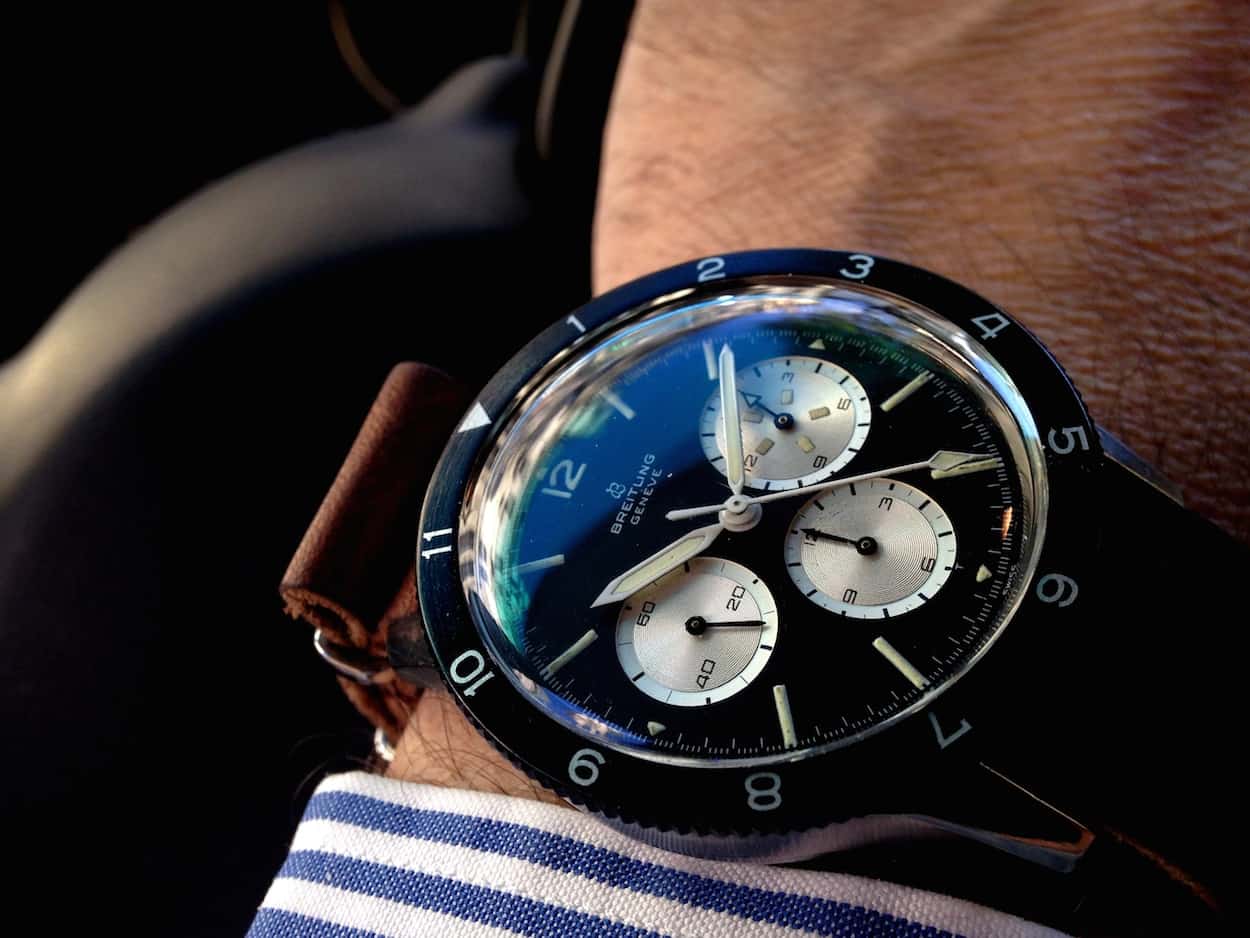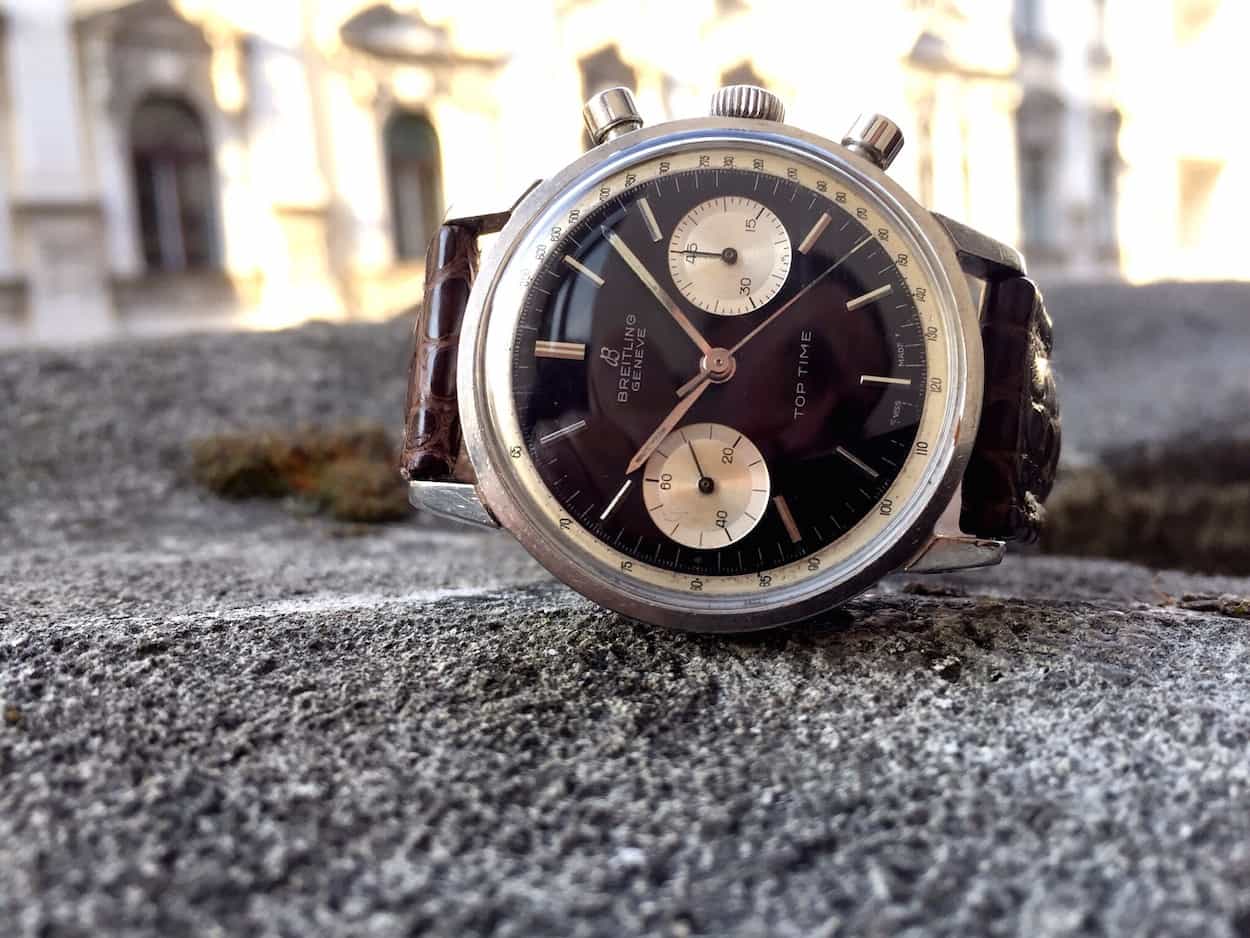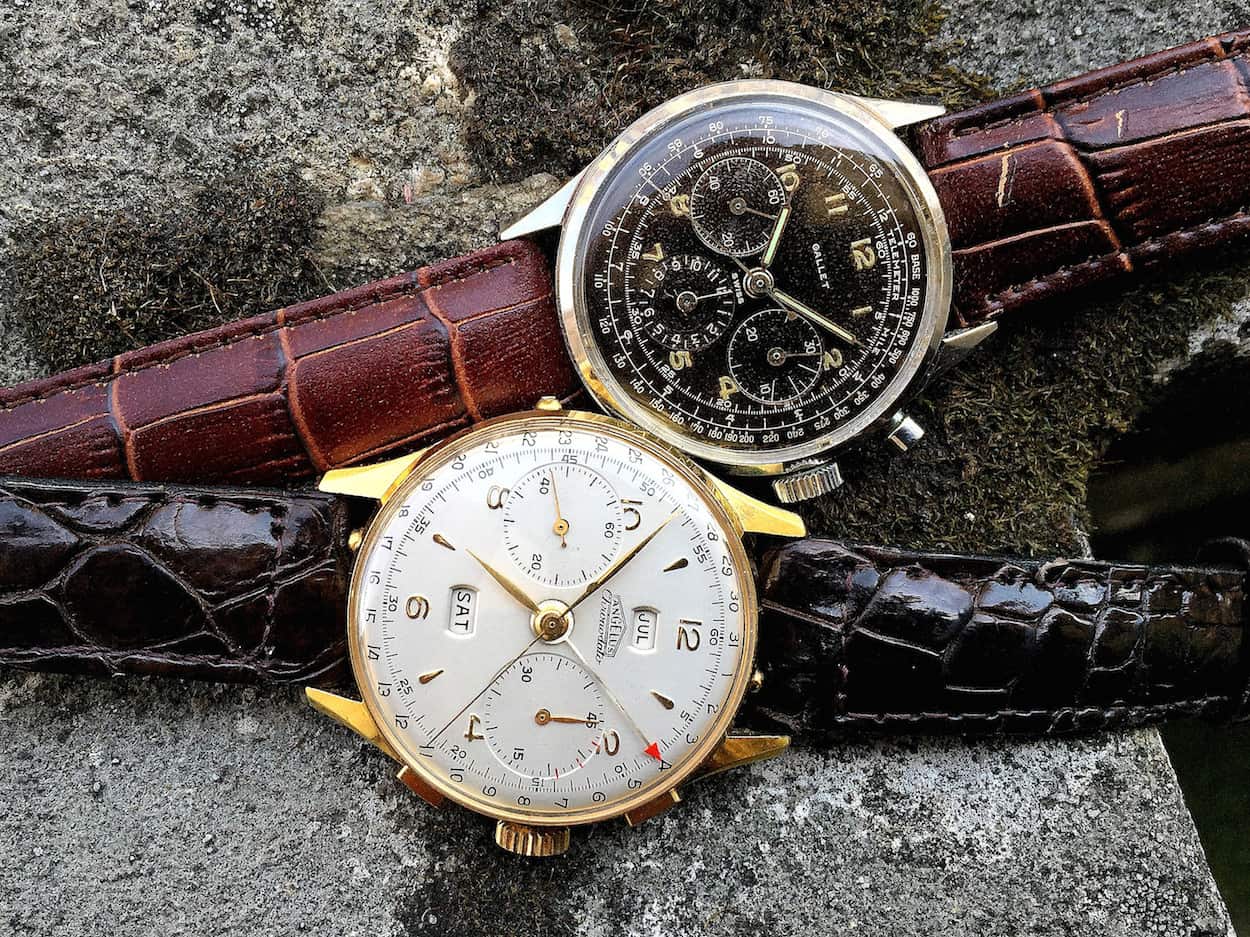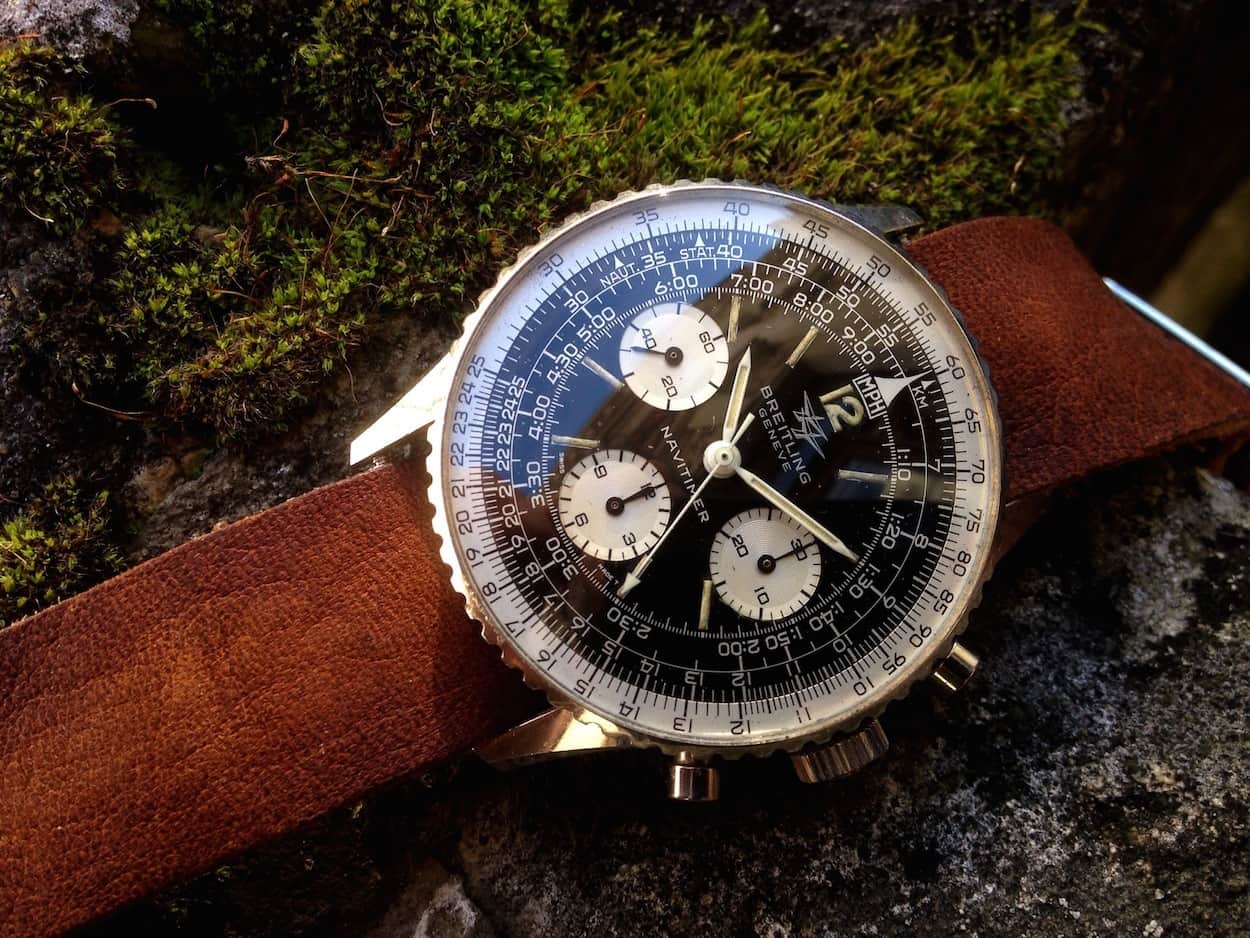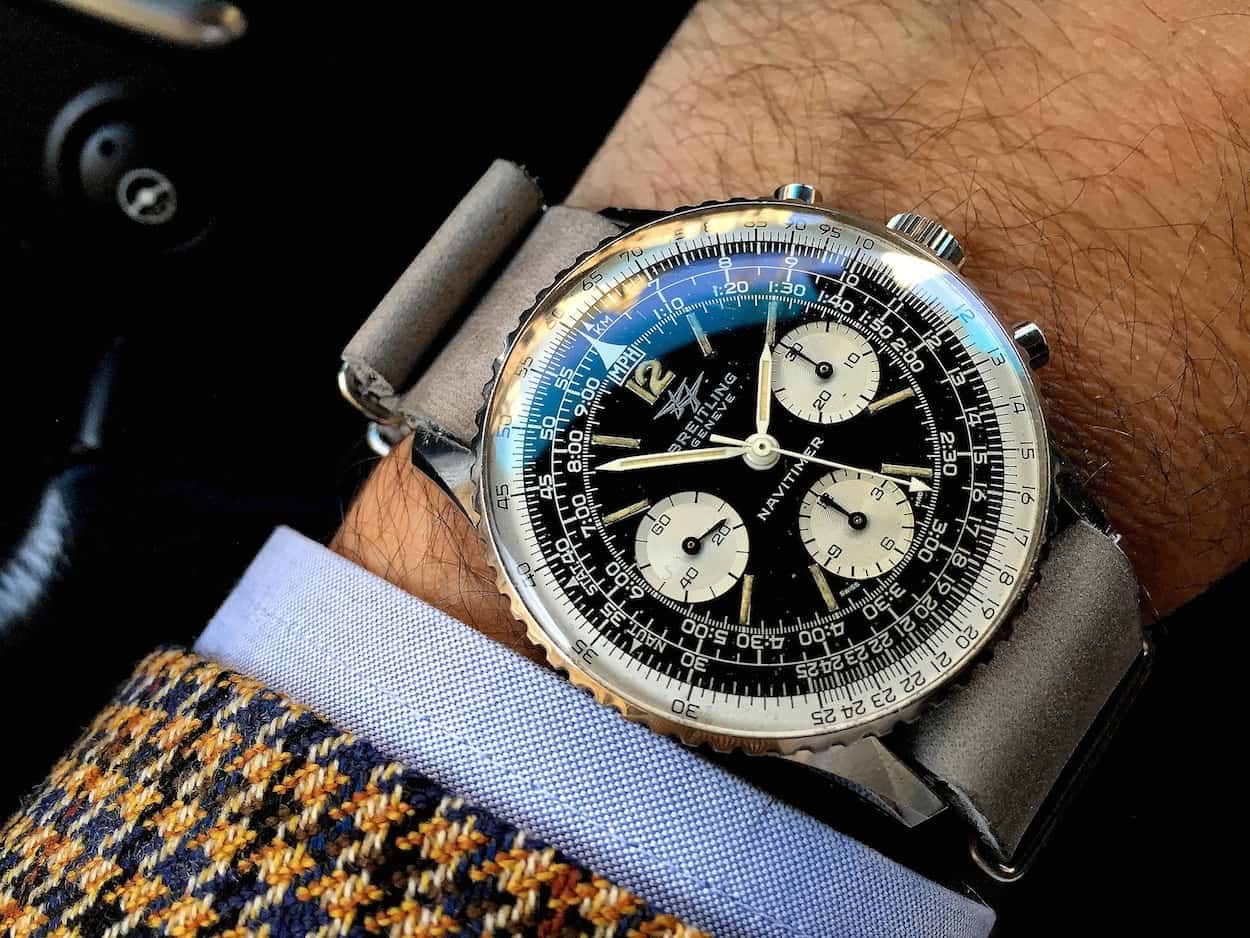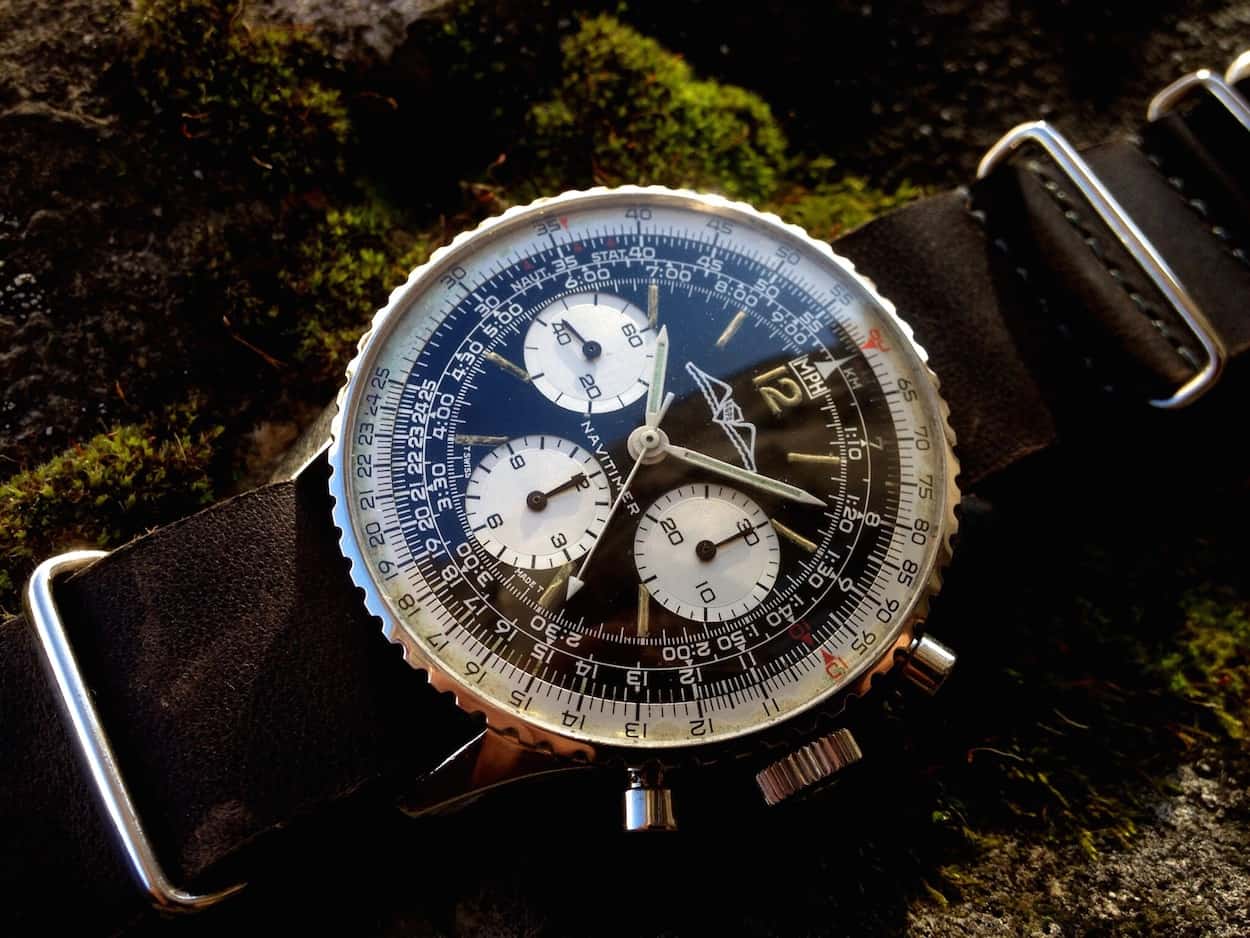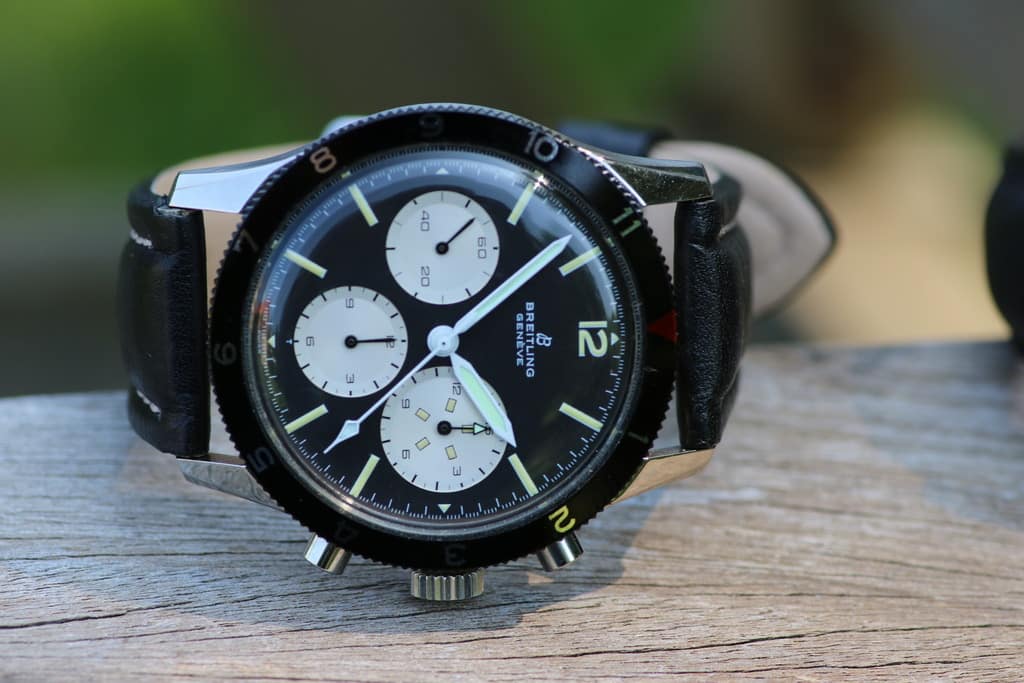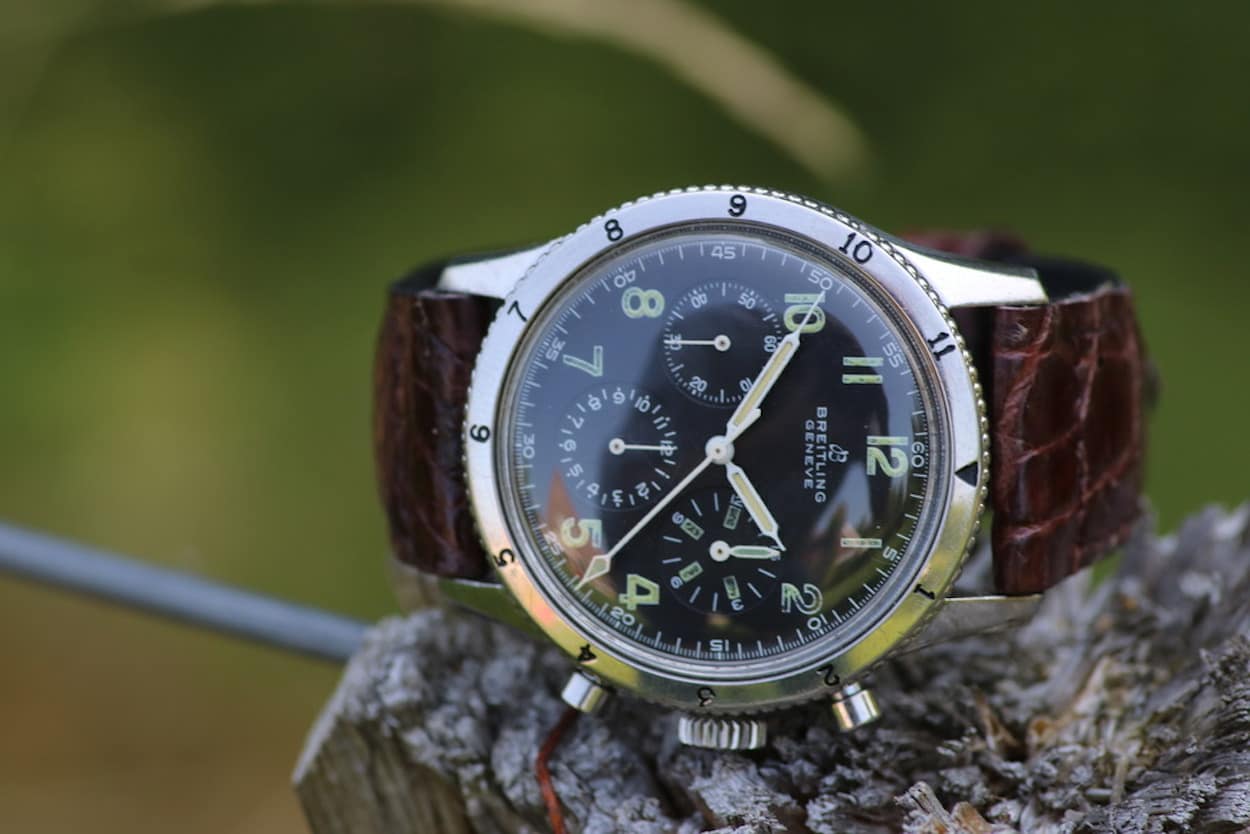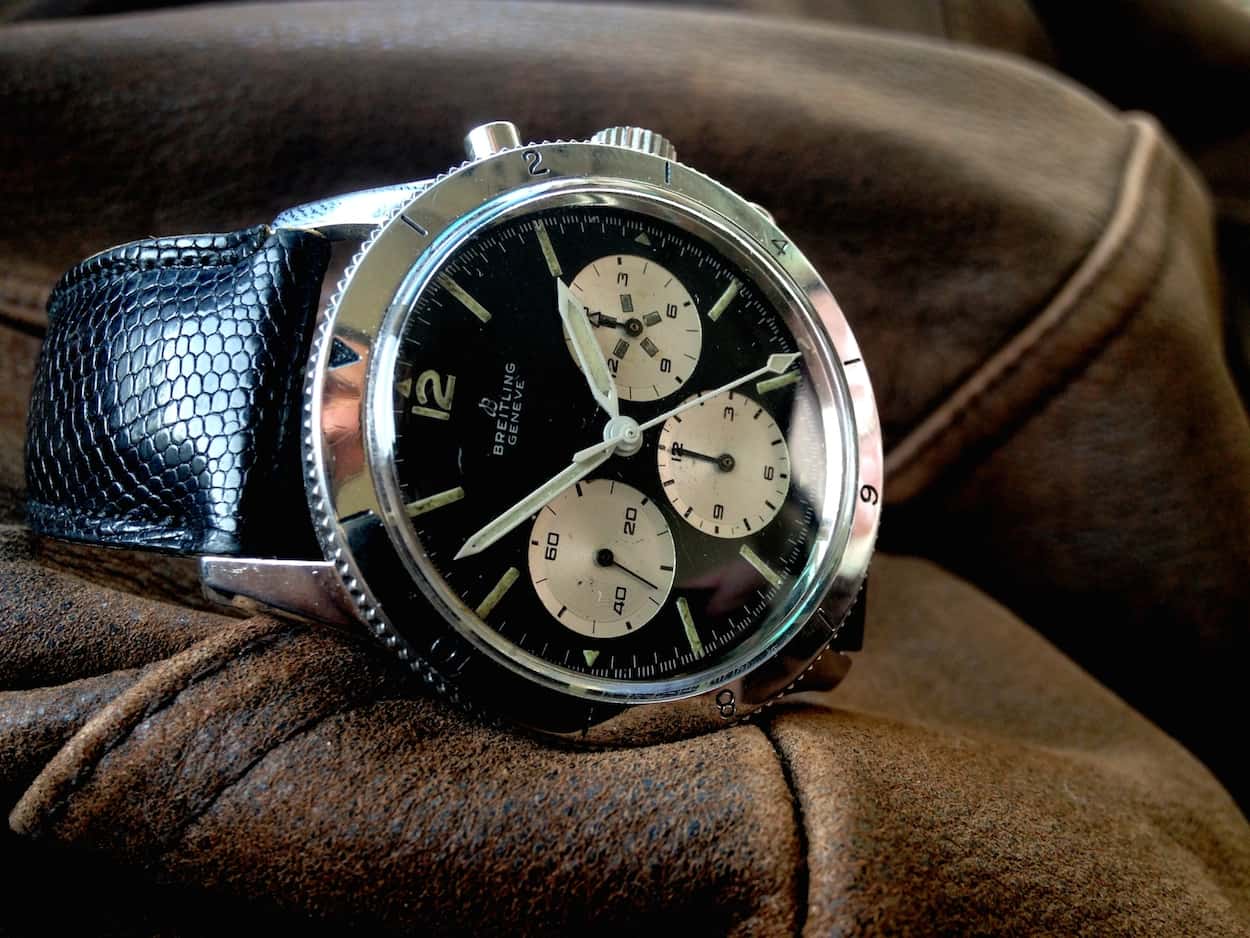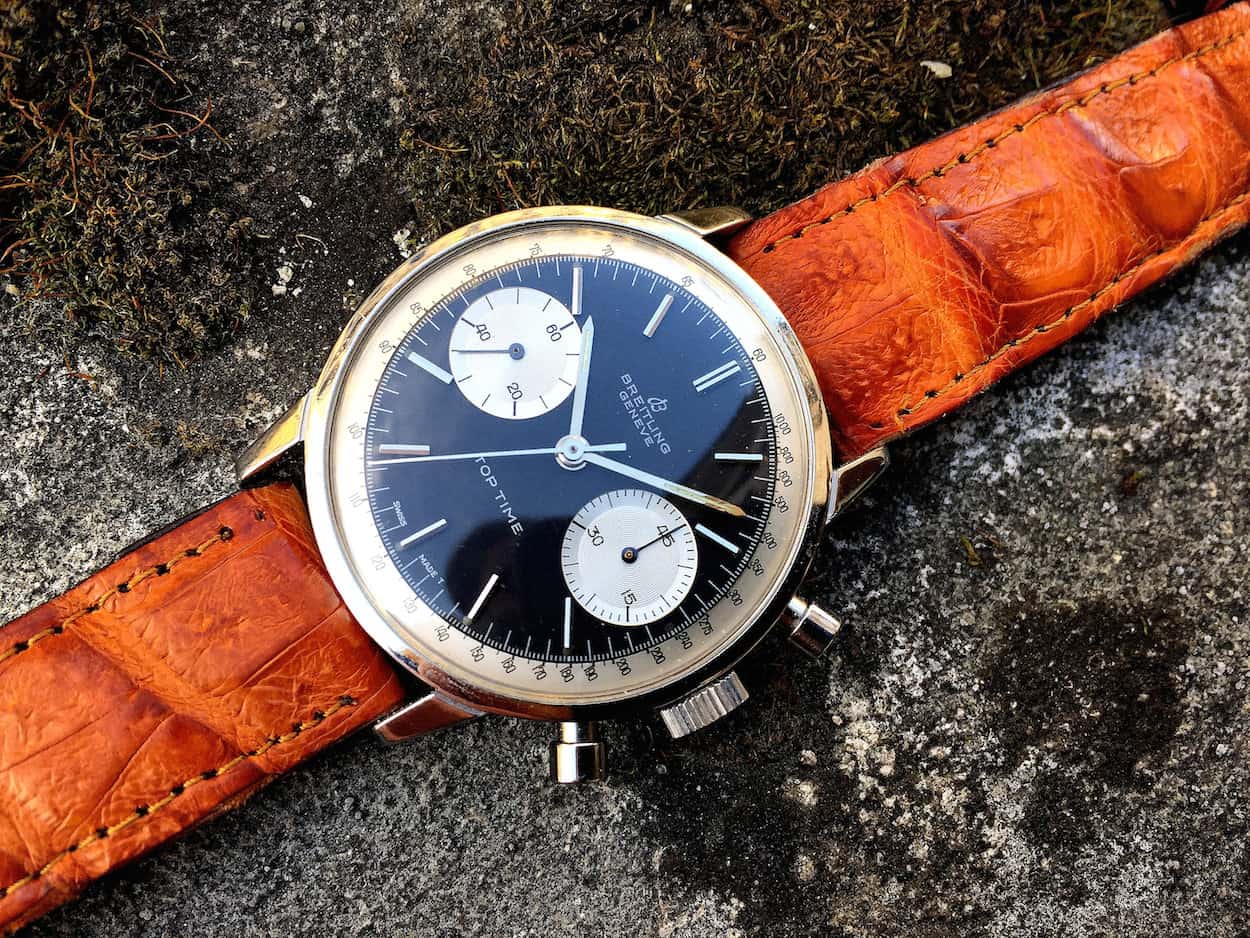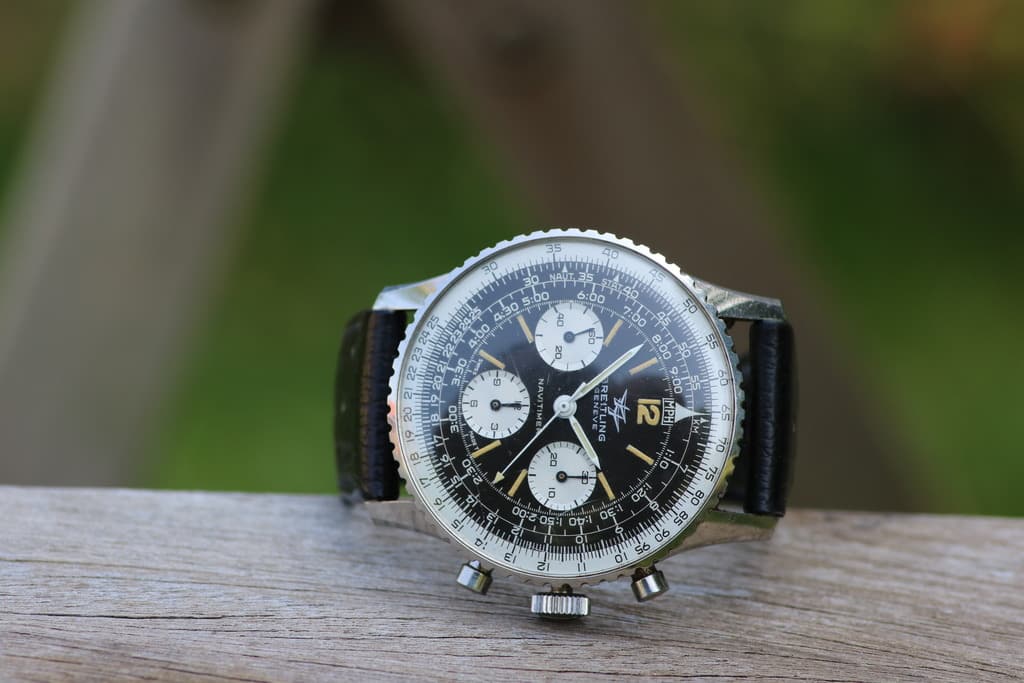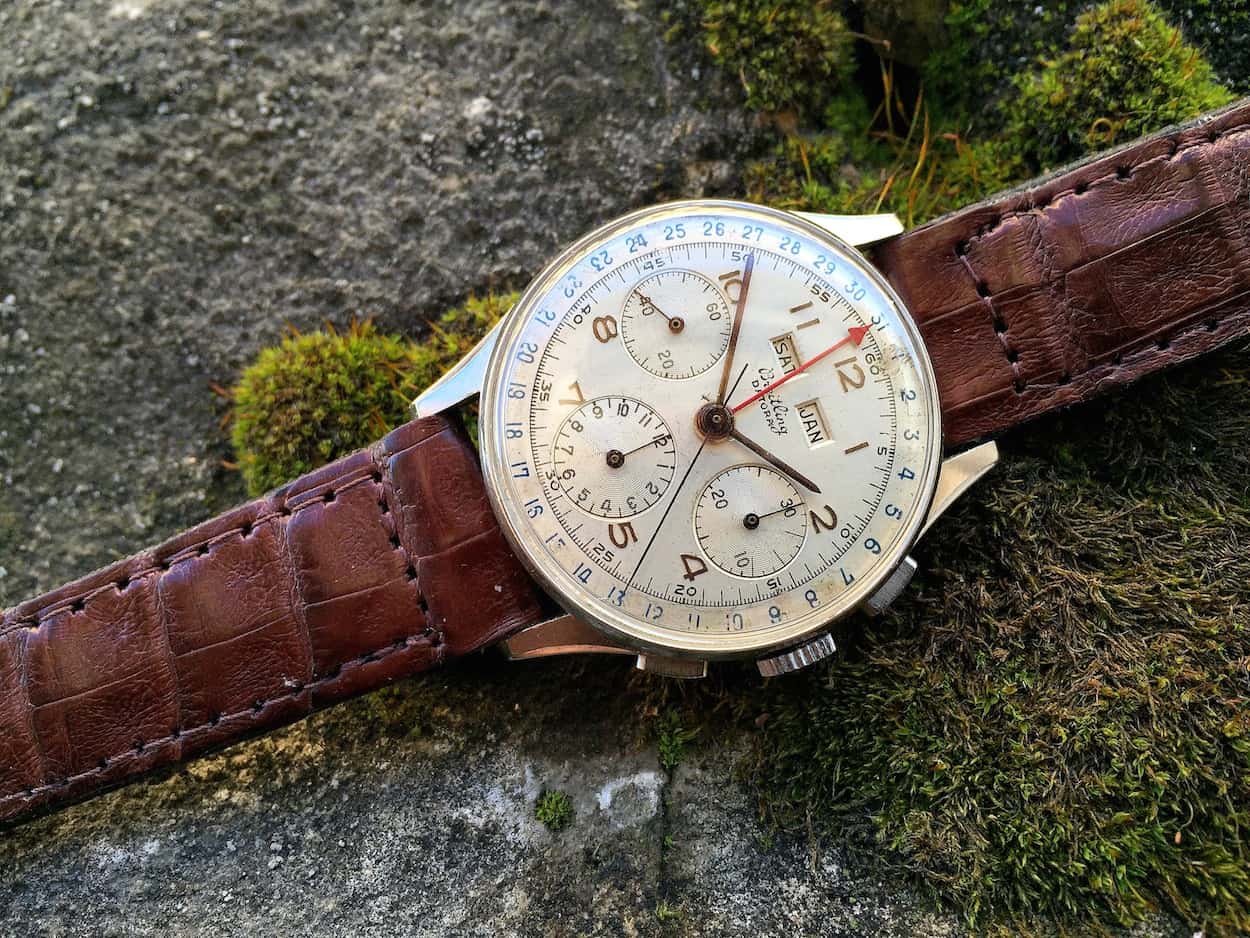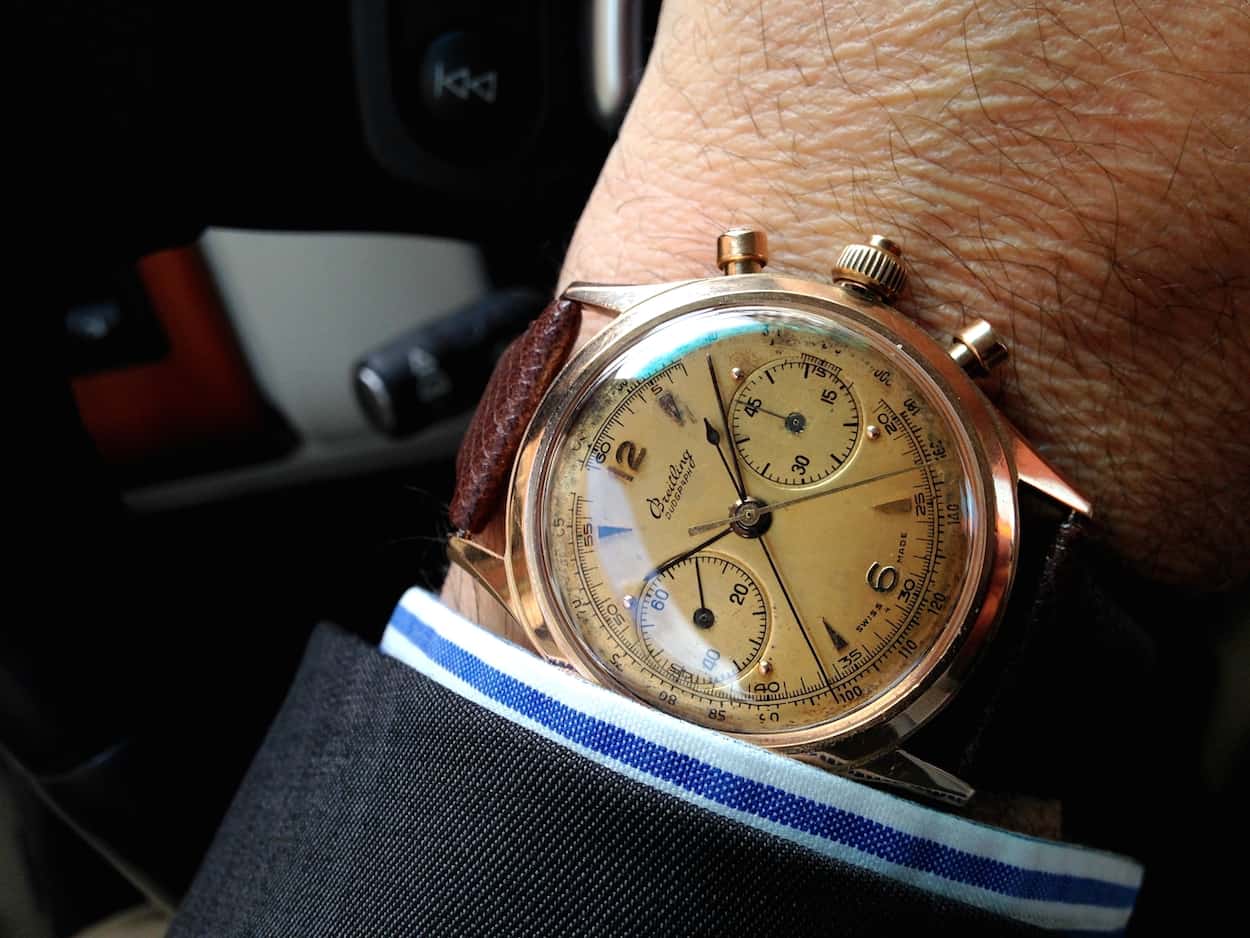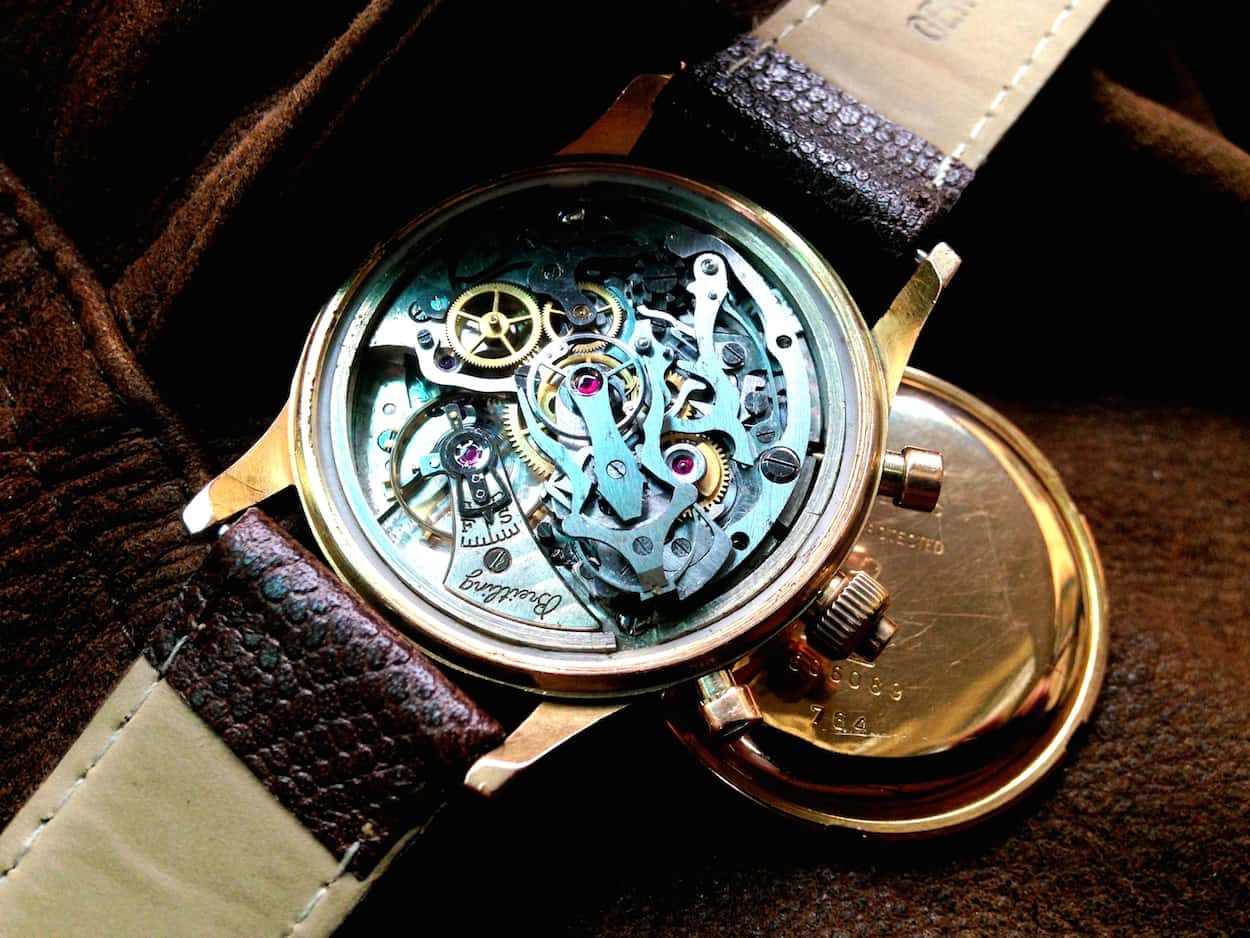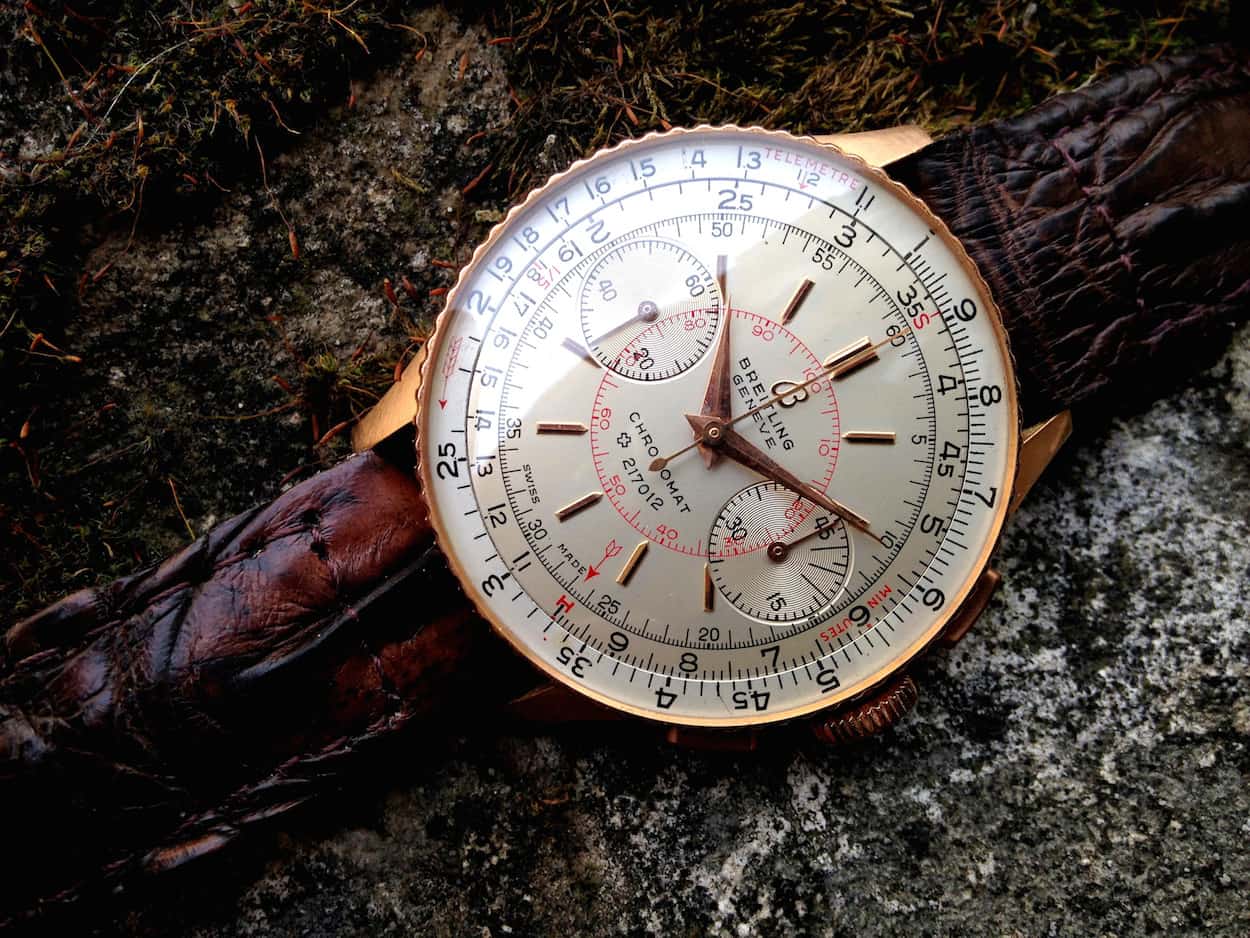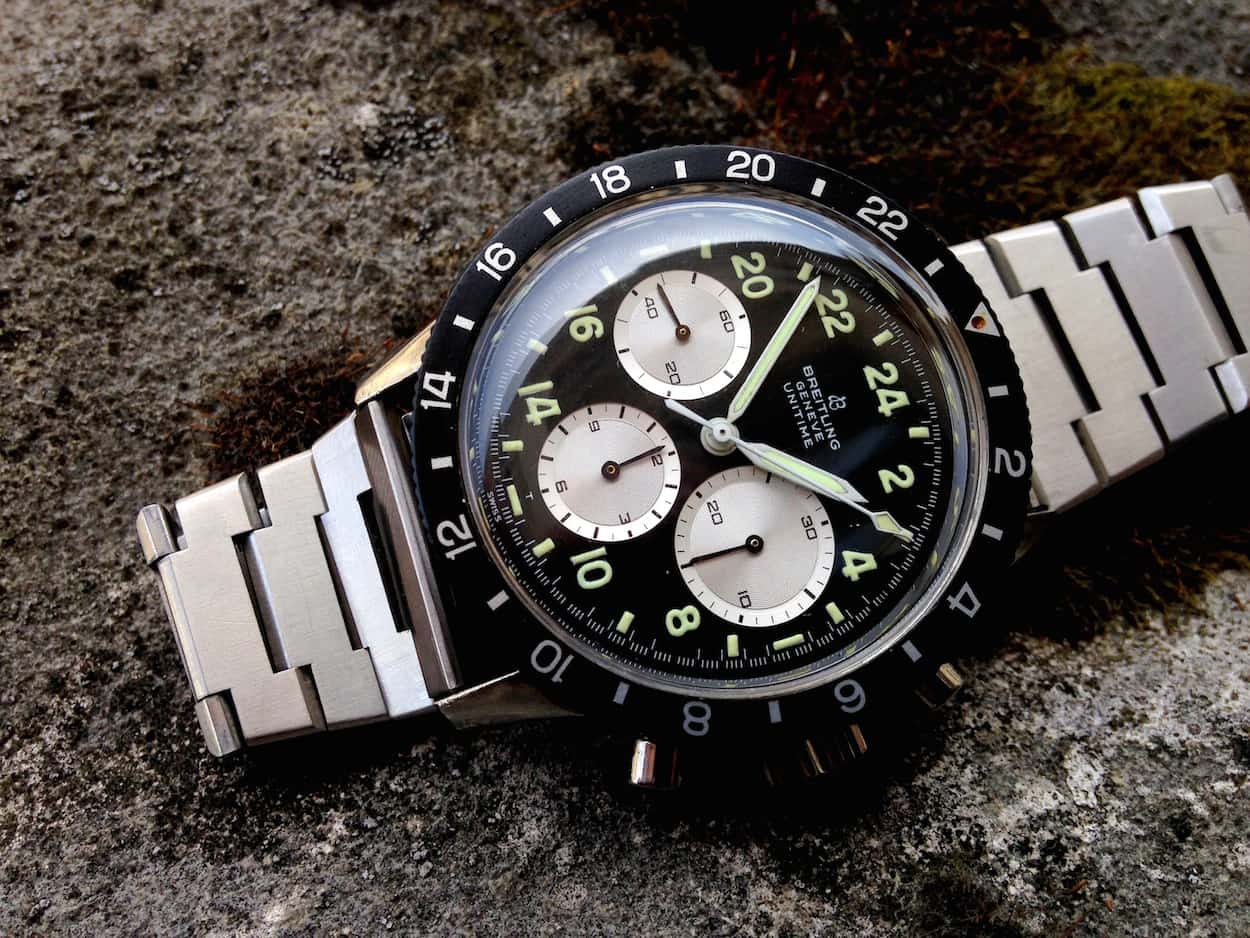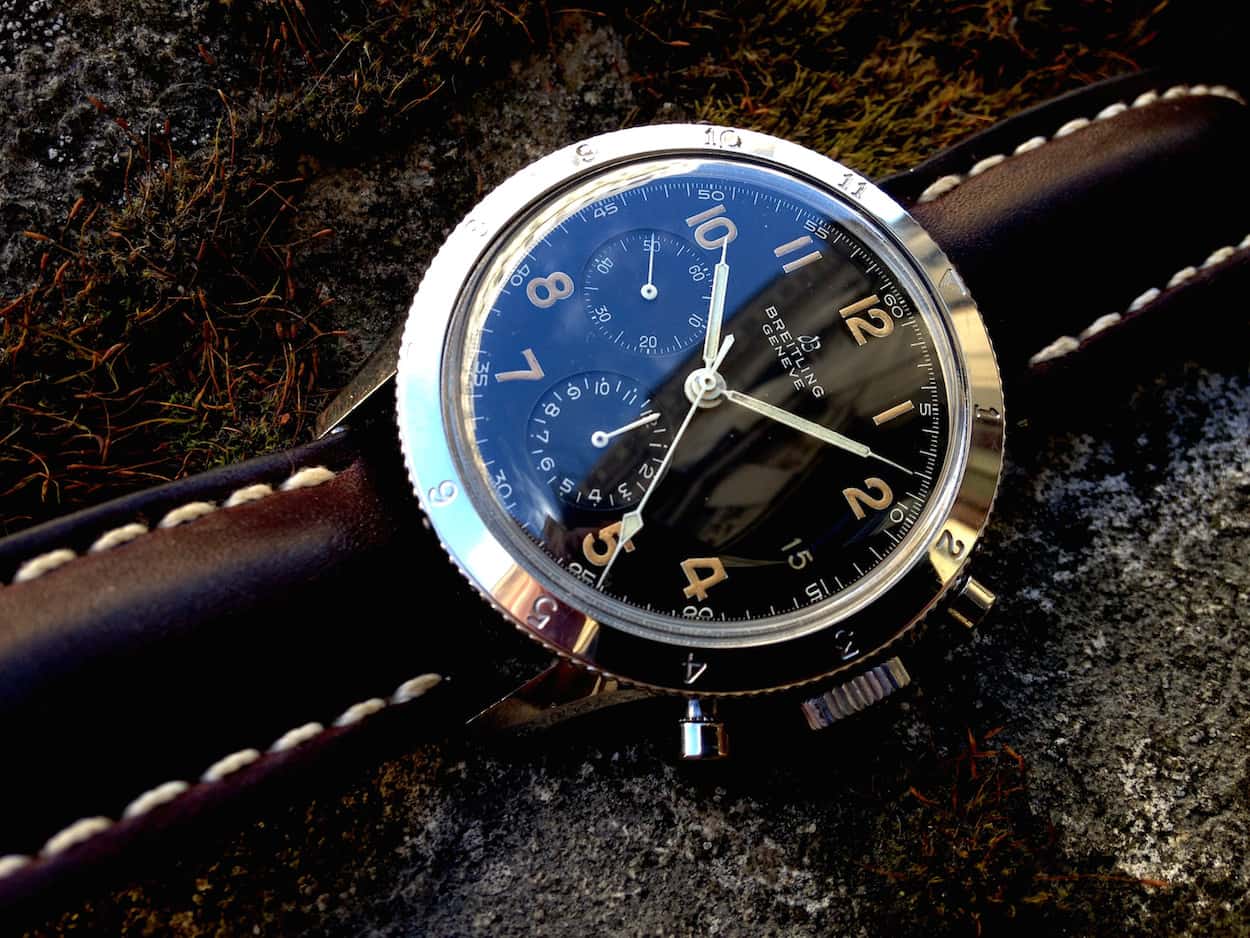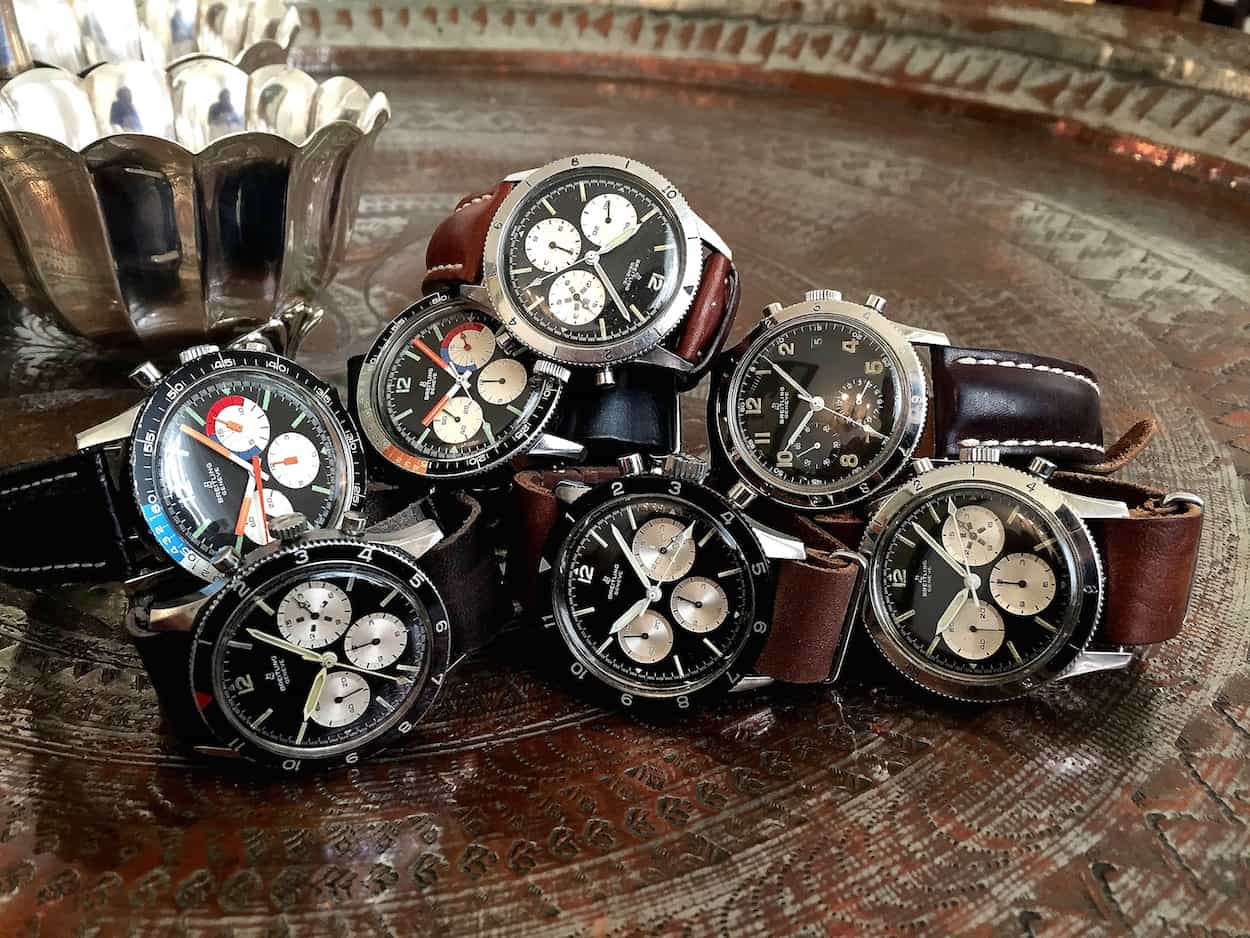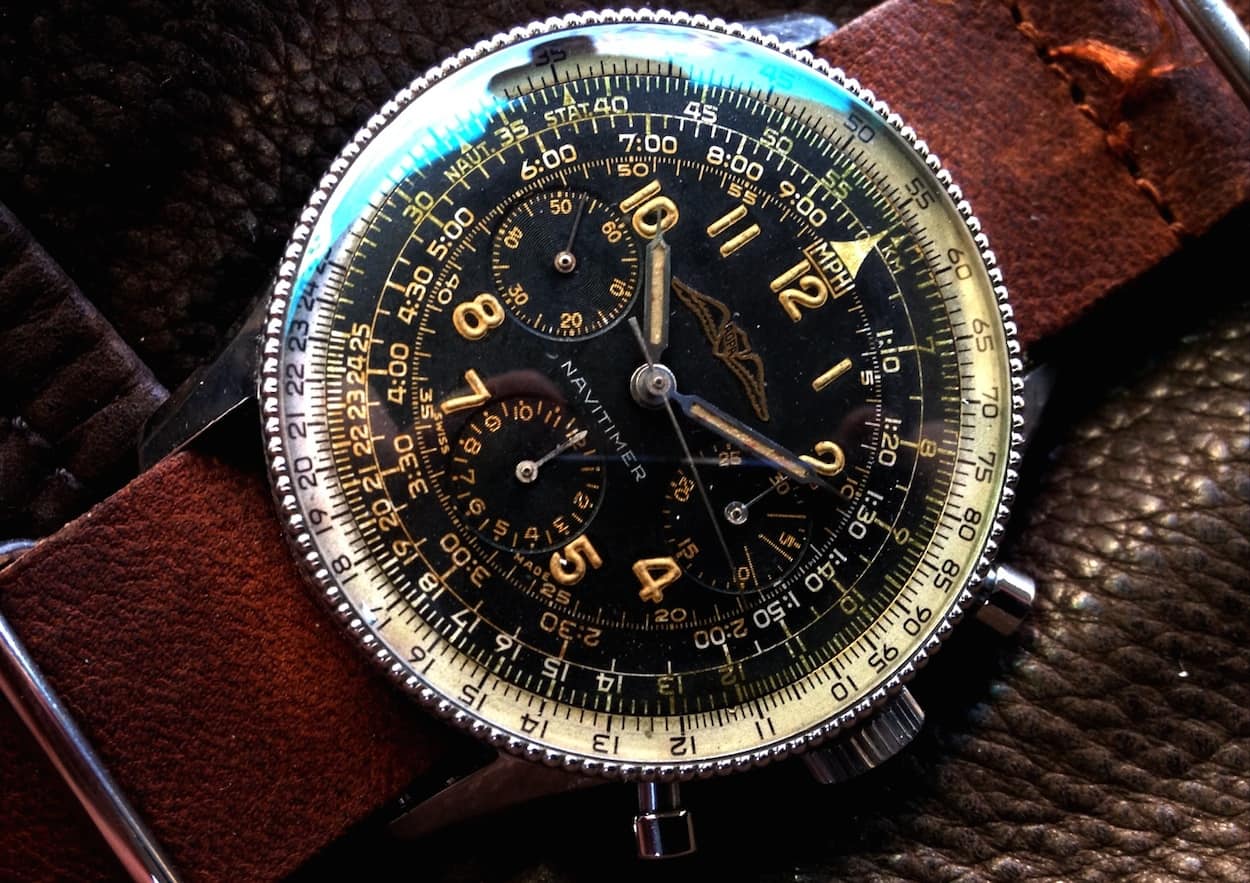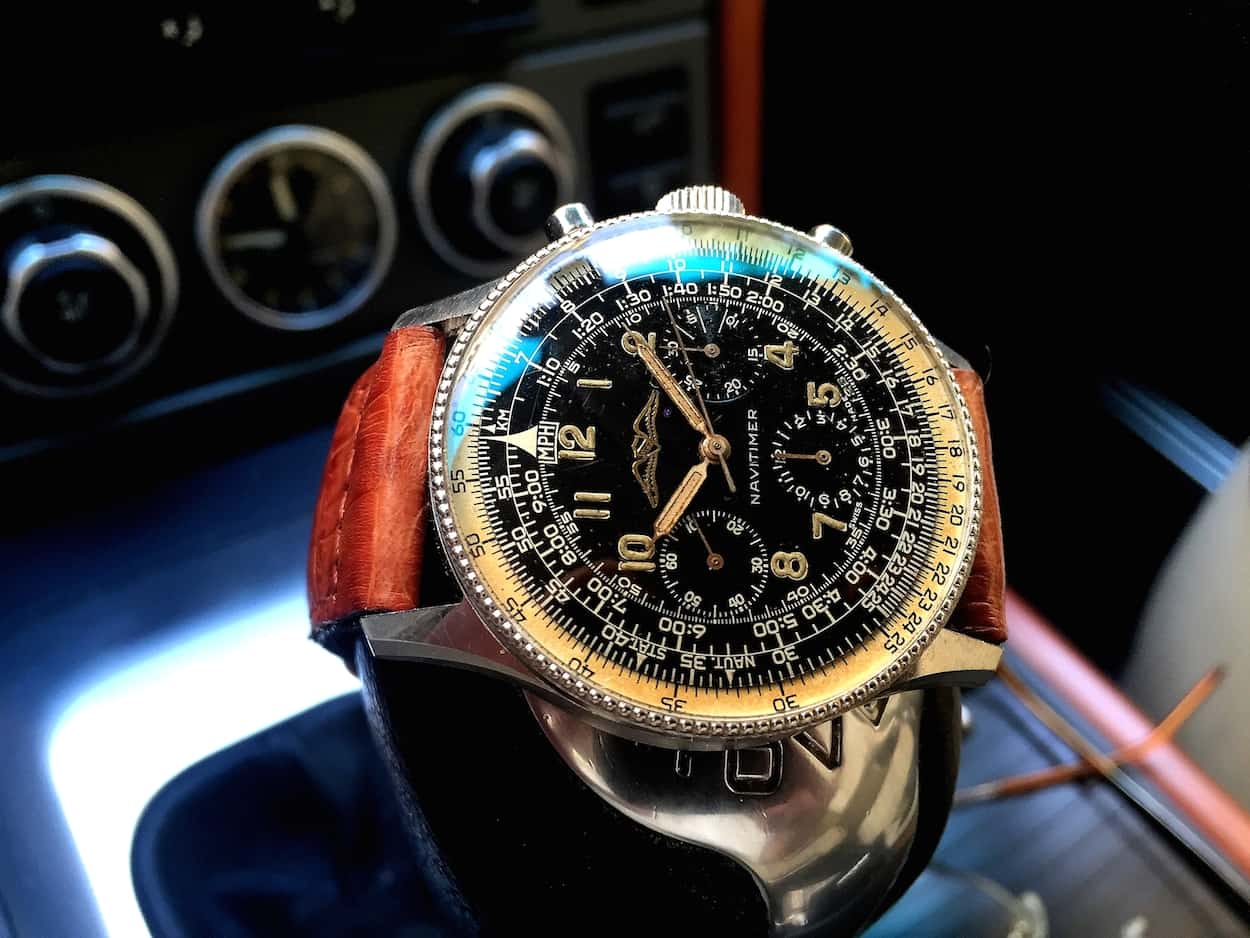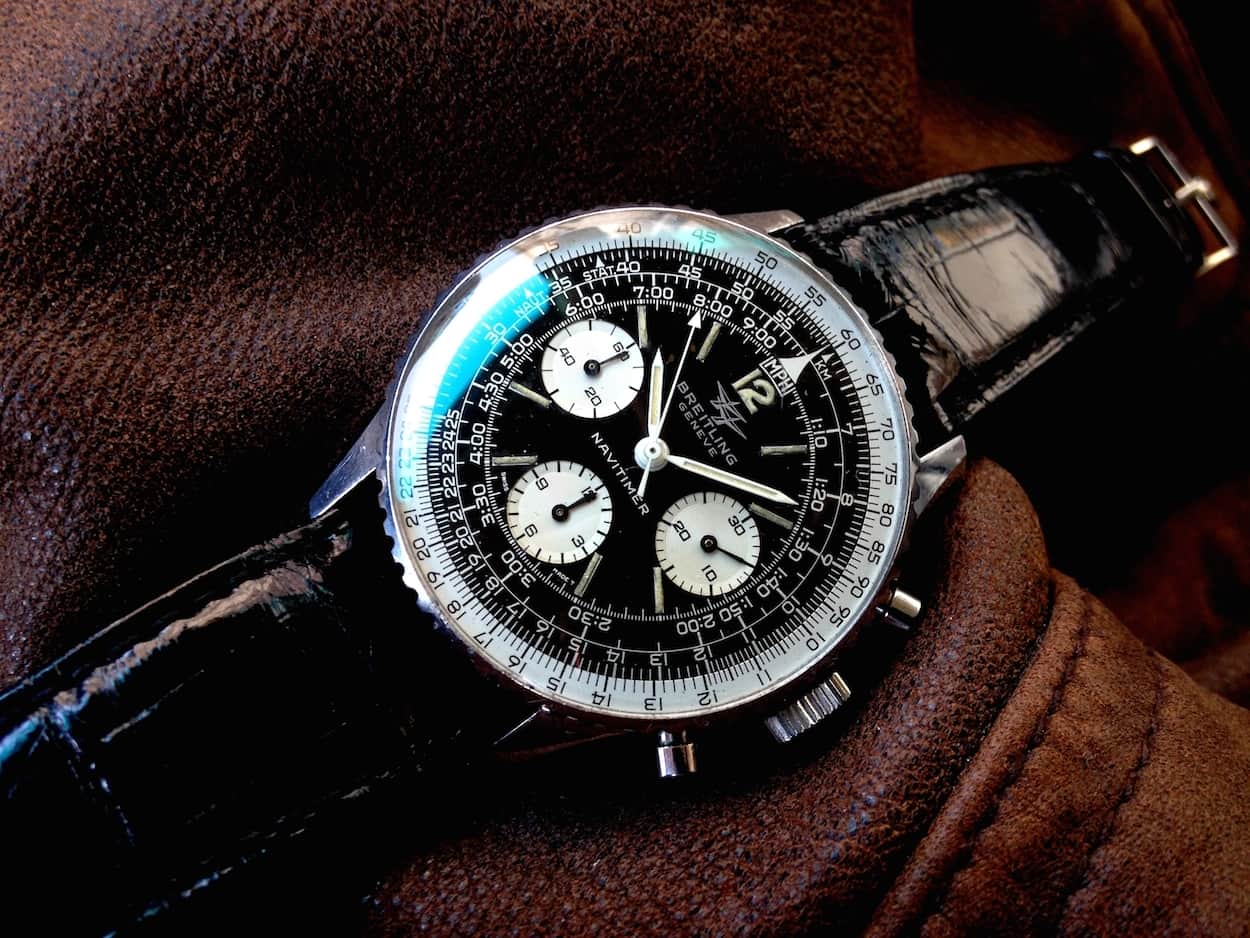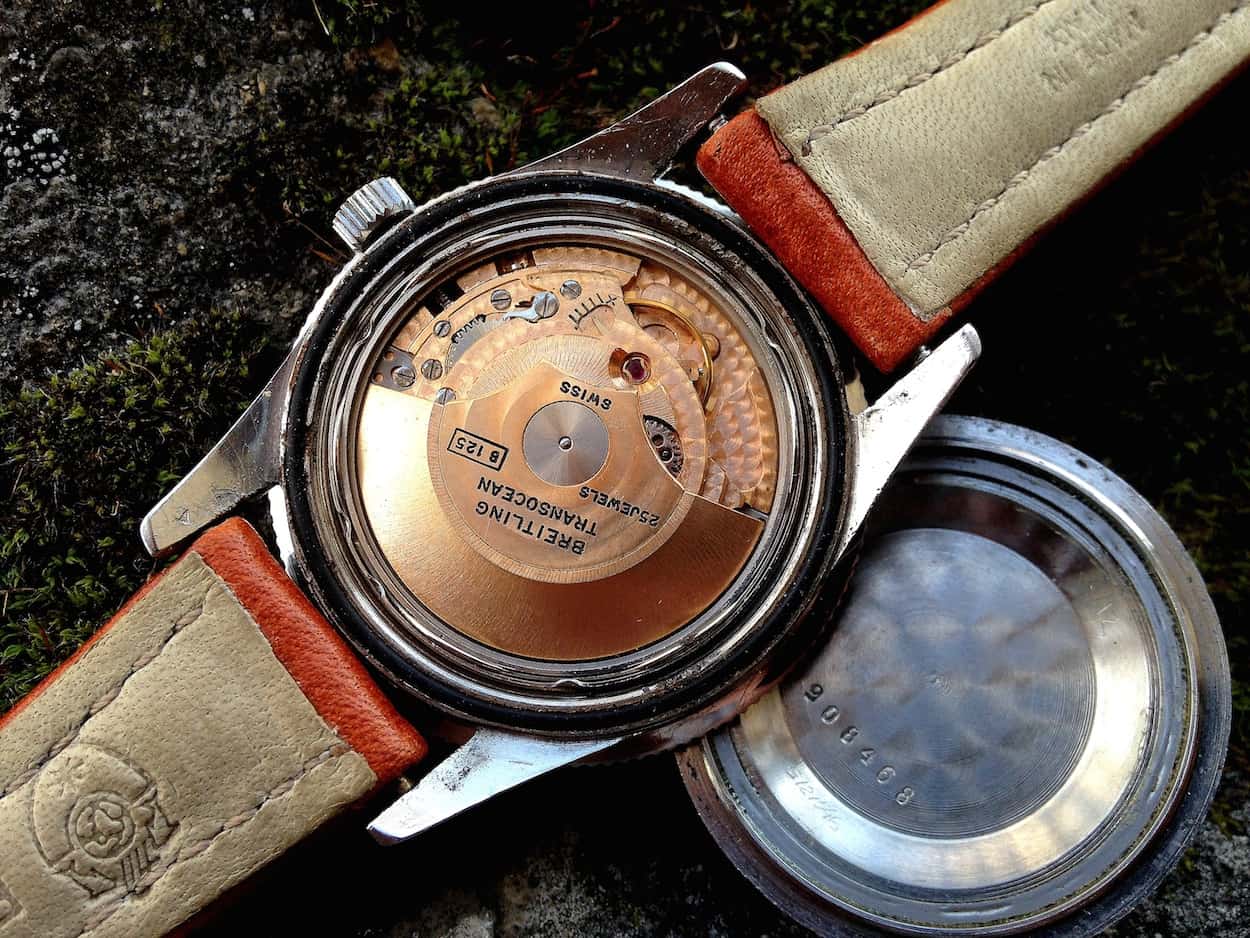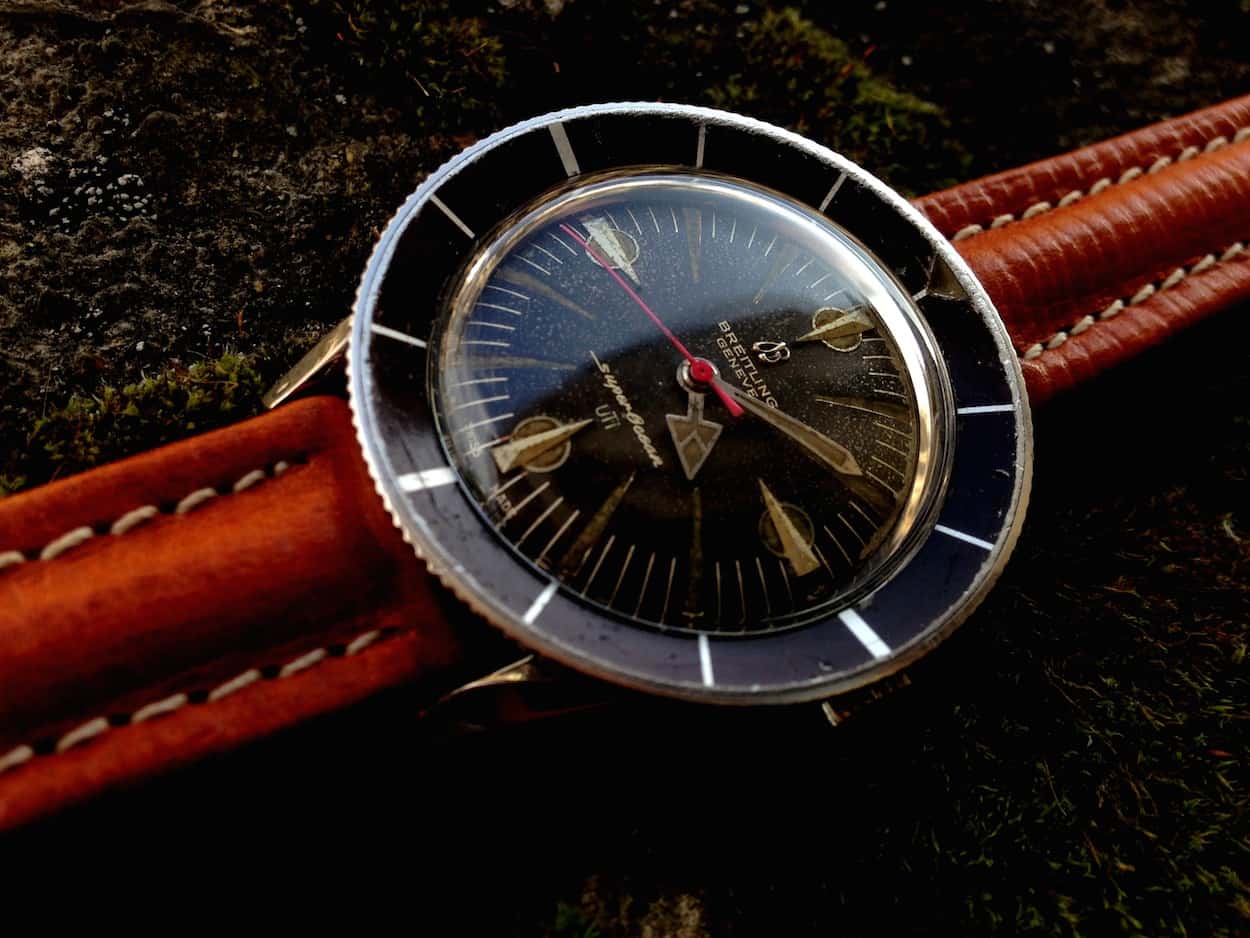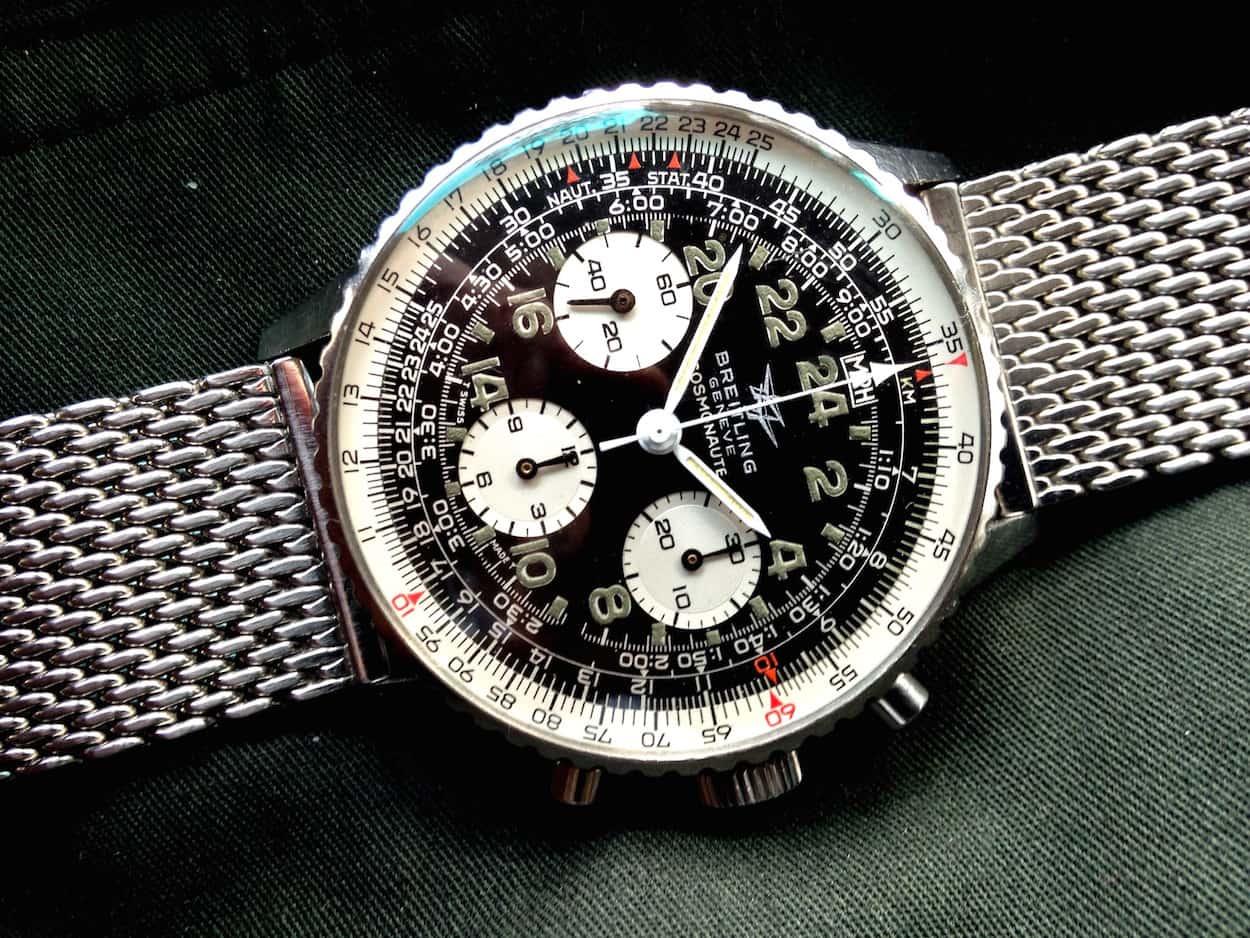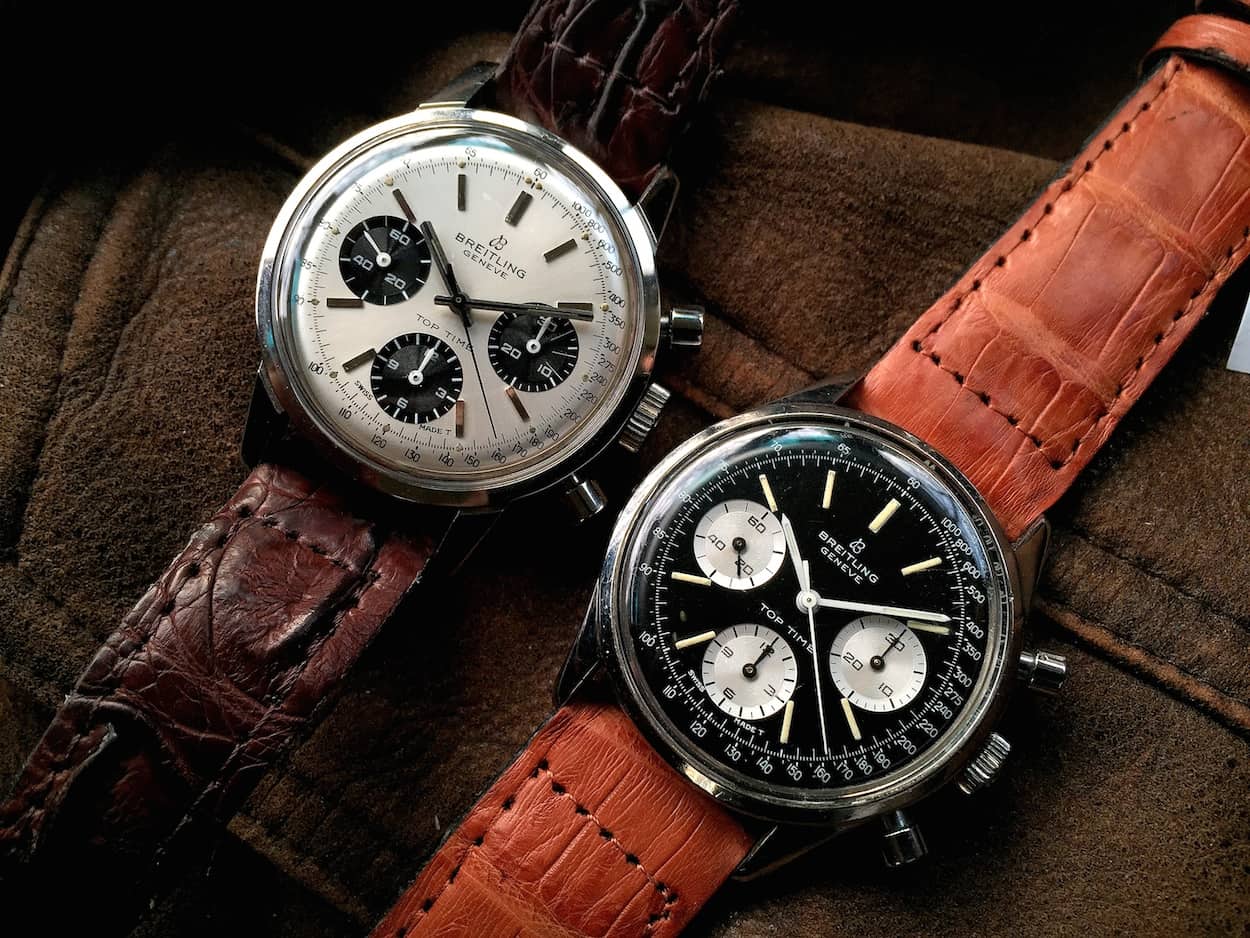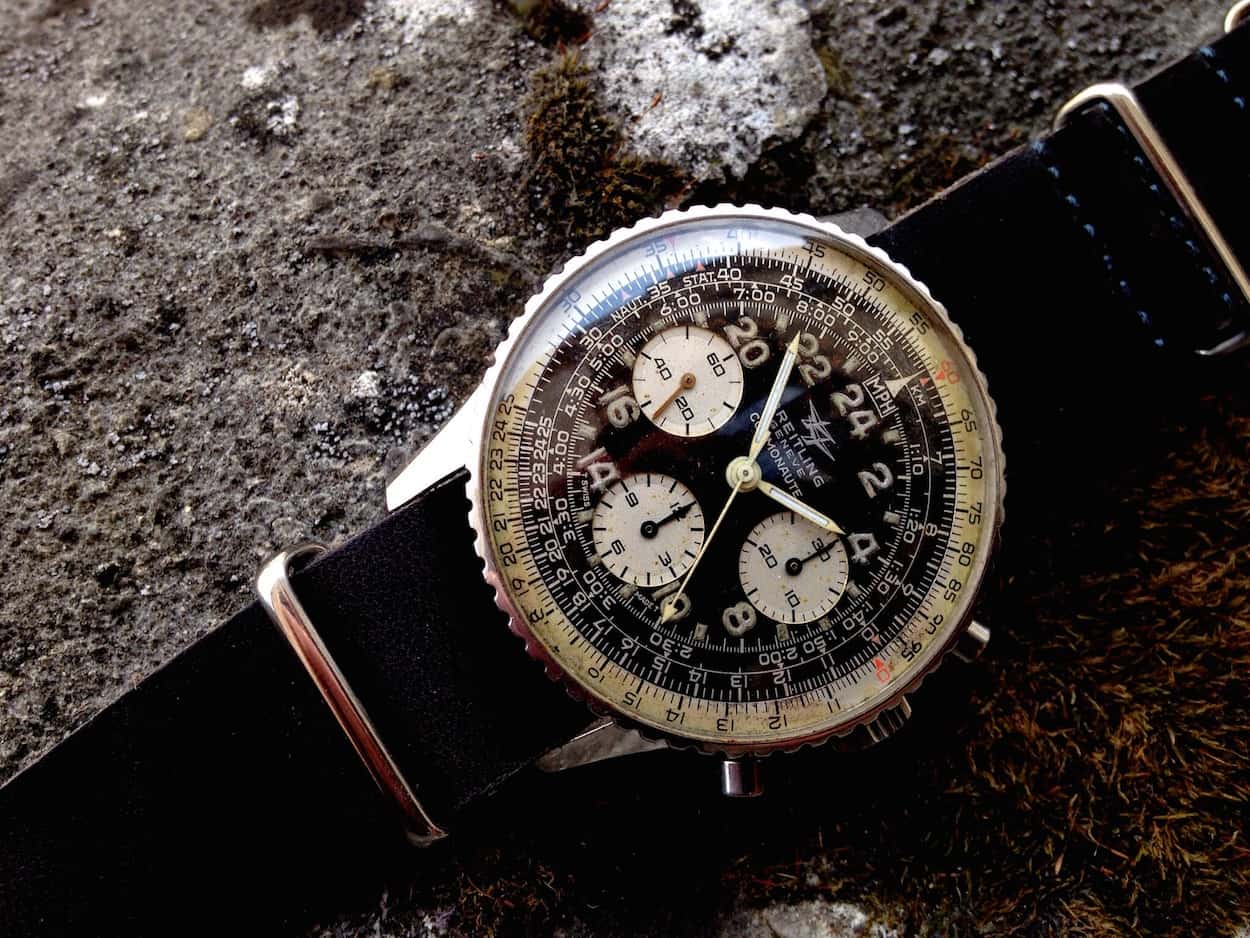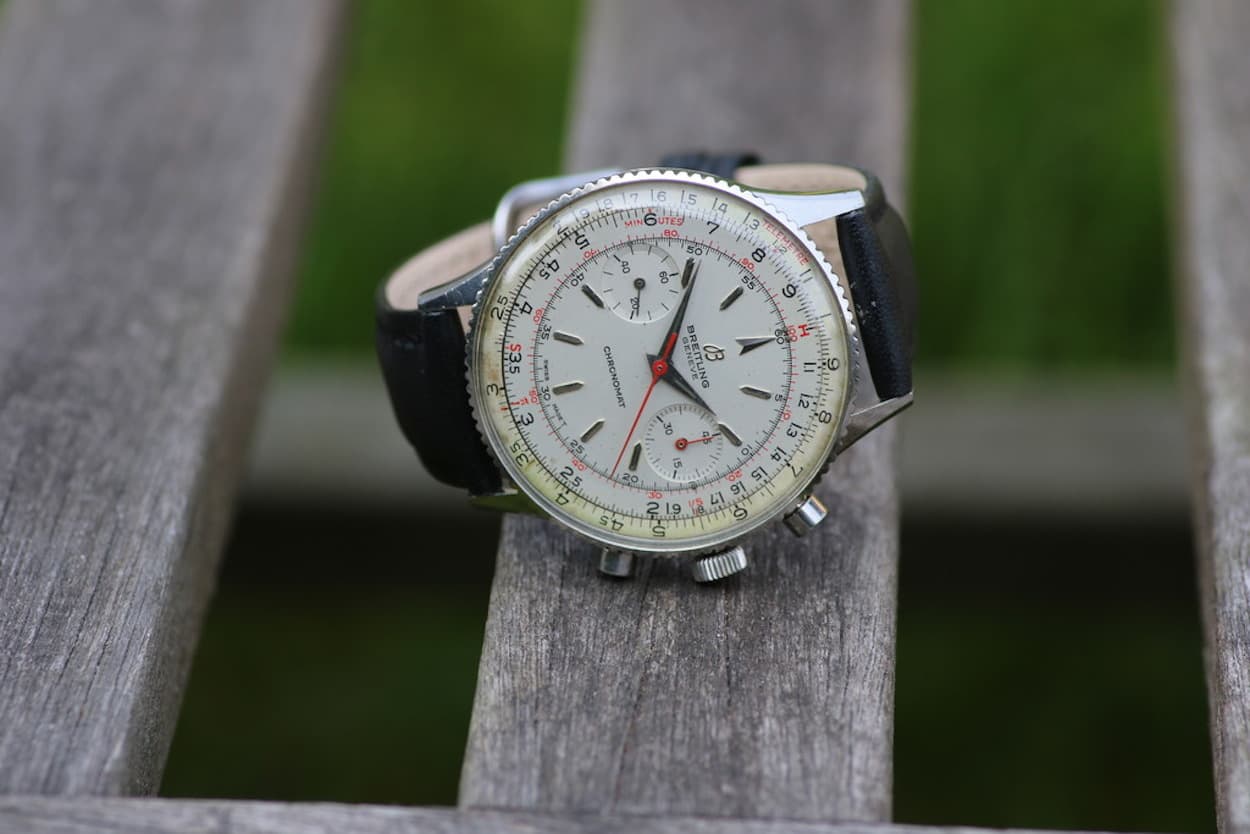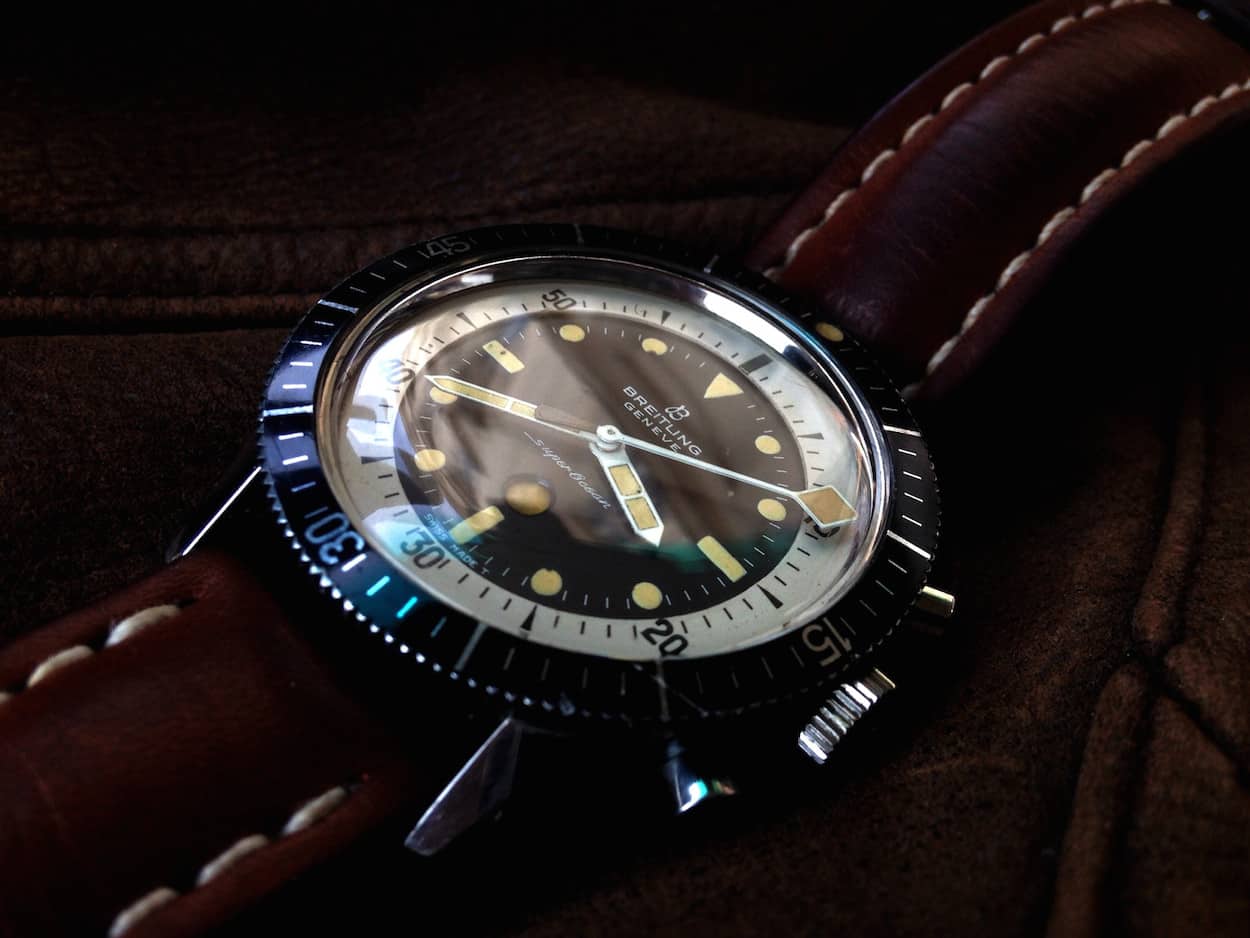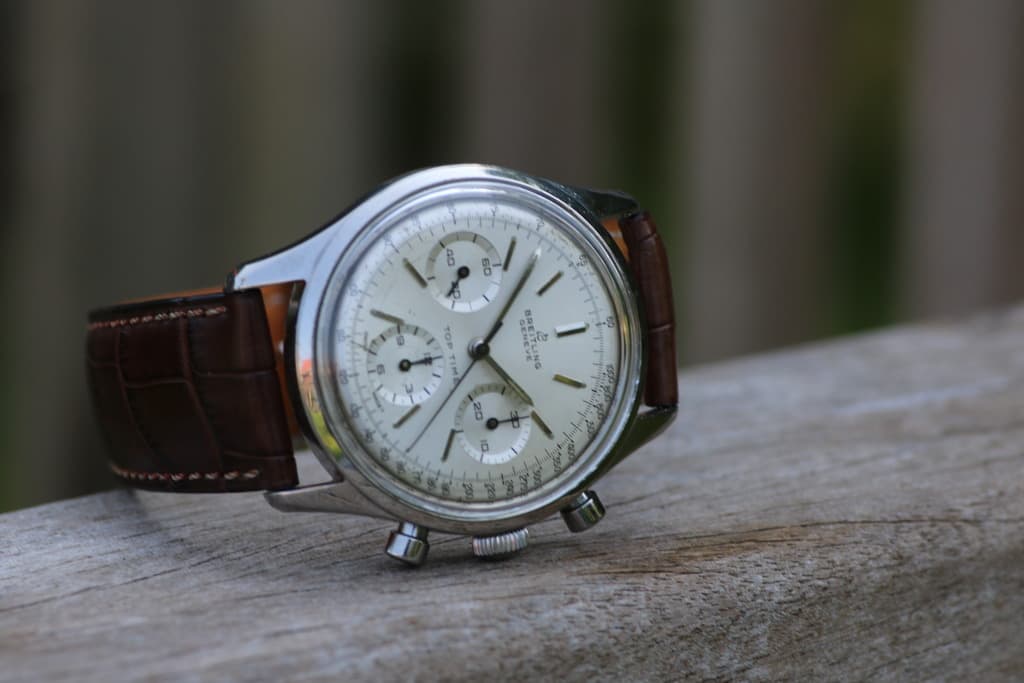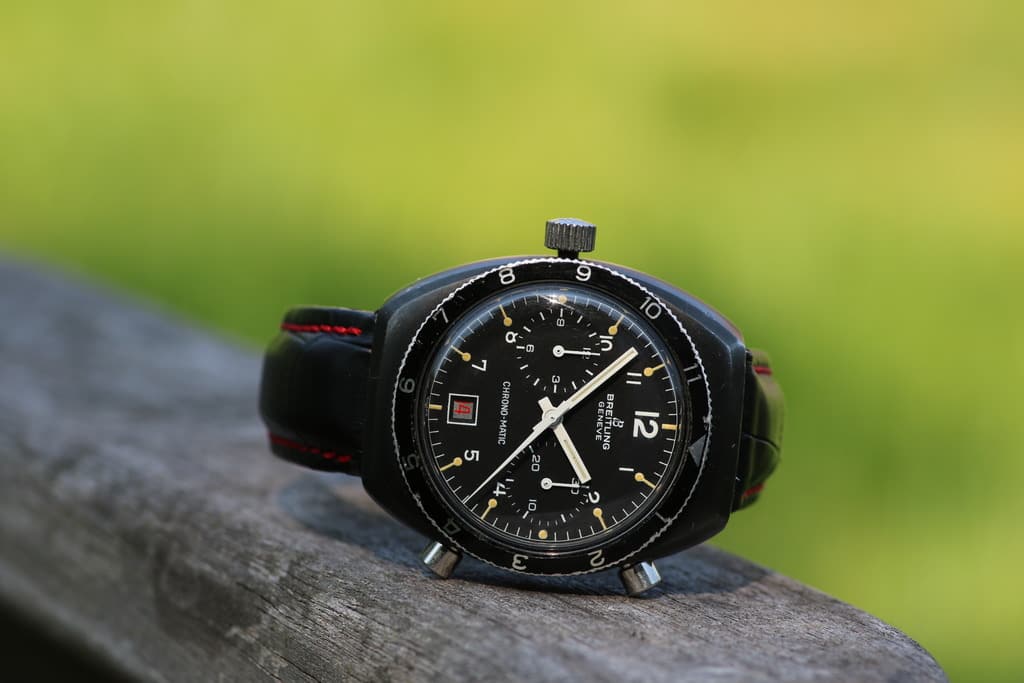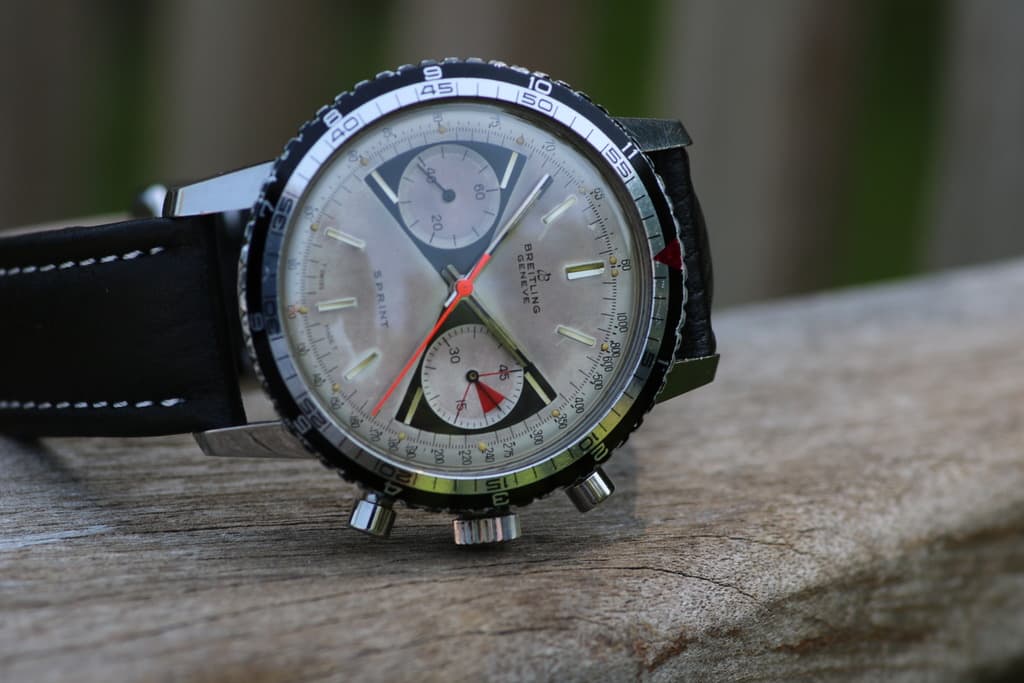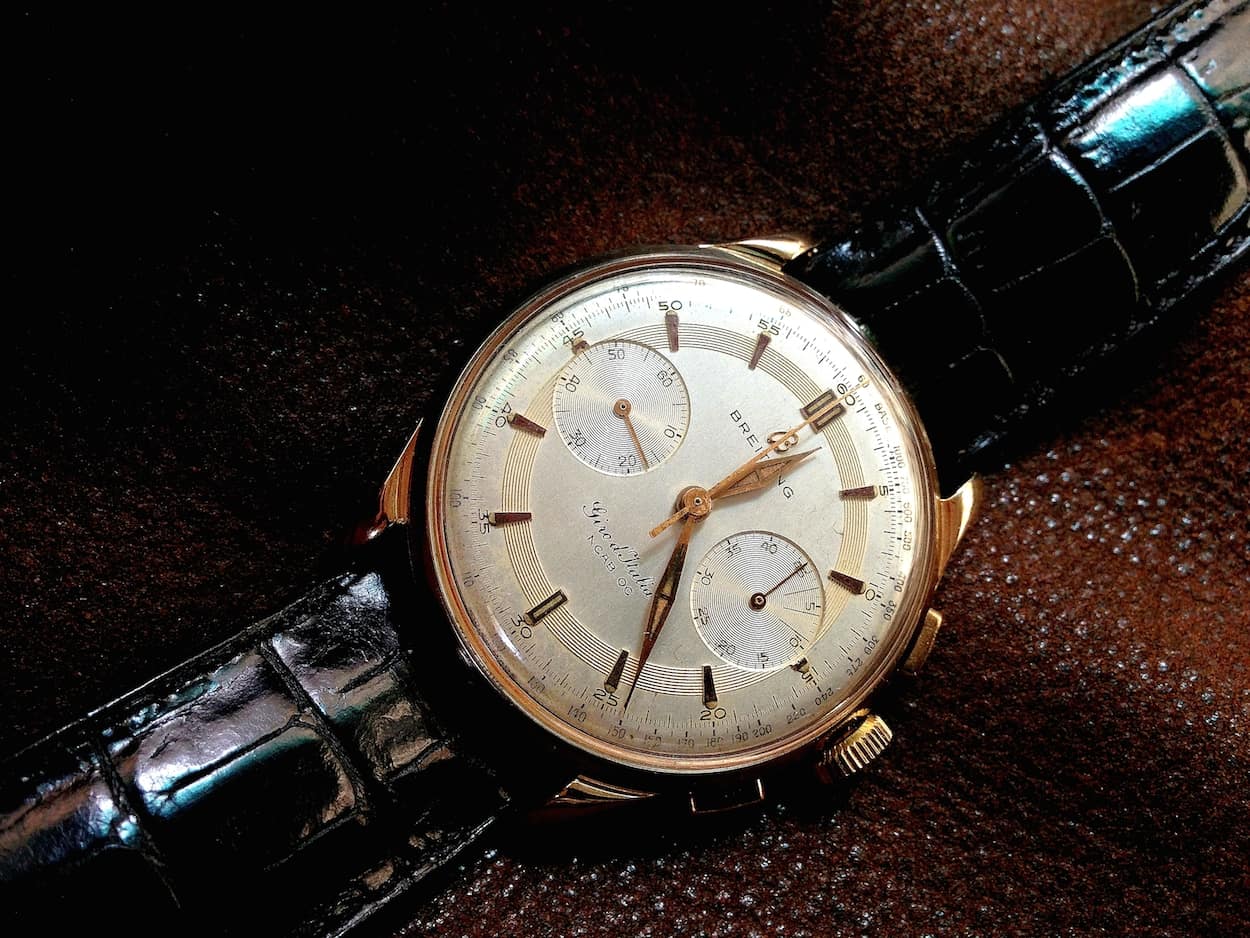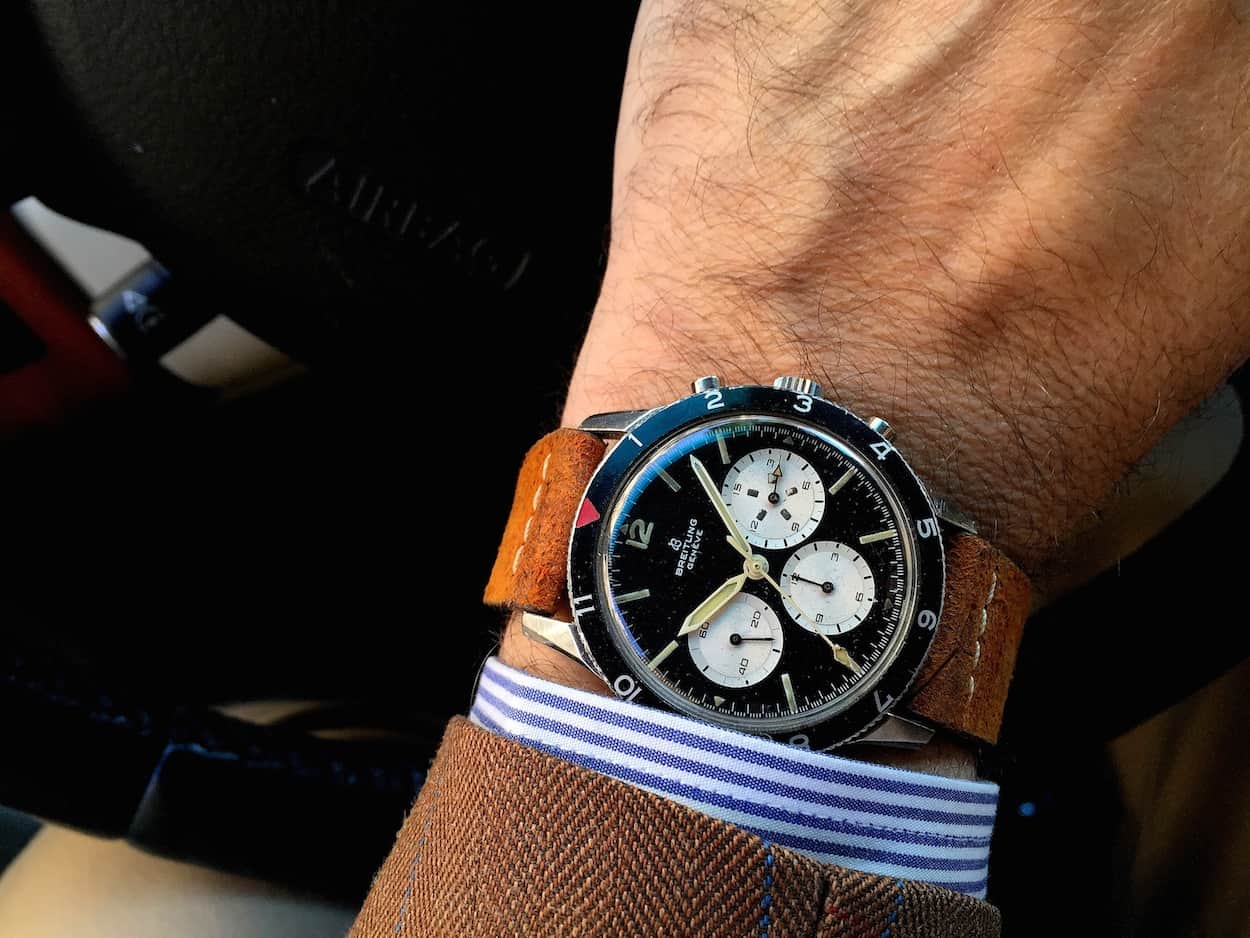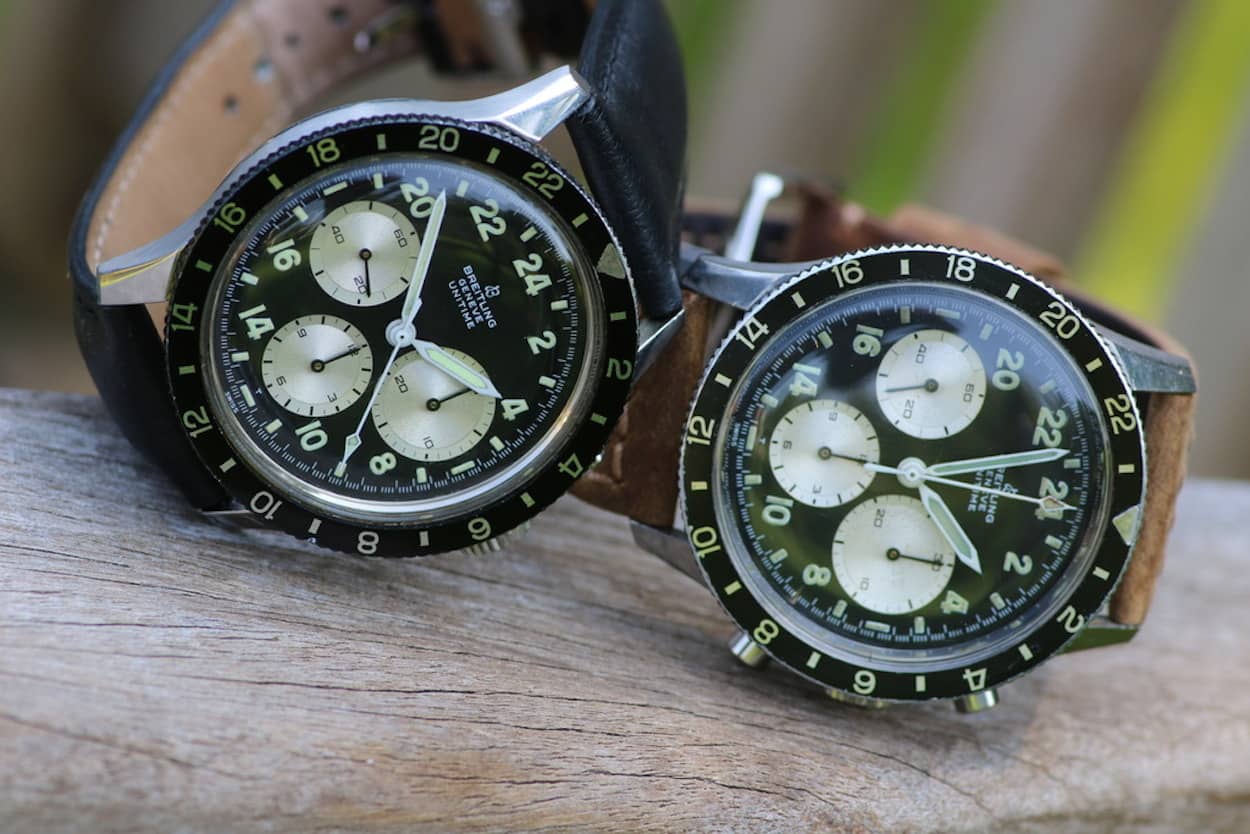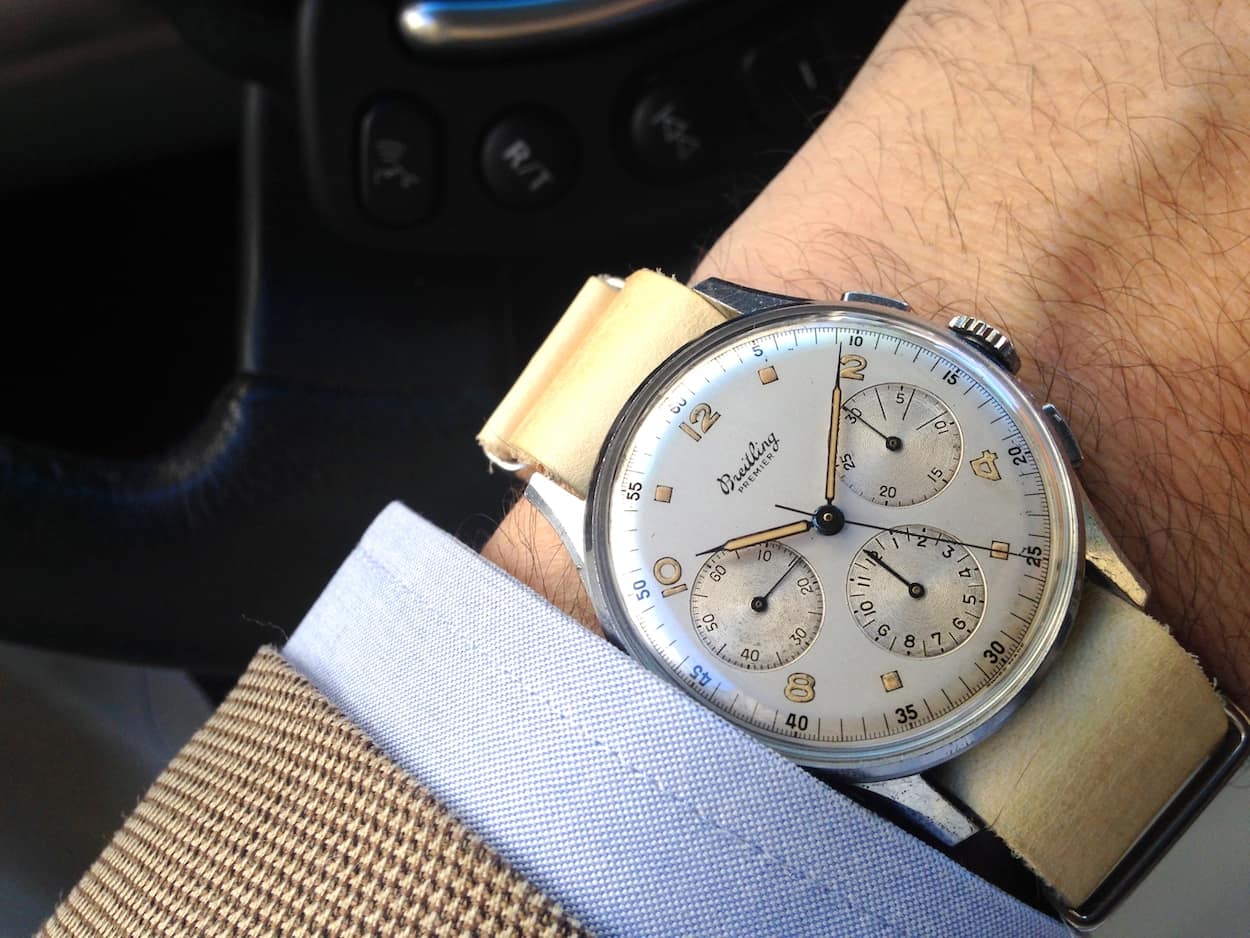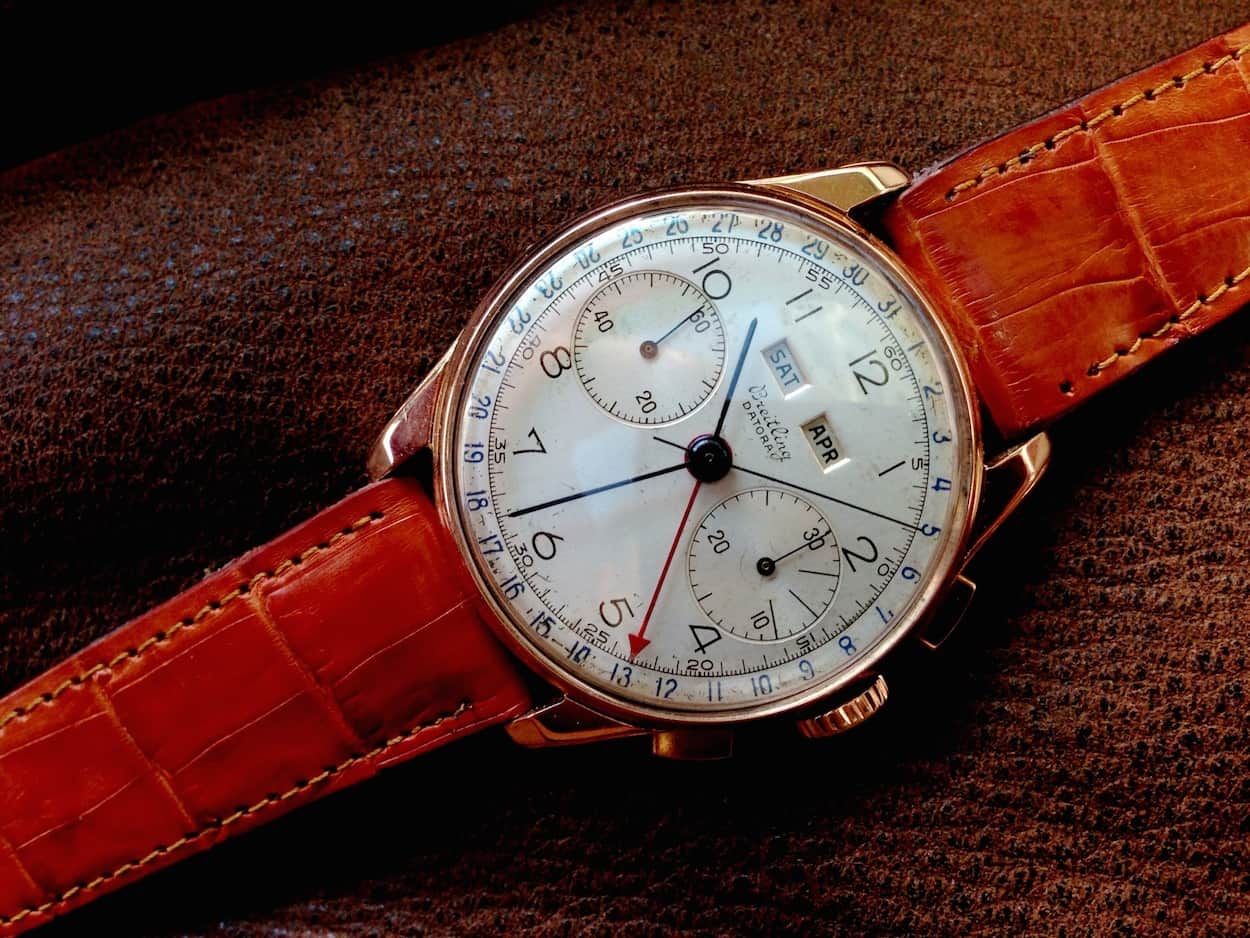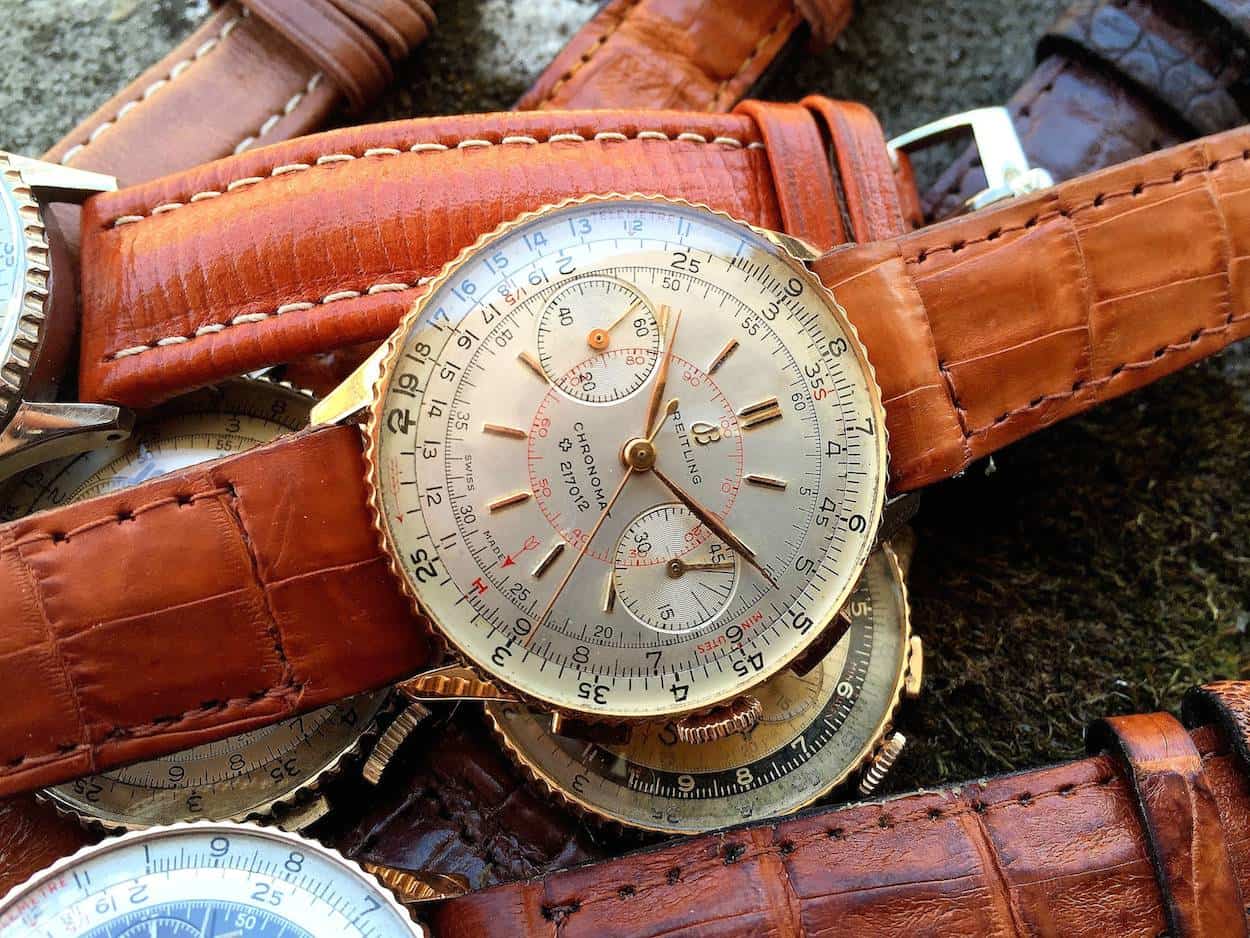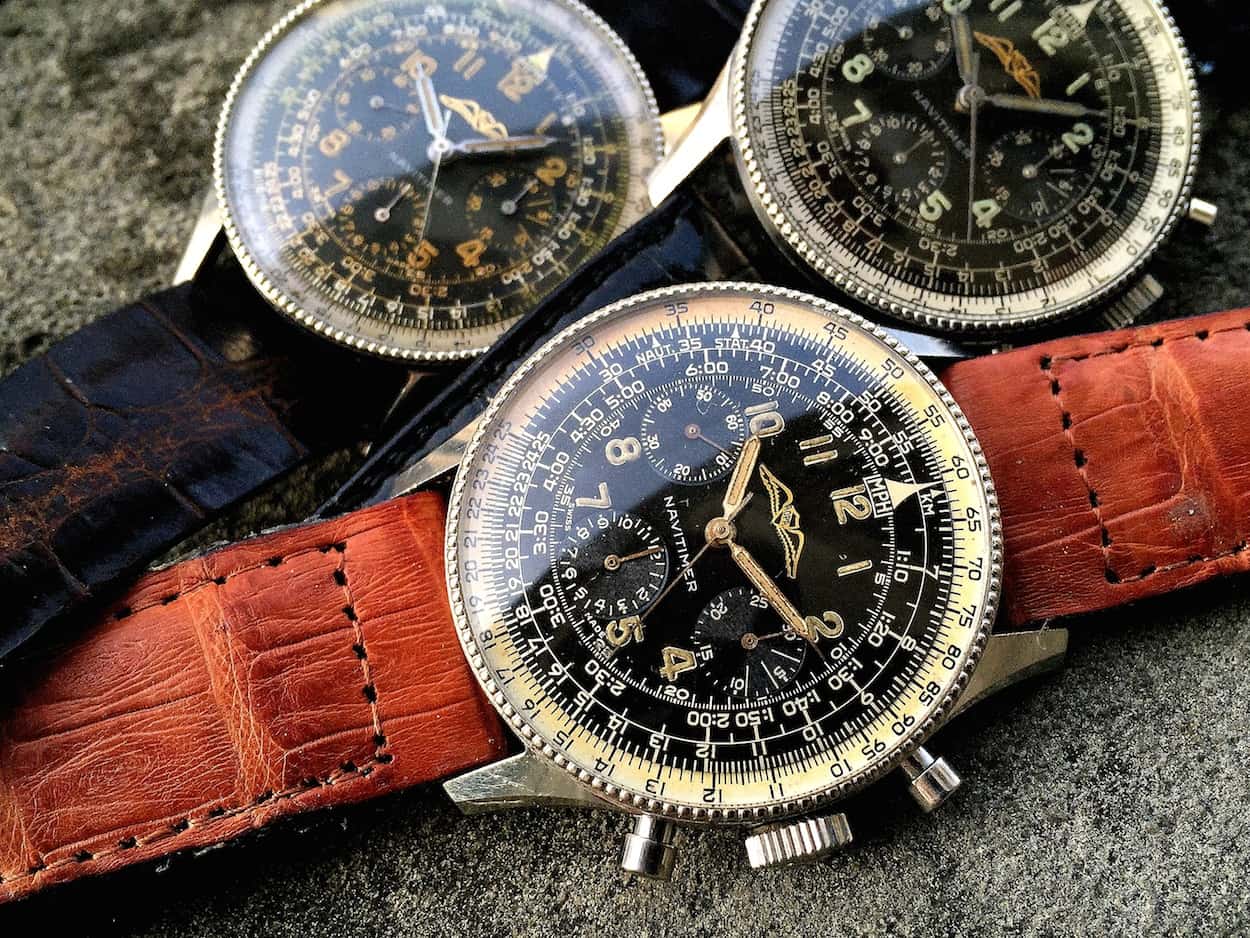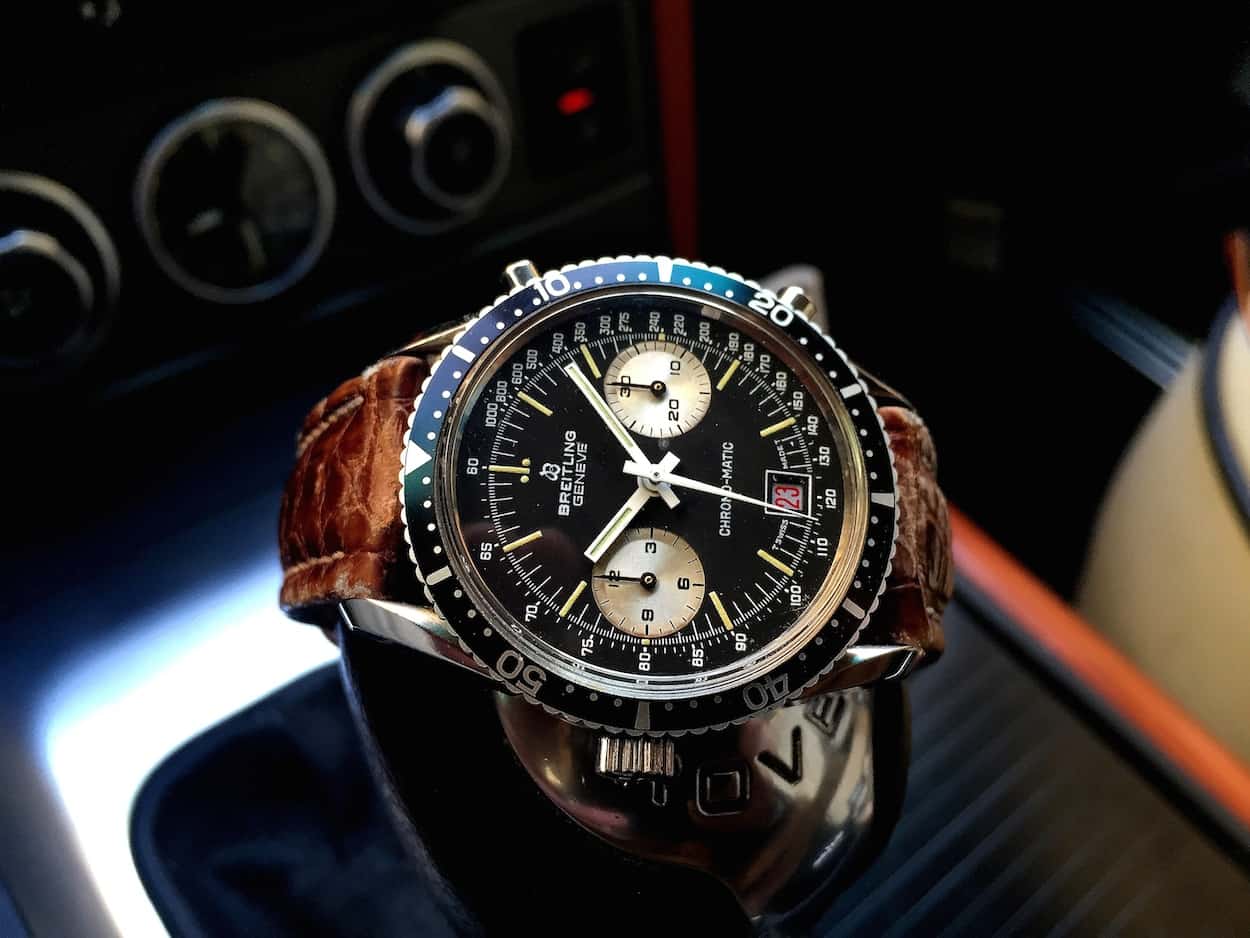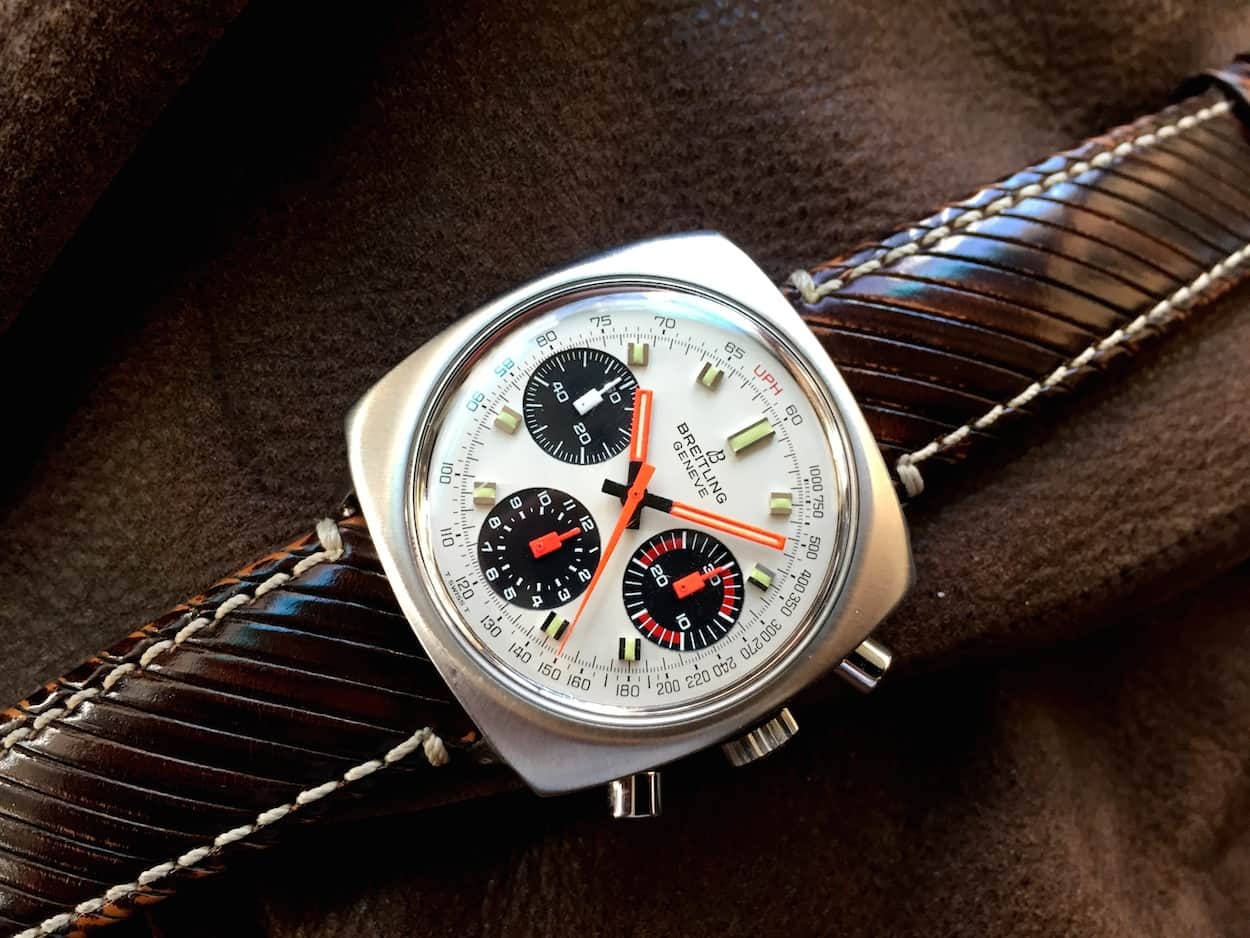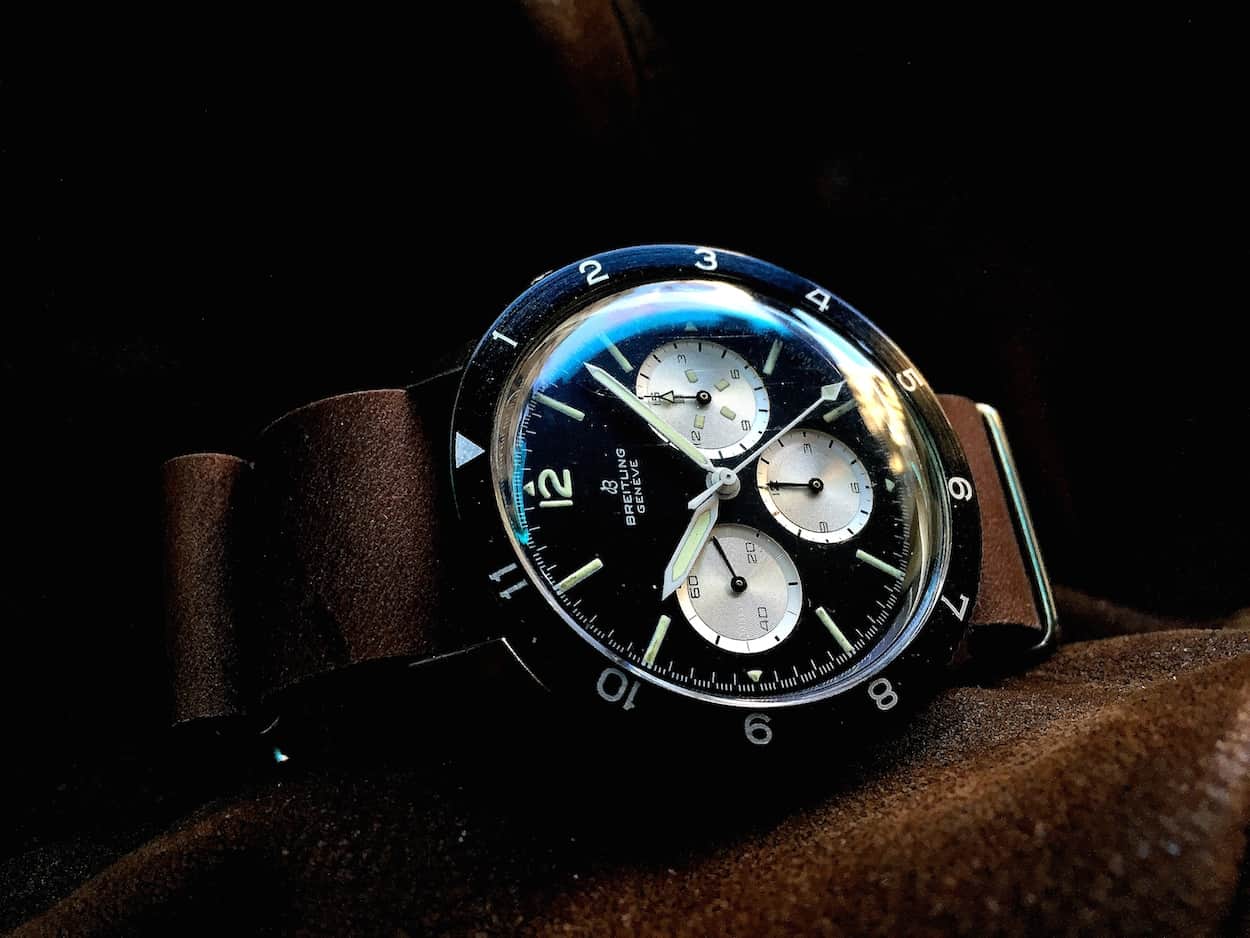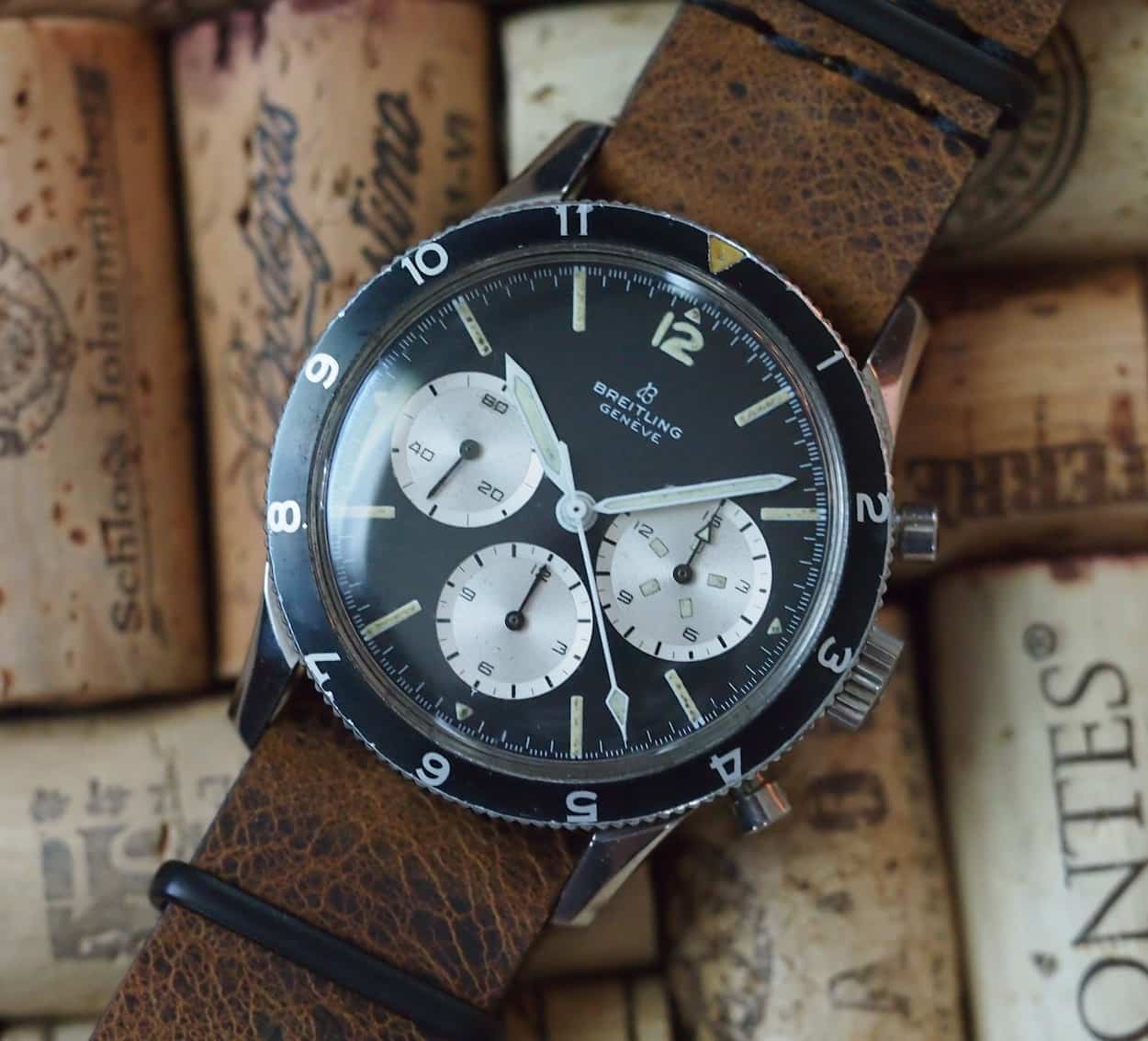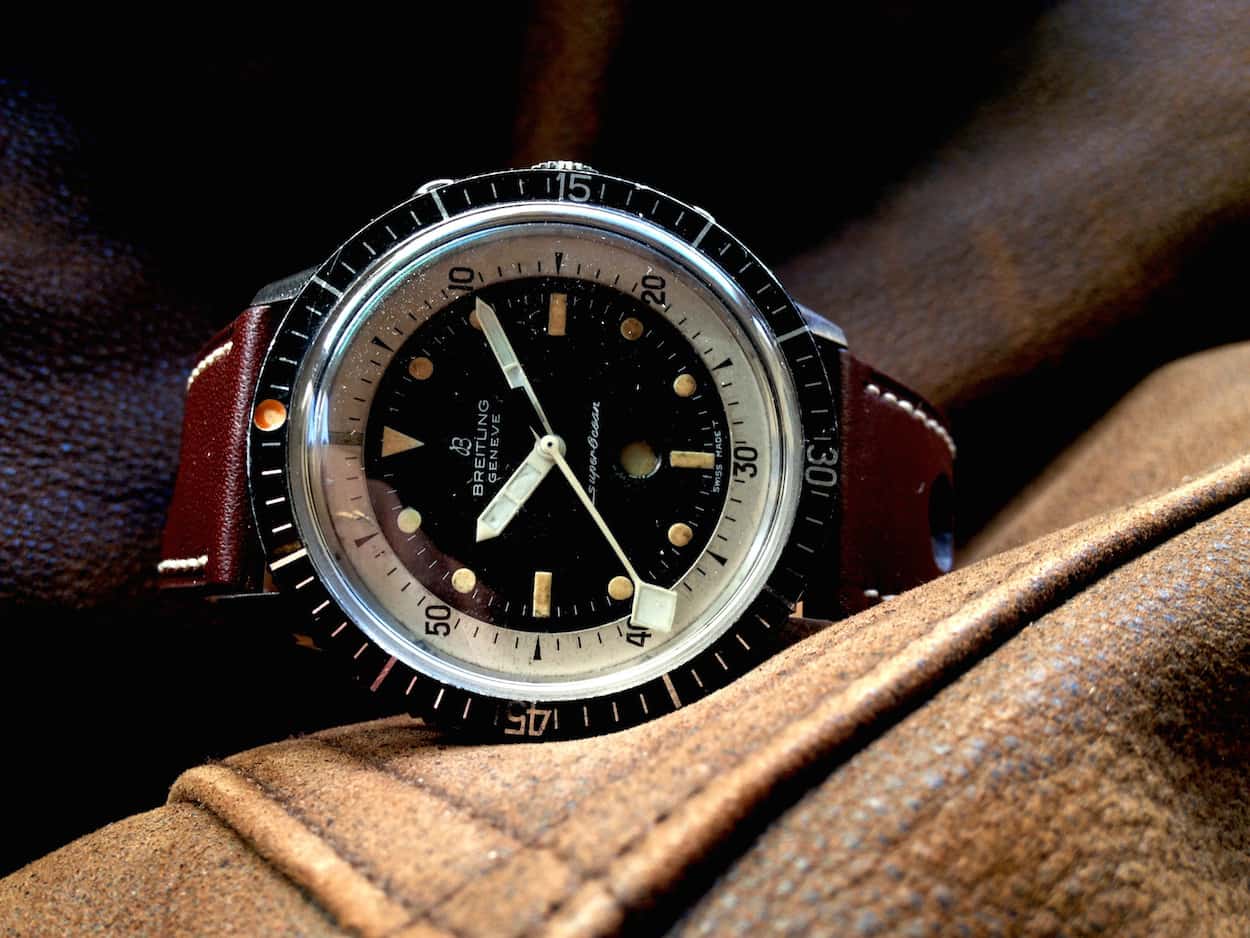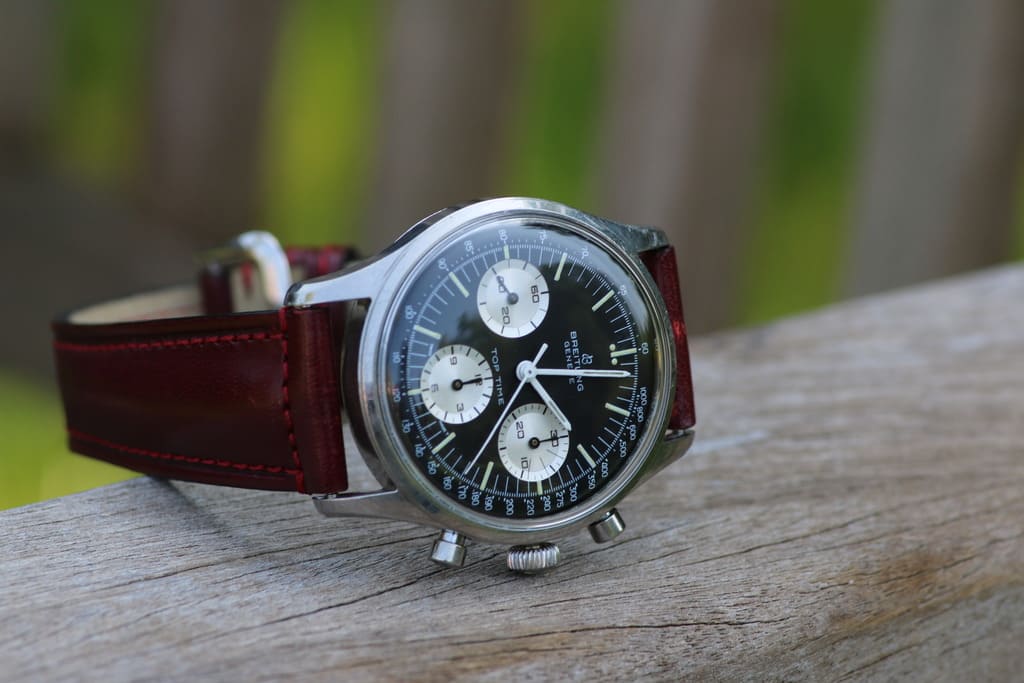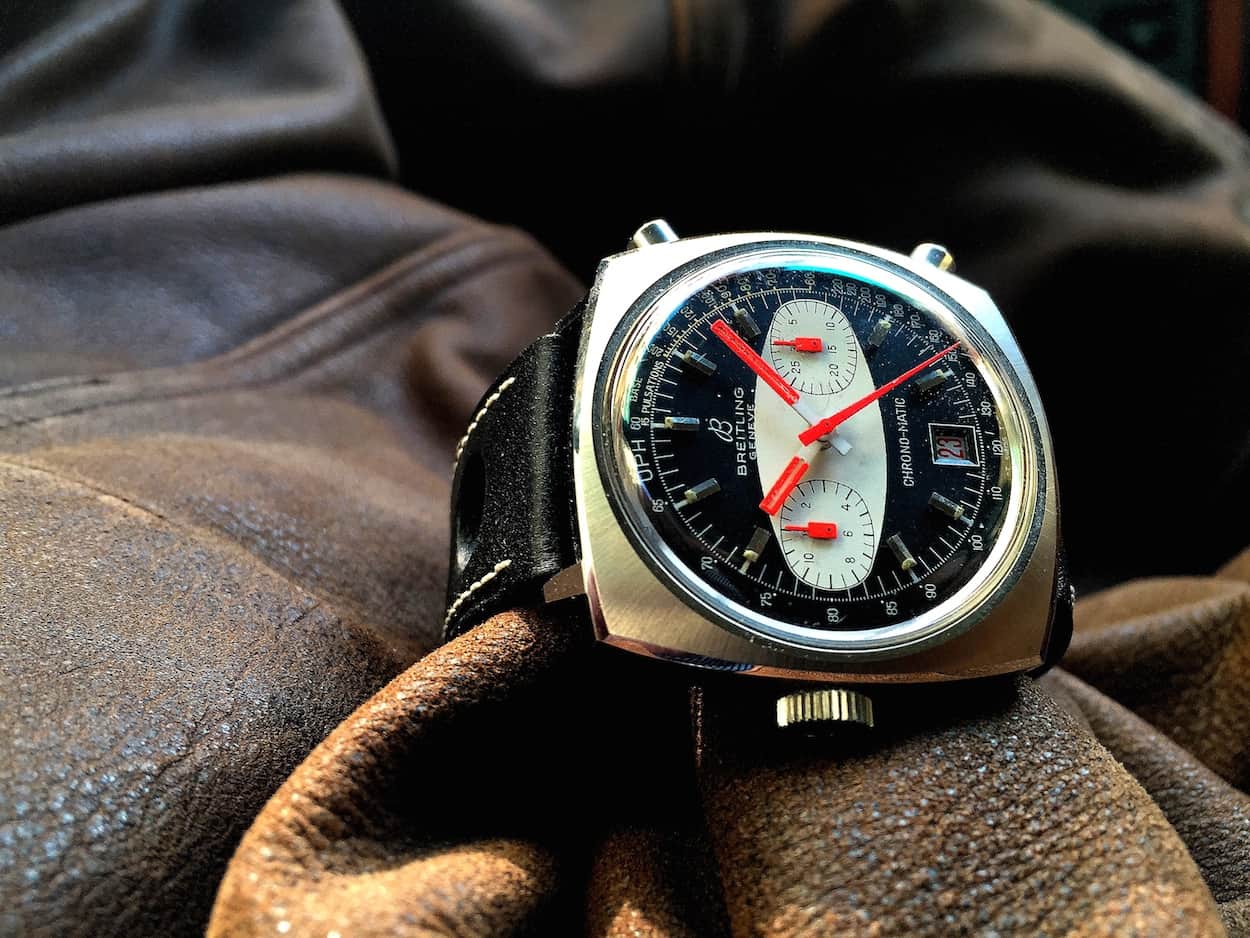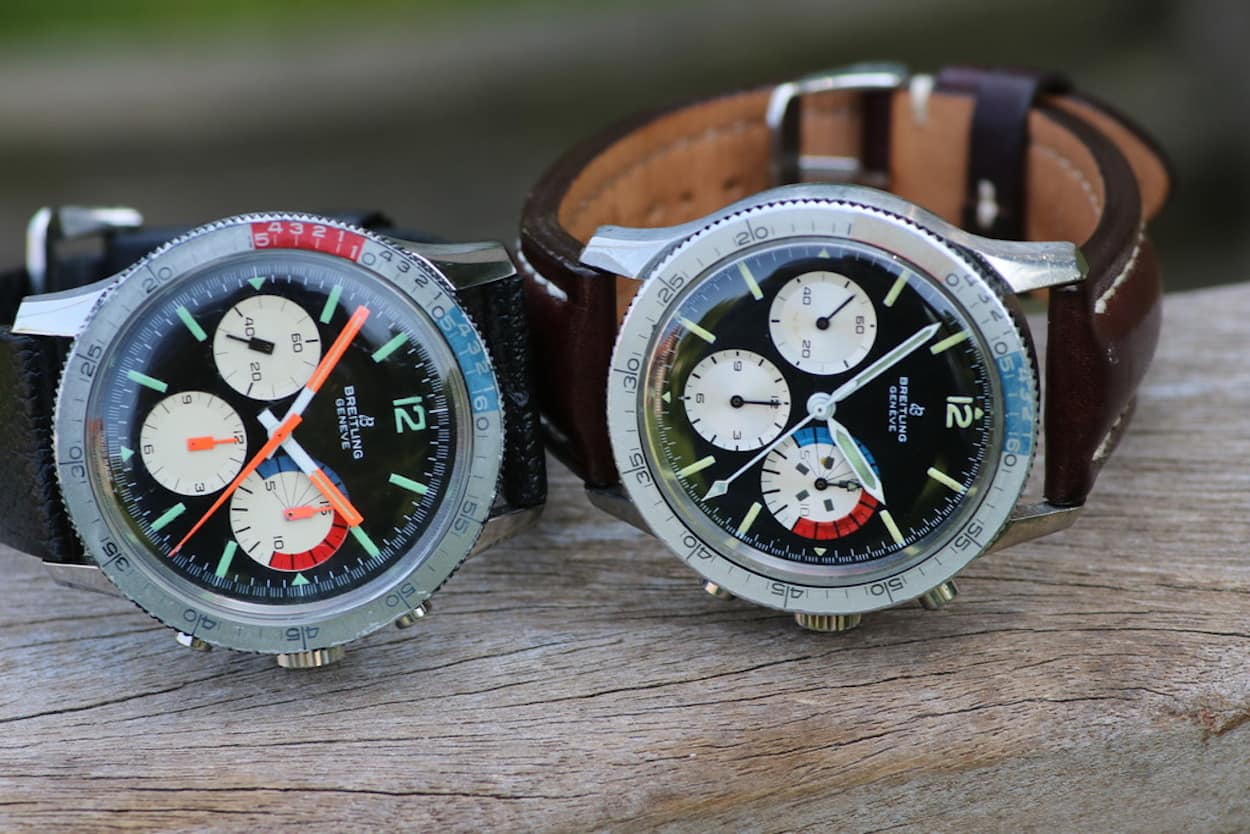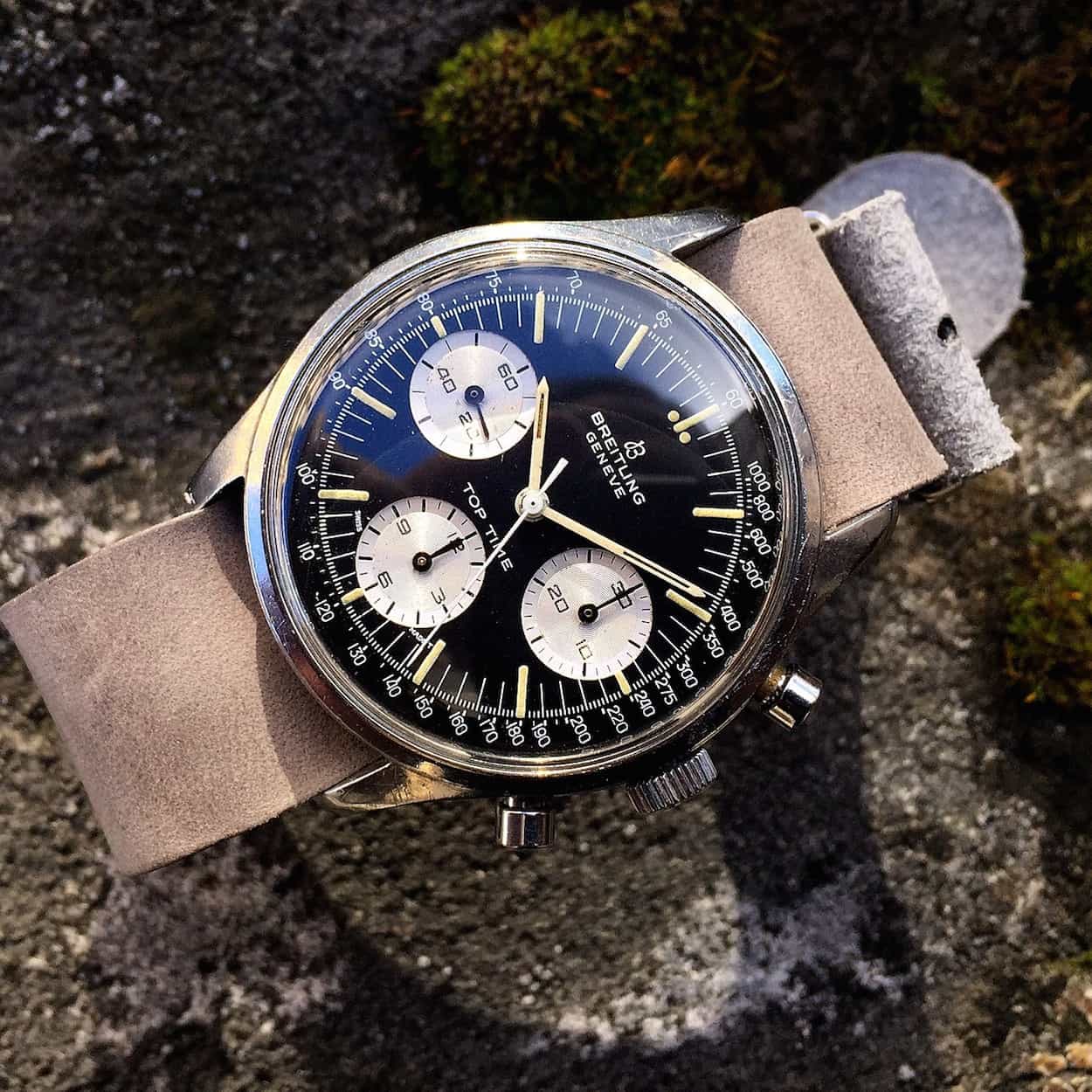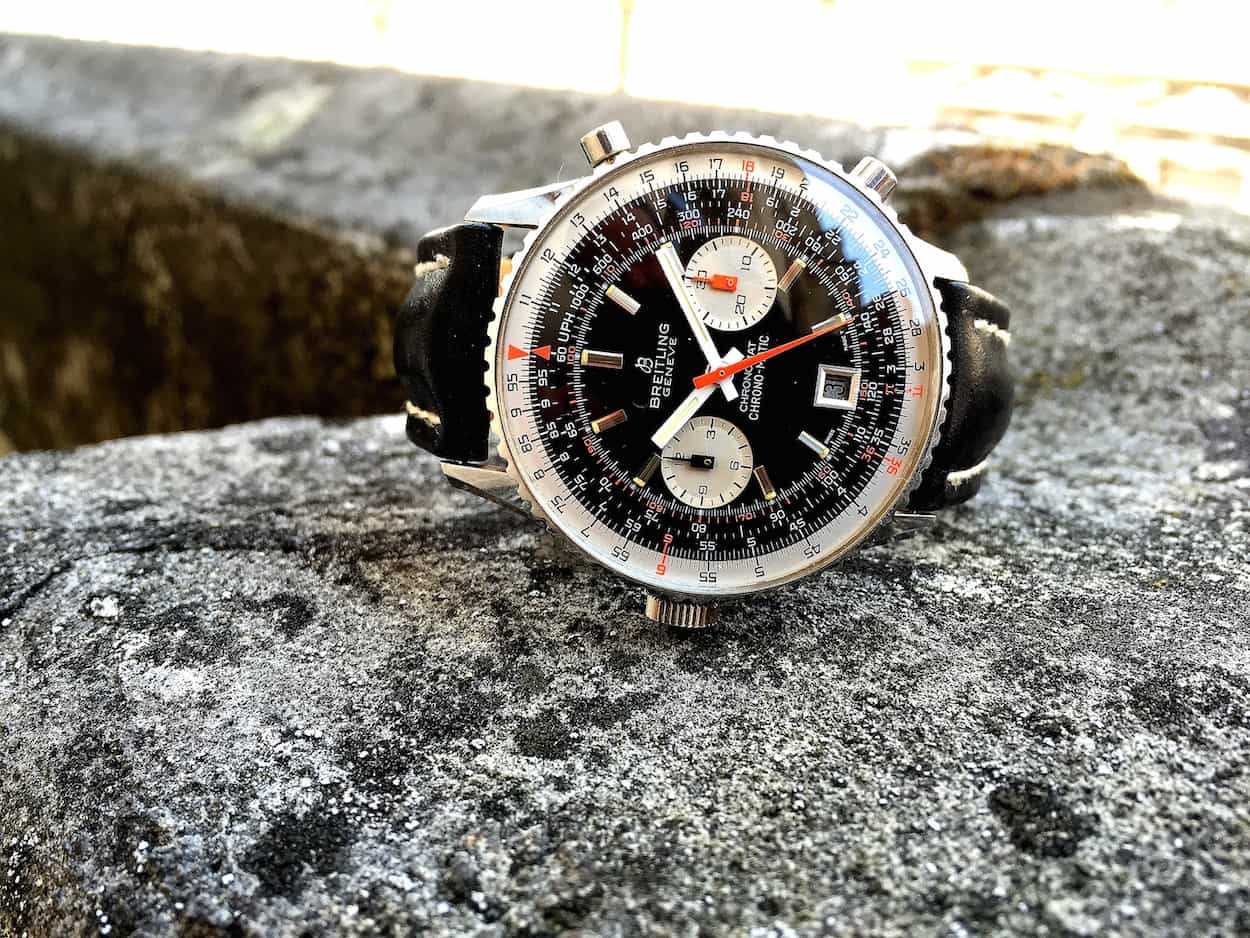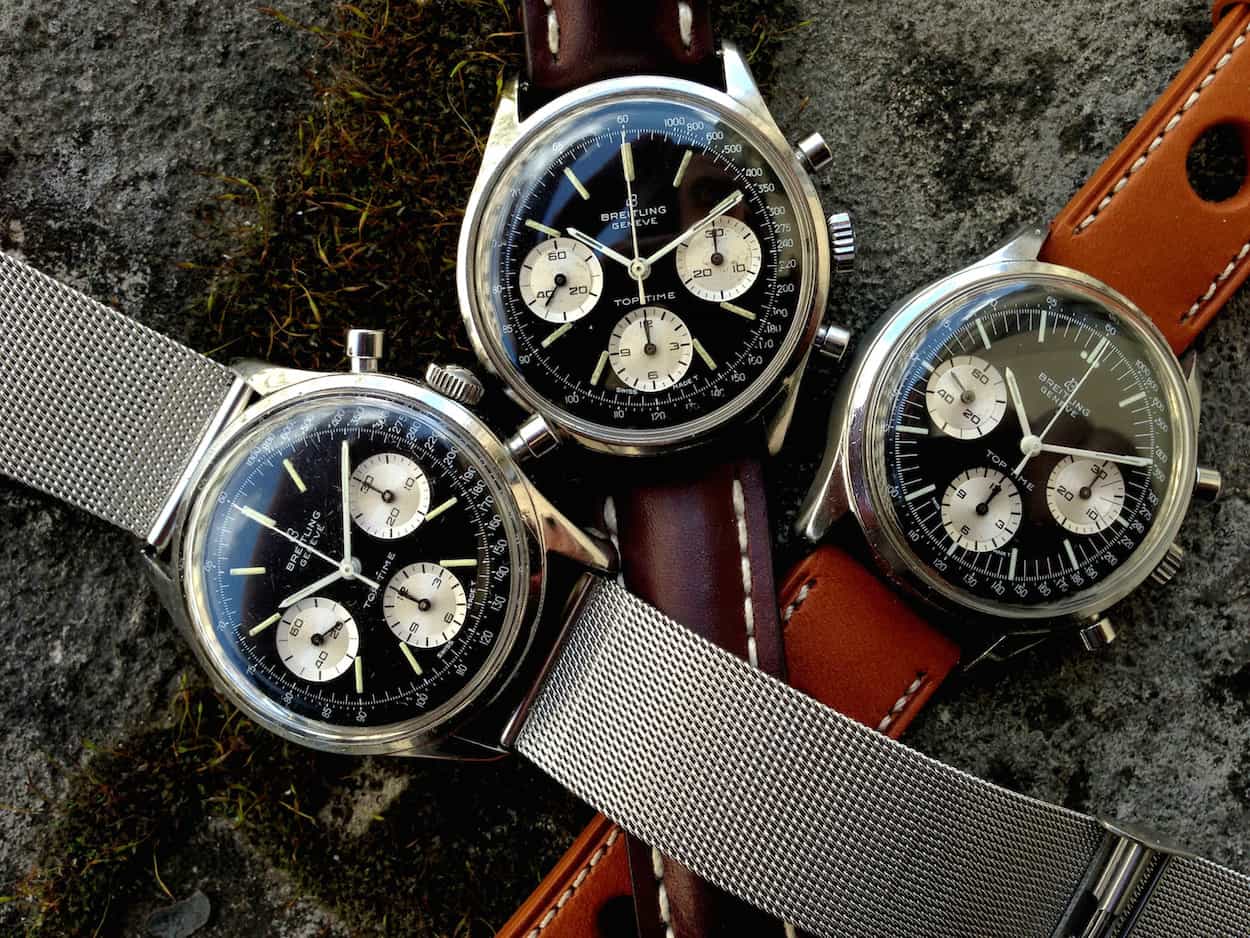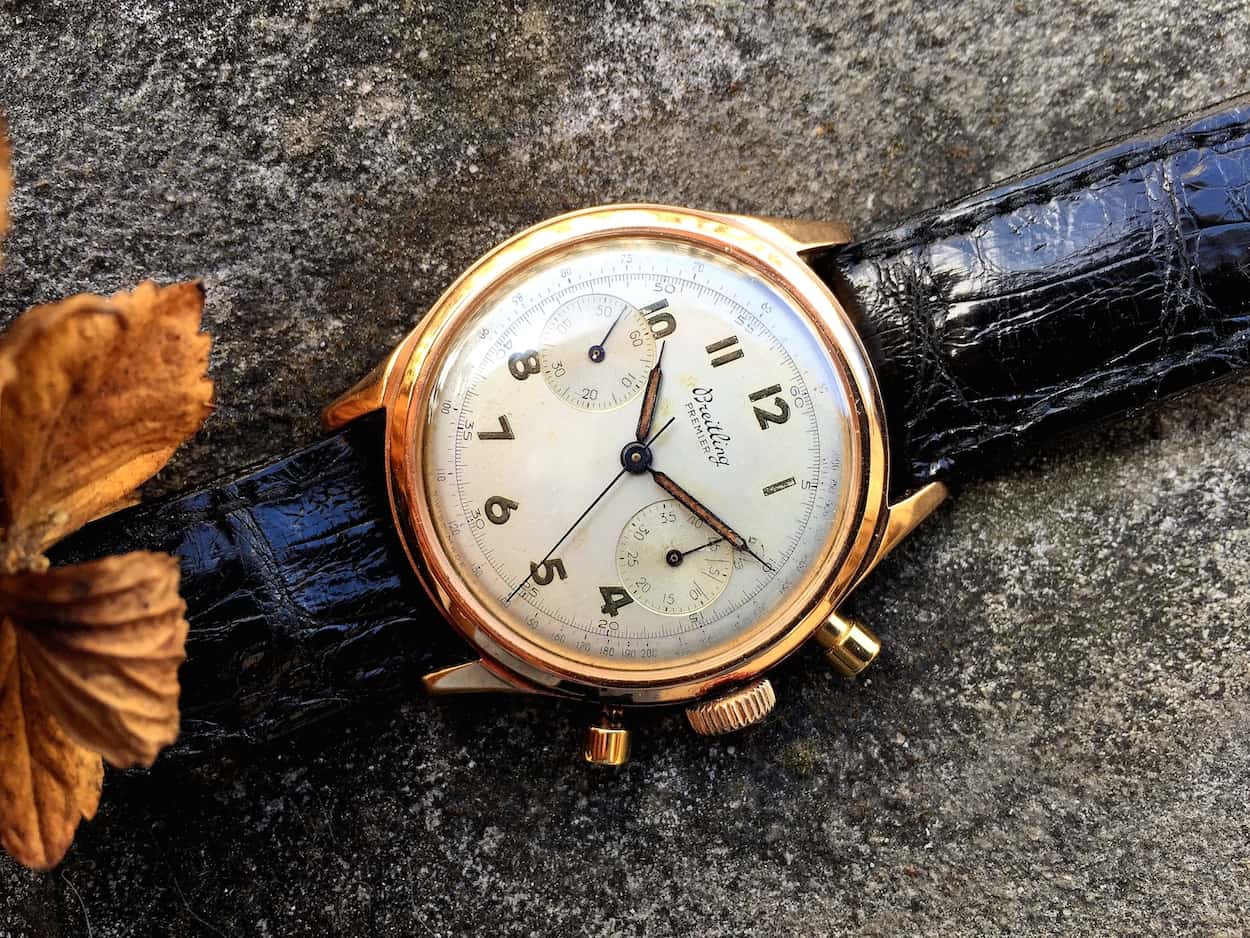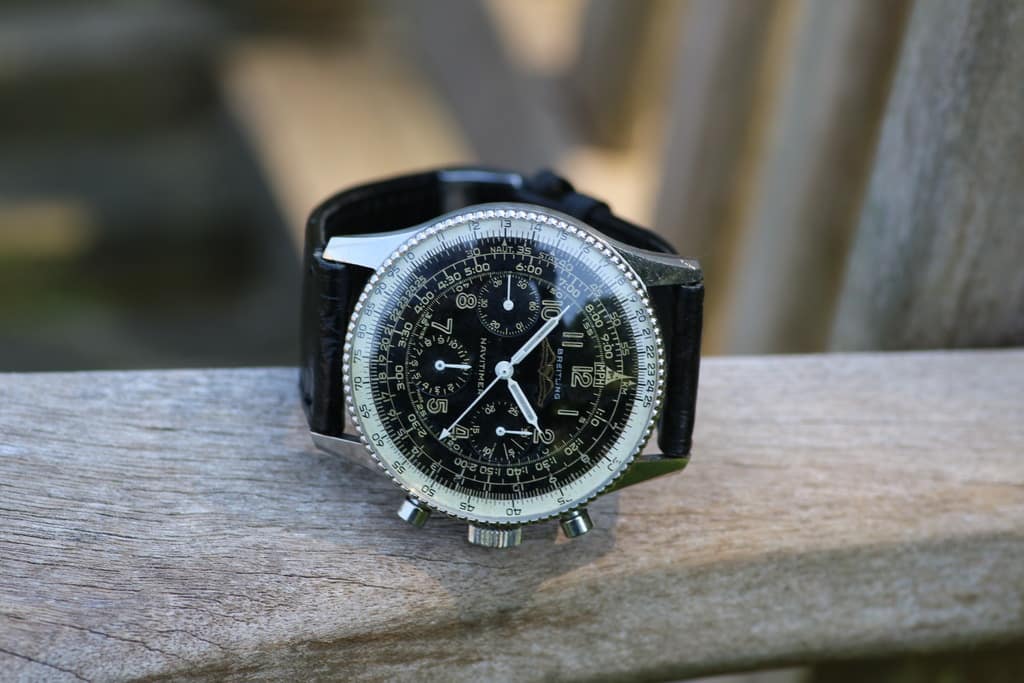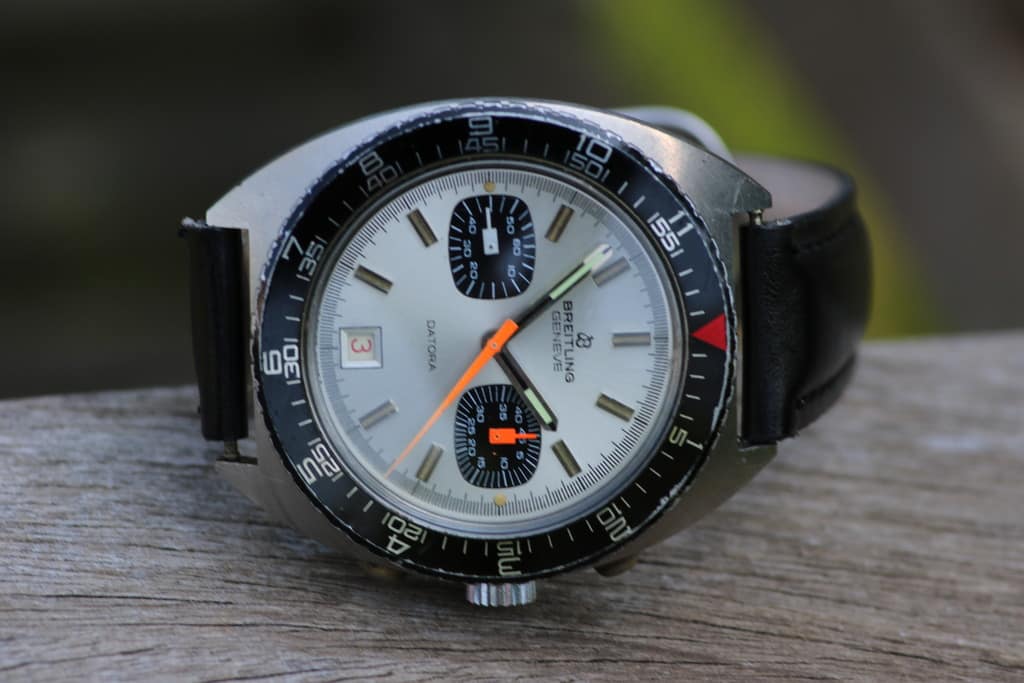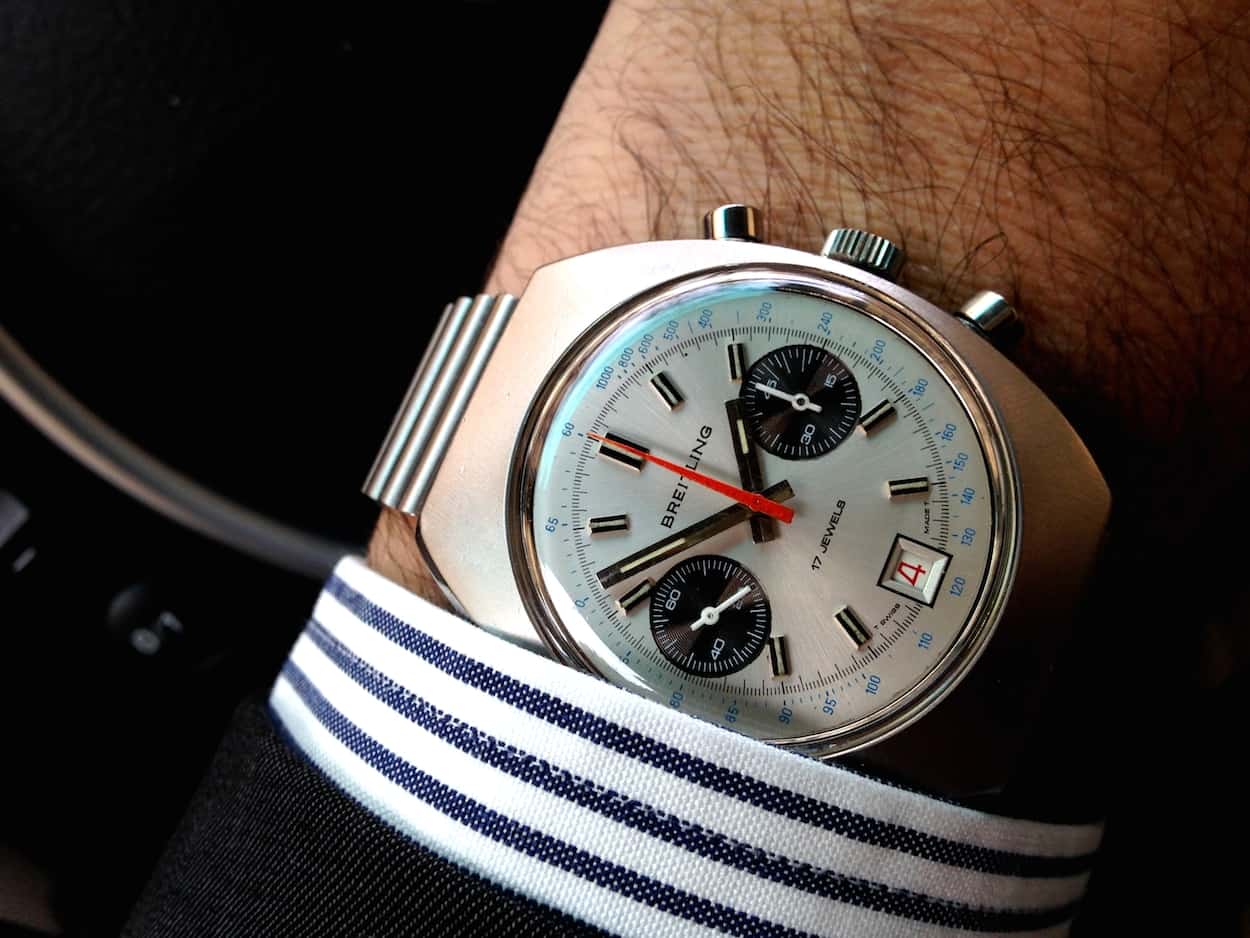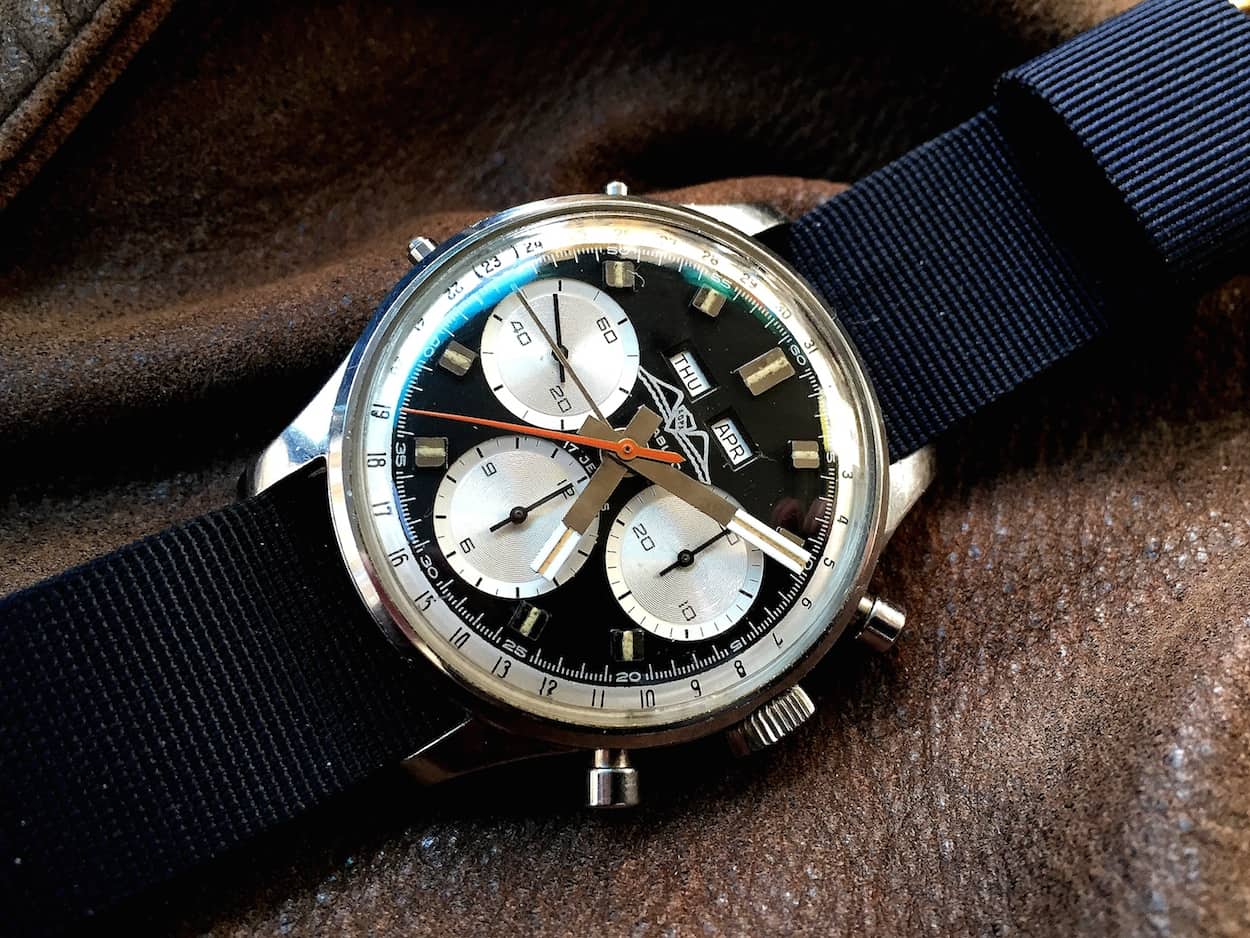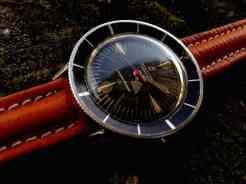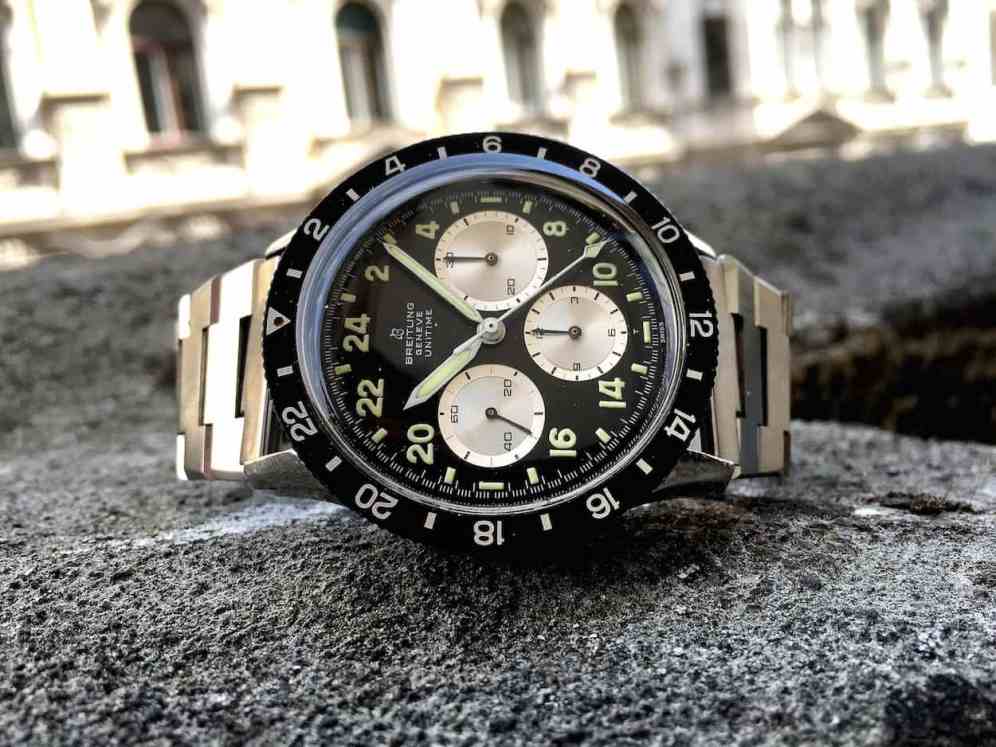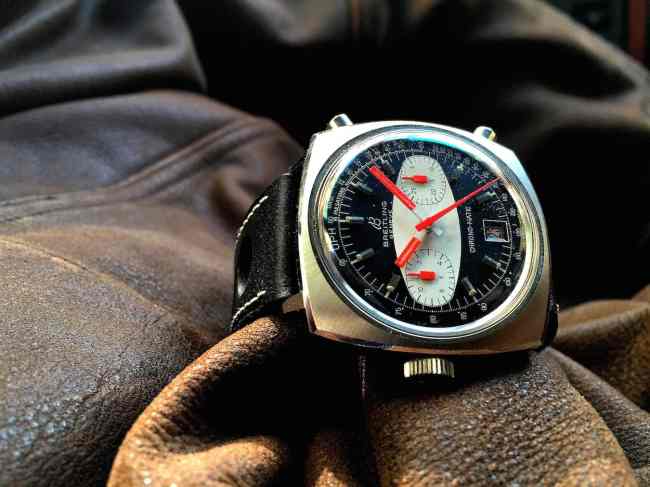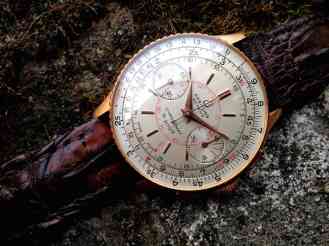Vintage Breitling: the Expert Interviews
Breitling is a brand that we recently featured as one of our top buys for collectors in our Vintage Market Update – The Chronographs. I mentioned that there’s a broad back catalog of pieces worthy of consideration due to their looks and innovative features. When I published the article, though, I stepped back and realized that while I did the brand some service by surfacing the topic, an opportunity existed to give collectors a better sense of the brand. Of course, we’ve touched on the brand in a couple #TBT articles where we featured the Top Time 814 and, more recently, the 765 CP. Still, how could Fratello Watches best cover the brand and begin to make some of the vintage Breitling lines more of a household name?
Well, today’s Special Feature is the culmination of that idea, but as you’ll see, I’ve relied on others in creating what we think will be an invaluable resource for collectors. We have published this Breitling expert interview before (in 2015), but with the new ownership and new CEO (Georges Kern), we thought it would be nice to bring it to your attention again.
Pult/Pupitre ref.2117 & 7101from 1972
I’d advise that you not try to digest this article with your smartphone while transiting to work, as there’s a ton of content here, but, rather, enjoy it on a bigger screen, hopefully during your holidays. Grab your favorite ice-cold beverage, relax, and take in some serious knowledge sharing, as it is high time to shed some light on an underserved brand. It’s vintage Breitling time.
The Experts
When we talk about a subject such as vintage Heuer, Jeff Stein’s name surfaces almost immediately as the foremost authority on the brand. Jeff would almost surely comment that he’s not alone as an authority by any means, but his creation of OnTheDash has been such a great resource to collectors and fans that it has earned him the title. Today, we will introduce, on a wider scale at least, two contemporaries of Jeff’s (everyone knows each other, by the way) who are really the undisputed authorities on Vintage Breitling. Unlike Jeff, they prefer to remain somewhat more enigmatic, which we respect, but we thank them immensely for their participation in this interview.
First up is @watchfred. Fred is a well-known vintage watch aficionado who specializes in chronographs, but is especially known for his interest in Breitling. Fred moderates the Bretiling forum on Timezone, has an immensely popular Instagram feed, and can often be found on various forums. He provides invaluable help to collectors with questions about authenticity, but he’s also known for his “no bullsh*t” style of debunking fraudulent sellers or those who knowingly sell altered pieces. Think of him as a bit of a caped crusader within the vintage watch landscape. Oh, and his vintage collection is museum quality and happens to put Breitling’s own to shame.
Next, we have @rene_jk. Rene is known for his vintage-breitling.com website. This is probably the best resource out there today on vintage Breitling and provides some great photos and information. Rene also shares his strong knowledge about the brand within forums and strikes hard with his own style of vigilante justice against those who are out to deceive. Again, he owns a top-notch collection of Breitlings and is a great resource for help. His Instagram account is new by comparison to Fred’s but is also a highly worthwhile follow.
I should mention that Fred and Rene know each other quite well and are friends. I’ve been privy to discussions where they utilize each other’s knowledge to verify a piece and it’s a nearly scientific process: fascinating to view. They collect some common pieces and have some similar responses in some cases, but go down slightly divergent paths within the Breitling genre, as you’ll soon see. Finally, I should mention that both Fred and Rene are collectors. Rene is selling a small portion of his collection online to fund something entirely non watch-related, so I wanted to make that known. Also, the photos, by in large, have all been taken Fred and Rene…a huge thanks to them for sending and working with me to properly caption them.
With the introductions over, it’s now time to begin our interview. Class is seriously in session now, so it’s time to listen up…
The General Market
FW: Tell us a little about how and why you started collecting vintage watches?
Fred: Well, I’ve always loved vintage watches, chronographs and wrist alarms.
The first “good” watch I bought was a brand new JLC Memovox in the 1980s, which triggered my interest in this field and, of course, quickly led me to “the original”, the Vulcain Cricket – and then more Crickets, Lanco and several vintage Memovox. My first vintage chronograph was a Girard Perregaux EP04 that I loved to wear, but it took years until my love for watches turned me into a true “collector” and became more than an unfocused buying spree – my next purchases were a beautiful 18k UG cal. 291 triple date moonphase – that I still own and that still does not run properly – and more mediocre and incorrect chronographs than I’d like to remember or admit 😉
But the more I started to look at chronographs, the clearer it became that Breitling was the brand that “spoke” to me more than others – and the vintage community on breitlingsource.com gave me the support I needed to research, learn and weed out the many frankens and fakes – and then I became an addict, not a collector …
Rene: When I bought my first Breitling in 1999 (entry level Colt automatic) I joined the Breitling forum on WUS and a whole new world opened to me; all these wonderful watches that people were showing, which they just acquired or had owned for a long time. Here and there, a vintage piece popped up and I realized that I liked the vintage pieces much better than the contemporary ones; in particular I was drawn to the 50’s and 60’s Navitimers (what else) and when I started looking around I found that they were relatively affordable as well compared to contemporary Navitimers. The best source of information back then was Jean-Michel’s website, the now defunct navitimer.net (moved to here).
But it was also a time that very little knowledge was present or shared and that is where my interest grew. Trying to determine whether or not a particular watch was completely authentic, franken, or blatantly fake, comparing with other watches from the same ref and serial number ranges, conduct my own investigations, sharing findings with other collectors and slowly building up a knowledge base . Of course, I was constantly keeping an eye out for “bargains”. As time passed, I found myself with some knowledge and a small collection of Breitling watches that kept expanding to where I am today.
FW: And why did you choose Breilting as a brand of focus? What exactly about the brand interests you, especially when so many have focused on Rolex, and now Heuer, or other brands?
Fred: How do I answer that without sounding disrespectful to my many friends who collect these brands? I’ve never understood why a collector would turn to Rolex and I know I’m quite lonely in this opinion. They are marketing masters and have been for decades, but somehow I can’t really get excited about miniscule differences in dial designs, rails, single or double underlines or what order the Rolex, the Oyster and the Cosmograph are in – and if you are a chronograph aficionado, what makes those mass produced Valjoux movements everybody was using so unique and special the moment they are installed in a Rolex-designed case and are covered by a Singer dial? Heresy, I know.
Heuer is a different story, I have several pieces in my collection, a mid 1940’s Triple Date chronograph with a beautiful black dial is among my favorite watches, I love to wear my Andretti and there are several more 1960’s Heuer I would love to own – but the only relevant horological innovation before Project 99 with Breitling and Bueren were the Seafarers produced for Abercrombie & Fitch; Jeff Stein will forgive me, I hope, but a rotating tachy bezel as a key innovation, really ?
My collection centers around “relevant” vintage chronographs I can afford, so single pusher Patek Philippe from the late 1930’s are sadly not on my search radar – but many other brands are; Excelsior Park & Angelus, the rare true “in-house” manufacturers of the 1940’s – every collection should include one of the superb 1940’s Angelus Chronodato. Excelsior Park manufactured movements and complete watches for Gallet, Girard Perregaux, Zenith and others; superb movements, smoother and “crisper” than all others for me. The Jardur Bezelmeter, highly innovative aviator’s chronographs from the late 1930’s and early 1940’s, the Benrus Sky Chiefs, the Zenith cal. 146’s, the El Primero – and, of course Universal Geneve Compax, Aero-Compax and Tri-Compax.
The current product line by Breitling (don’t get me started here, you could not print what I think about many of the current models) might make it hard to believe, but a look into the back catalogs of Breitling will reveal four decades of fireworks of innovation – bold, gutsy designs, unique ideas.
Breitling has been a leading innovator in that field, have helped define how chronographs look and function until today, launched the first wrist chronograph with a pusher at 2:00 in 1915, presented the first dual pusher wrist chronograph with pushers at 2:00 and 4:00 in 1933, and applied for the patent for the first “Smart Watch” chronograph in 1940.
The mid 1940’s catalog shows 60(!) chronograph models from up/down chronographs of the “Populaires” line with the Breitling-co-developed Venus 170 calibers to the most complex Rattrapante models of the Duograph family.
Breitling continued to be an industry leader until their sad demise in 1979, but even that “end” had true style. Willy Breitling, who had taken over the reins of the company in 1933 at the age of 19 and had led it through more than four decades of success, did not apply for bankruptcy protection when the market tanked during the Quartz crisis. He slowly sold off machinery, parts stock and completed watches, paid off all his creditors, and only then closed the company he had so impressively led; a true Gentleman.
We’ll talk a bit more about some of the unique models a bit later, I’m sure, but any chrono aficionado can’t really neglect Breitling – the original Breitling.
Rene: Hmm…why not Rolex…honestly? They all kinda look the same don’t they? Ok ok ok … meters first, feet last, rail dials, red print on the dial or not, but they’re still the same watch and look kinda boring don’t they? And omnipresent as well, look at any (vintage) watch shop window and Rolex is everywhere. Don’t get me wrong here, I do not put them down or anything like that as I do own a few vintage Rolex watches as well, but every model is available. You just need X amount of money, call your local vintage watch dealer, tell him which model you want and it will be delivered to your doorstep the next day. For me, collecting is as much the thrill of the chase as the “kill”. Years of hunting, looking, and searching to find that 1 watch you have been looking for is the driver. I know this is not for everyone but it thrills me to finally find that watch and seeing it’s 100% original and then to be able to buy it. Likewise, there’s even the agony of disappointment in finding that watch and seeing it’s been horribly mutilated.
Heuer, this may seem weird but Heuer was never on my radar. They were co-developers of the Caliber 11 (with Buren, Hamilton etc.) but they never appealed to me as (and this is of course absolutely personal) they seemed to lack the model ranges to pick and choose from, whereas Breitling seemed to cover the widest range of attractive watches that covered most (all?) uses through various eras from roughly 1940’s to the end of the 1970’s.
From Pilot watches such as the Navitimer and AVI ranges, Astronaut Space watches such as the 24 hr. Cosmonaute, Dive watches such as the SuperOcean, Calculator watches like the Chronomats, and even some highly specialized watches like the football Referee with slow moving chronograph with a 45 minute ‘count down’ bezel to keep track of played time.
FW: What is the current state of the vintage Breitling market and where do you think it’s heading?
Fred: I do not have a clear cut answer to that question – some of the models have risen nicely with the general market (“all blacks” Venus 178 Navitimers of the 1950’s and good examples of the reverse panda of the 1960’s, the Cosmonautes, the round dial small case Top Times, some of the Top Time Square models, the Datora and Premier of the 1940’s & 1950’s, the early Chronomat).
Others have exploded, doubled, tripled and more – early R72 Navitimers, 1950’s and 1960’s SuperOcean Dive watches, the 765 AVI, Co-Pilot and Yachting, the 1765 Unitime AVI or the large case Top Time 810’s with the reverse panda dials.
Some seem to lag the market, the “big case” Navitimer cal. 11 & 12, the non-WP Top Time Square, some of the very attractive smaller Chrono-Matics have remained quite stable.
My expectation would be that some of those lagging pieces will start to catch up when collectors start to notice how affordable they still are – and I’d be surprised if the “high flyers” would not continue their rise, though clearly not at the pace of the last years.
Rene: From what I have seen over the last years Breitling has been keeping a steady pace increasing in value, much the same as Heuer? Some models are increasing enormously (Valjoux 72 Navitimers, ref 765 AVI/CP , SuperOceans, and others do well (early all black or b/w Navitimers etc.) and have been steadily following the market prices. A rising tide lifts all ships and this is certainly the case with Breitling as well. Where is it heading? Read this article and you’ll have a pretty good idea where its heading (Interviewer note: thanks for the plug).
We’ve seen a growing interest in Vintage watches, a steadily increasing number of people that wear vintage watches, and more and more visibility everywhere that shows interesting brands with an interesting heritage. The hardcore Military collector will seek out the ref 817 CP-1 E.I Esercito Italiano and the trendsetter may opt for a colored resin cased Sprint and I do not believe that this will come to a halt or slowdown any time soon.
FW: Why should collectors take notice of Breitling and is there anything they should know that might cause them to “open their eyes” to this historic brand?
Fred: As we’ve discussed above, any chronograph collector with open eyes should not be blinded by some of the current behemoths that carry the Breitling brand name. Historically, the company might have been the most important innovator in the chronograph field with patents and designs that have defined the market. Breitling influenced how a chronograph functions today and defined a lot of the “looks” of classic modern chronographs too.
I’ve mentioned the 1940 patent for the first “Smart Watch” chronograph, the Chronomat 769 and 786 with a rotating logarithmic slide rule, a “tool for Mathematicians and Engineers” that allowed for complex calculations with the turn of your fingers, not taps like today…
The Chronomat (derived from CHRONOgraph for MAThematicians) actually was the chronograph that made me fall in love with Breitling, such beautiful watches, wonderful, unique dials, and superb movements. The later Navitimer is only a variation of this design that keeps defining the brand DNA through today almost 75 years later.
We don’t have the space and time to go through the many more wonderful models of the 1940’s and 1950’s that aren’t too widely known. Breitling was the launch partner for the Venus rattrapante calibers; the Duograph were among the most complicated watches in production during that period. It had the Venus 187 chronograph caliber with moonphase, and a date and hour totalizer that was exclusive to Breitling. Another model, the Datora ref. 799, from the late 1940’s is amongst the most elegant chronographs I’ve ever seen.
In 1939 Willy Breitling established a Military Aviation division, producing aircraft instruments for the Allied Forces (personally breaking the embargo to keep up supplies, the story goes) and some exceptional wrist chronographs. The Premier 734 & 765 are examples and, again, are among my favorites.
I’m sure Rene will talk about “his” 765 AVI of the early 1950’s and tell you how they preceded the Breguet XX – but that “digital” minute counter piece, isn’t that a sensational beauty and totally unique?
The list of innovations goes on: superbly elegant Unitime Worldtimers in the early 1950’s, the transOcean Dive Watches launched in 1957, with the ref. 807 Dive Chronograph apparently the first “panda” chronograph dial ever produced by any manufacturer.
Willy Breitling led the industry panel that tried very successfully to revive the lagging chronograph market in the early 1960’s, with industry wide sales more than tripling between 1964 and 1967. Breitling introduced dozens of new models again: the unique in-house modifications for the Venus 188 in the “Slow Motion” Dive Chronographs SuperOcean ref. 2005 with a huge “Chrono seconds hand” that was counting dive minutes, not seconds, and also with an activity indicator window at 6 that would make sure the diver doesn’t accidentally pause the watch.
This was also the era of the Top Times, round & square, beautiful “classic” chronographs.
You also saw the rotating bezel Sprints.
Then came the Project 99 watches – whether first, second or third automatic chronograph calibers depends on your point of view, but look at those designs!
1967, when watches had slowly started to grow a bit – and then Breitling launches a line of bold, gutsy andunique designs with a diameter of 47mm!
Among these were the first 20ATM Automatic Dive Chrono SuperOcean refs 2105 presented in 1969.
Rene: If you look at a Vintage Breitling the first thing you will notice is the dial. And although the dial might be a bit busy for some, as in the Navitimer, the dial quality is just breathtaking. No sloppy lume jobs, no misprints, down to the smallest detail it is absolutely perfect. Combined with a Stainless Steel case and a manual wound Valjoux 72 or Venus (175, 178, 188 etc.) column wheel movement that has a very high degree of finishing and you have a very attractive watch that will stand the test of time.
In many cases Breitling modified the movement to their spec. The Venus 178 used in the 765 AVI/CP lines has a 15-minute counter instead of the ‘normal’ 30 minutes and had, in some cases, an ‘aperture window with minute disk’ instead of the normal sub dial with a hand. Rumor has it the 15-minute counter was done because Aircrews had 15 minutes to get an aircraft ready for takeoff and this allowed them to keep track of those 15 minutes easier than with a 30-minute counter.
The Venus 188 used in the SuperOceans was modified to a ‘slow moving chronograph’ where the center chrono hand moved around the dial once per hour instead of once per minute like the usual chronographs do.
FW: On that note, why do you think that the Breitling vintage market has been relatively quiet compared to other legendary chronograph brands?
Fred: If I only knew… Maybe the fact that so many fake and Franken pieces are on the market, mass produced in South America, Turkey, Spain, Italy, China (though they thankfully specialize in three-handed pieces only)? It is sometimes said that 90% of the vintage Breitling are fake or incorrect, and that probably isn’t too far from the truth, and most collectors just do not know how easy it is to verify pieces and find competent help.
A “modern” Breitling that seems to know and care little to nothing about their heritage besides some PR blurbs, often blatantly incorrect, allowing online “museums” to carry that name and display watches they cut and paste from eBay listings with a clear majority of them being absurd fakes?
The fact some current Breitling models aren’t too attractive can’t really be the reason, looking at modern (TAG) Heuer, can it?
Jeff Stein made Heuer collecting relatively easy (as long as you are ready and able to pay the current prices) with his superb site, documenting models and executions. We have a long way to go here and a huge task ahead. We have 200+ chronograph model references to document (some with a dozen executions over their life spans of three decades or more), but we’ve done a lot of that work already…
Rene: Good question, I think one of the main reasons is availability of the watches. Even though they have a rock solid provenance in Space watches as Cmd. Scott Carpenter had the Cosmonaute built to his specs as he wanted a 24 hour watch when he flew with the Aurora 7 mission in 1962. Thus, it made the Cosmonaute the first documented Chronograph in space. Aviation watches through the 806 Navitimer and 765 AVI, Military with the ref 817 for the Italian and one-pusher chronographs for the CND (Canadian) Military, etc. The availability of all of these seems to be a major issue. For instance, of the 817 only 24 pieces have surfaced so far that I could find. That is not a whole lot of watches and for that reason it has stayed under the radar for a lot of collectors. Returning to the 1962 Cosmonaute, I have seen less than a dozen of these and as long as people do not see and notice these watches or realize the significance of them, they will remain below the radar.
I also believe most people do not realize the influence that Breitling has had on the watch industry. For example, we can discuss the 1953 ref 765 AVI. Whenever I show this watch to fellow collectors who are not familiar with Breitling, the first reaction I get is “Oh nice” and “It looks just like the Breguet type XX / XXI”. What they do not immediately realize is that the Breguet type XX, as far as I know, was released in 1954 and the Breitling in 1953. So, which watch manufacturer copied which? But again, availability of these very early ref 765 AVI’s is almost non-existent, so it stays under the radar as well.
To expand a little more on these particular watches, the “all black” dialed 765 AVI’s of 1952/1953, per the rumors, were developed during intense negotiations w/ the French Air force. The AVI was developed based on the ref. 765, from the Breitling ‘Huit 8’ aviation department, adapting the 30-minute counter to 15 minutes and adding the 12h bezel. Prototypes, or a small series, were delivered and then the political connections of Breguet/Vixa changed the tender specs to add flyback functions and Breitling lost the contract. Unsubstantiated, unproven and probably not provable today, as most corporate documents were not passed on to the new trademark owner, Mr. Schneider. These documents are probably still lying somewhere in a safe waiting to be made public or just destroyed as ‘no longer relevant paperwork’.
Some of the 765 AVI watches I have seen also have an extra number engraved on the back below the ‘AVI’ stamp. The original watch owner told one new owner that this was a serial number from the French Air force. If this is correct, and I have no reason to doubt it, there are “all black” AVI’s out there that were also purchased by the French air force and I assume these were handed to their pilots and/or navigators as tools of the trade and returned after service. The “French air force” pieces are again a combination of ‘Aperture window’ and ‘analog’ watches where the extra number does not seem to follow any serial number range.
FW: Most people think of aviation when they picture Breitling, which is perhaps due to their current advertising. However, I’ve learned that there’s a lot more to the brand. As an example, Rene, you “broke” the story on the Jean Claude Killy 765 CP. Who else wore Breitlings and what was their claim to fame?
Fred: Well, Jean Claude Killy is clearly Renè’s find and a great one, isn’t it?
The real “Mr. Rolex” wearing a beautiful Breitling during the most relevant races of his life?
I’m not too motivated by the celebrity factor and some of the current brand “ambassadors” make me cringe, but the “James Bond Top Time” Sean Connery wears in Thunderball is a nice twist, the Geiger counter movie prop watch auctioned by Christie’s is by far the most expensive vintage “Breitling” ever sold, some $200,000 after fees.
I’ve always been a fan of Jim Clark – isn’t it funny I first bought a black Gallet Multichron 12 touted to be a “Jim Clark”, though thousands of pictures never show a Gallet on Jim’s wrist? There’s only a letter claimed to be by one of his mechanics saying he’s worn one?
But Jim clearly wore an Enicar Sherpa Graph in the mid 60s and then, in 1967, switched to a Breitling Navitimer 806 “twin plane” reverse panda!
We’ve found dozens of pictures documenting this, Jim Clark (& Graham Hill too, btw) sitting in or on the F1 cars, Monte Carlo, Le Mans, Brands Hatch, in discussion with Colin Chapman, Keith Duckworth (and Graham standing next to the real Nina with his Navitimer 806 on the wrist).
And then there is the “Mr. Cool” of Jazz, I love seeing that Navitimer 806 on Miles Davis’ wrist; some great pictures too, btw.
Rene: The Jean-Claude Killy story is funny actually. We all know the “Jean Claude Killy Rolex Dato-Compax” and as I had very recently acquired a mint Breitling Datora ref 785, which has more than just a passing similarity to the Rolex Dato-Compax, I started searching for pictures that actually show JCK wearing the watch during the Olympics. I found it strange that an athlete would actually wear such a delicate watch during his performance, so when I stumbled across a pic with the caption “JCK wearing his Rolex”, I fully expected to see a Rolex on his arm. Upon further inspection, though, it wasn’t a Dato-Compax, and not even a Rolex. It turned out to be a Breitling ref 765 CP from 1965-1967 and the rest, as they say, “is history”.
Some other celebrities that wore Breitling during their heydays are:
Carel Godin de Beaufort
1957 – 1964 Formula 1 racecar driver, Breitling ref 765 AVI with all black dial
Jean Claude Killy
Olympic Champion and racecar driver (Monza, LE Mans etc.), ref 765 CP, Rolex ambassador and Rolex board member
Raquel Welch
Actress ref 765 AVI black/white dial movie Fathom
James Bond (Sean Connery)
Top Time Geiger counter
Jim Clark
Formula 1 racecar driver, Breitling ref 806 Navitimer with black & white dial
Graham Hill
Formula 1 racecar driver, Breitling ref 806 Navitimer with black & white dial
Miles Davis
Musician, Breitling ref 806 Navitimer with black & white dial
Commander Scott Carpenter
Astronaut Aurora 7 Mission, Cosmonaute ref 809 with all black dial
I am sure many other celebrities wore them; it’s just a matter of scanning pics and waiting for them to become available.
Specific Models (this is a great time for a break…an intermission of sorts)
FW: What are the key Breitling vintage “families”? Here again, I think most of our readers could name the key Heuer lines, but let’s familiarize them with the Breitlings.
Fred:
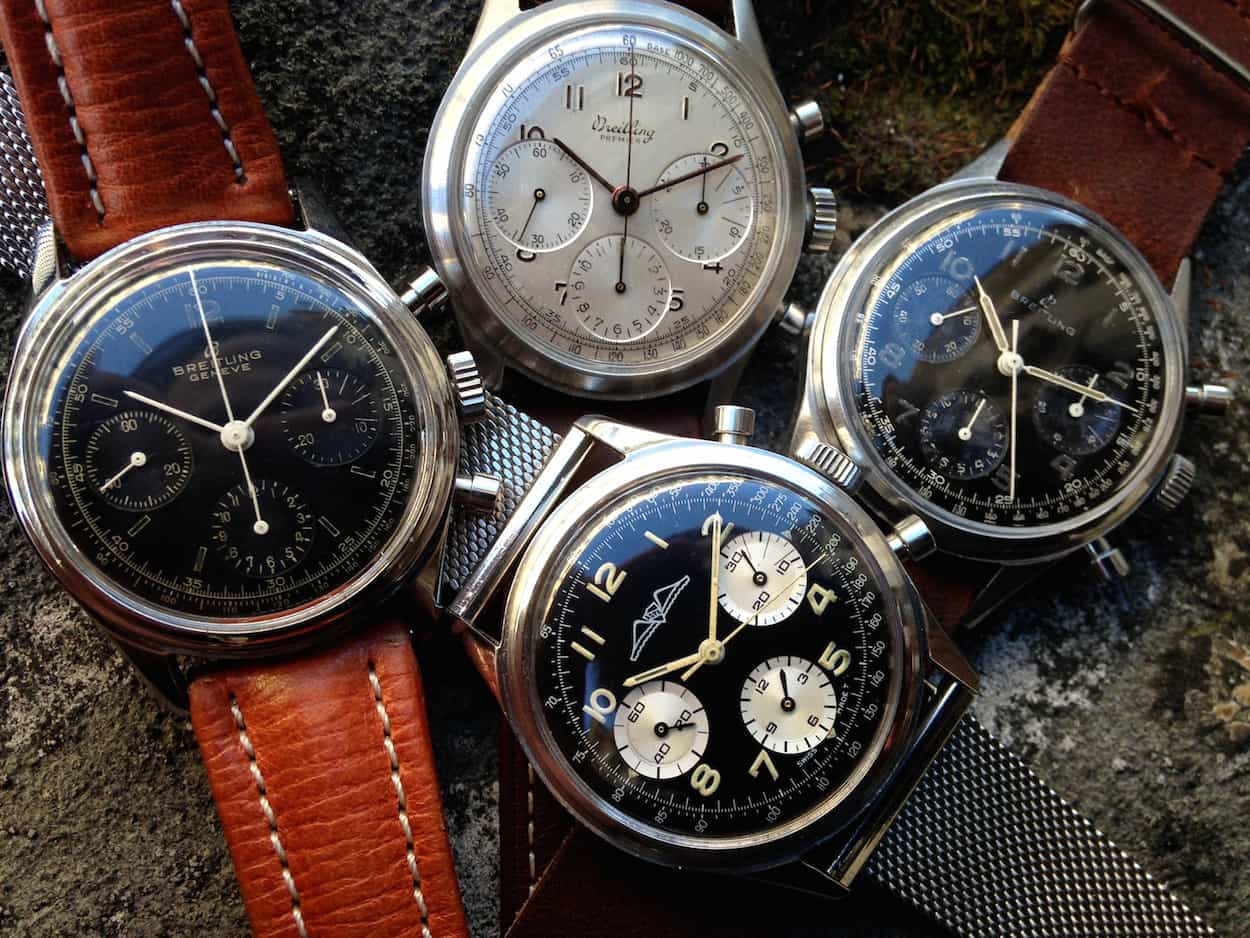
Premiers: (left) 1954 “geneve” ref.765 from 1954 (top) “civilian” ref.765 from 1946 (bottom) AOPA ref. 765 from 1965 (right) “Huit” Military Aviation ref.765 from 1947
Premier: launched in the late 1930’s, both civilian and “Breitling Huit” Military aviation models, classic chronographs, some 75 years old or more that have defined the chronograph “looks”; crown wheel calibers 150, 152, 175 & 178 by Venus SA; built until 1965, steel and some sublimely elegant 18k cases.
Datora: launched in the mid 1940’s, triple date and moonphase chronographs, steel and 18k cases, produced until the late 1950’s, some superbly elegant watches; Valjoux VZ/VZH/23C/72C/88 and the Breitling-exclusive Venus calibers 186 and 191. Branding was re-launched in the late 1960’s with a number of nice designs based on the Valjoux R7734.
Duograph: grail of grails, the Rattrapantes; Venus-based, produced from the mid 40’s to the mid 50’s only. Steel & 18k.
Superb, rare, almost impossible to find – and these are getting almost impossible to afford too.
Chronomat: the “chronographs for mathematicians” discussed above. Patent application from 1940, the “patient zero” of the Breitling design DNA – yes, even some of the current Breitling Montbrillant are slightly larger modifications of the 1940’s Chronomat.
Unitime: World Timers launched in the early 1950’s, modified in the early 1960’s, in the mid 1960’s a 24h “Co-Pilot” 765CP was created, bore the ref. 1765, named Unitime AVI. Nice watches 😉
AVI, Co-Pilot & Yachting: introduced in 1953, discussed above. Rotating 12h & Yachting bezel, huge for the period; modified and heavily modified Venus 178’s, the grail “Digital” AVI 765 has become very hard to find.
A friend has cornered the market (or so it seems) for the “all blacks” produced until the early 1960’s, then reverse panda “Raquel Welch” 765AVI until 1965, JCK 765CP until 1969, ref. 7650&7656 until the “end”. Superb, rare, very hard to find in good and truly correct condition.
Navitimer: you know that one, don’t you? Launched in 1954 (yes. 1954, ample proof for this, the 1952 myth is pure b.s.); “all blacks” with rice bead bezels that Rene has taught us to date by bead counting; lots of executions and logo variations, very rare and early Valjoux R72’s.
Most early pieces, however, are Venus 178’s.
In 1964 we see a switch to the reverse panda dial 806’s with new bezels and hands, a ton of different executions again; then the switch to the Cal. 11/12’s and the launch of the huge 816/1806 “big case”.
transOcean: introduced in 1957, these were waterproof three hands, the first to bear the twinplane logo that 7 years later appeared on the Navitimers, two chronographs of the late 1960’s and early 1970’s carry that name too; we’ve never really understood why.
SuperOcean: Diving watches, three hands and a chronograph, launched in 1957; beautiful watches, but not the best divers, so just a handful survive. Relaunched in 1965 as the “SlowMo” Dive Chrono ref. 2005, the 1969 Auto Dive Chrono ref. 2105.
Cosmonaute: the first Swiss wrist watch in space and a very unique model line; launched in 1963 after Scott Carpenter too his prototype aboard Mercury 7; modified Venus cal. 178; the early “wide bezel” versions are uber rare and very hard to find, later models can be found, but not too many are correct and have aged nicely.
Top Time (and Sprint): small and large cases, round & square, a line of “young” chronographs, produced between 1964 and the very early 1970’s; Venus 175, 178 and 188, switches to Valjoux in 67/68.
Rene:
As the original Breitling Company had over 200 models, spanning many decades with many executions, I personally believe it would be way too much to list them all. Therefore, I limited myself to the more known and recognizable lines.
Navitimer/Cosmonaute (806/809):
I think everyone is familiar with the Navitimer and doesn’t really need an introduction, Available in “all black” dial (1954 to 1963) and black/white dials (1963 to end of the 1970’s)
Chronomat (769 / 808):
One of the first “wrist computers”, the watch was equipped with a circular slide rule to solve equations. It provided a slide rule accessible the tip of the fingers for many engineers. Many different dial combinations were available.
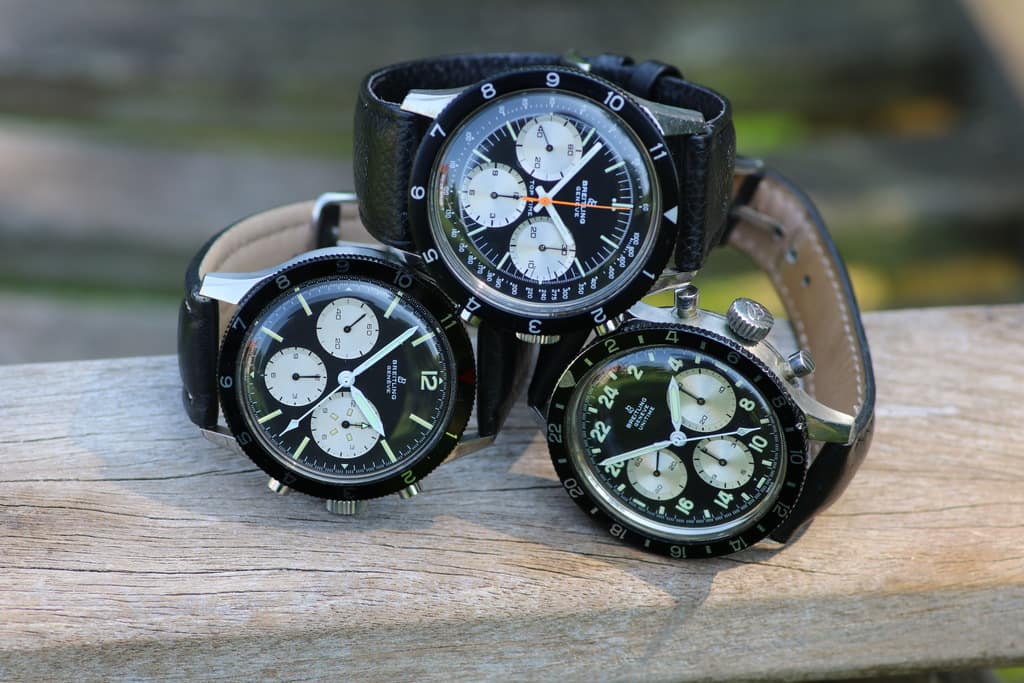
(top) Top Time ref.1765 from early 1970’s (left) CP ref.765 from 1965 (right) Unitime AVI ref.1765 from 1965
AVI / CP / Unitime (765 / 1765 / 7650 / 7656):
Rugged Pilots & Sports watch with supreme readability and rotating 12 or 24-hour bezel.
SuperOcean (1004 / 807 / 2005 / 2105):
Dive watches with either the “normal” 3-hand automatic ref 1004 or the manual chronographs 807 & 2005. The 2015 SuperOcean is equipped with the cal-11 movement and is one of the 1st (if not the 1st) automatic chronograph dive watches ever built.
Top Time 810:
The classic chronograph with tachy scale next to the dial, no rotating bezel and has a Venus 178 movement.
Chrono-Matic (211x):
Breitling cal-11 watches, similar to the Heuer Autavia, and other cal-11 watches.
Sprint:
These are entry-level chronographs with various movements.
FW: What are some of your favorite models? Please give the readers a few words on each to explain why you favor them?
Fred: I think I’ve covered that above. 🙂
Rene: My personal favorites are the 765 AVI / CP.
The 1765 Unitime…and the SuperOceans 1004 , 807 and 2005. These are incredibly nice watches, built like the proverbial “beep” house, and have fantastic size from 39 to 42mm. They contain very interesting movements, history, and the dials are less cluttered than the Navitimers. Also, the initial waterproofness (is that even a word?) means that even though I would not recommend swimming with them, they were made to withstand water and are IMO much better suited for day to day use and wear. Also, they are also much rarer than the Navitimers, which appeals to my collector side.
FW: Now let’s set the internet on fire. What are your top 5 “top buy” picks for prospective buyers? These can be pieces that have already achieved higher values but are poised for more. Or, they can be slightly under the radar pieces that have yet to reach their potential. Give us a few words on why you chose each of the models.
Fred:
Good, verified Premier.
Datora
& Chronomats from the 1940’s & 1950’s – superb watches and calibers, classic, elegant or sporty, steel and massive 18k cases; some spectacular models among them and these are still quite affordable.
Duograph, if you can find them – and make sure they are not frankenized 1960’s cases (years after production ceased), but correct originals. You’ll need a lot of luck, patience and deep pockets, but they are still quite affordable if you see them in the context of similar grail pieces.
Navitimer – yes, you’ve seen those, but truly correct, nicely aged “all black” with Venus 178 and even more so the reverse panda of the 1960’s have started to rise in prices, but can still be found.
Cal.11/12’s – if you can “carry it off” with your masculine wrist, the “big case” Navitimers are great value; some of the eminently wearable and very nice Chrono-Matics are still very affordable, the rotating bezel models 2110, 2012 & above all 2130.
Top Time: probably all models, some have already risen dramatically like the ref. 810, some nicely like the “James Bond Thunderball” ref. 2002, others are lagging a bit like that great ref. 814. All still have great potential.
If you’ll allow me, I propose a sixth. The AVI, Co-Pilot, Yachting & Unitime rotating bezel chronographs, of course! 765, 7650, 7656, 1765!
Rene:
#1 has to be the Iconic 1954/55 Navitimer with Valjoux 72 Movement. These are the originals. Commissioned by the AOPA and built by Breitling. These do not yet have a reference number on the back and only have the AOPA wing on the dial. My personal belief, and there is some debate about this among Breitling experts and collectors so please do not pin me down on this, is that 1000 or 2000 pieces were initially made with the V72 movement in 1954 and 1955. How many are left is anyone’s guess but they are few and far between.
#2 the 765 AVI / CP range and, in particular, the ones with a 1953 serial number and all black dial. They can be either with the minute counter in aperture window or the normal subdial with hand. It is my firm belief that Breitling ordered watchcases in batches of 1000 pieces and these cases were used over a period of time to build finished product almost on demand. For example the ‘1953 serial cases’ were used between 1953 and 1958 to build these “all black” 765’s. That means approximately 125 watches per year and this give gives you a good indication of availability and rarity.
But also the later 1960’s reverse panda “Jean-Claude Killy” and “Raquel Welch” models. These are also 765’s but with a black/white dial. They are much rarer than the 806 Navitimer and are fantastic watches with a great connection.
#3 SuperOcean, and in particular the ref 2005. This is a fantastic looking watch with a heavily modified Venus 188 movement making it into a “slow moving chronograph”. It has a stunning design with black dial and white chapter ring, “on/off’/pause” indicator flag and 42mm diameter. They were initially waterproof and still very wearable. They can still be found from time to time but they are scarce.
#4 Top Time 810. The Breitling version of the Heuer Carrera with a fantastic clean appearance, Venus 178 column wheel movement, and stunning dial configurations such as Panda, reverse Panda, and white/silver. With its 38mm diameter, they are a beautiful size in a fantastic case.
#5 Chrono-Matic’s. We all know the Heuer Chrono-Matics but have a look at the Breitling versions. With exception of the square Monaco, Breitling has their own versions of the Autavia and Carrera . They have the exact same cal-11and later movements as it was a joint venture to develop these . Still under the radar and readily available, cases are typically stainless steel with fixed or rotating bezels. Even a very rare PVD cased one was made in 1969 as ref 2114 but I have only seen less than a handful of those over the years.
FW: What are some of the hottest pieces out there today and give us an indication, value-wise, how they’ve appreciated over the last year or two?
Fred: Hmmm, probably mentioned too many above already… The R72 Navitimer is hot like lava; good early pieces with good lume sold well below 10k a year ago and now we see sales approaching 20k with asking prices well above.
Equally “hot” are the 765 AVI, CP, Yachting and the Unitime AVI 1765; prices have more than doubled for good examples. Good, nice all correct “Digital AVI have almost tripled and seem impossible to find. There has been a similar development for the “perfect” SuperOcean SlowMo 2005. We spoke about those relatively huge TopTime 810 with their massive 38mm steel cases, good early reverse panda toploaders sold around 1-1.5k not too long ago…
Rene: Before going into valuation and price ranges, the all important “condition condition condition” applies, so we’re talking about all original untouched pieces in the best possible condition. And though prices have risen sharply on some of these, they show no sign of leveling out as of yet.
The early ’54/’55 Navitimers with Valjoux 72 movements. 2 years ago the highest price was around $15,000 in a Christies auction, now I see an asking price of $25,000 euro for an absolute mint one by internationally renowned expert.
The 765 CP / AVI Raquel Welch and Jean Claude Killy., and the SuperOceans and Unitimes. 2 years ago these were 4500 to 5000 euro. Right now I have seen several sell for 7000 to 8000 and prices are rising.
The Top Times ref. 810 have doubled in the last years to where they are now at approximately 3000 or more
These prices make the Chrono-Matics look like the proverbial bargains, as they can still be found relatively cheap.
Given the rarity, quality, overall appeal and movements used on vintage Breitlings, I do not believe these prices are inflated or will level out any time soon.
Tips
FW: Do you consider vintage Breitling relatively easy to find?
Fred: Some are, the 1960’s Navitimers or Top Time Squares, quite easy to find, but weeding out the incorrect pieces is tedious; too many Navitimers aren’t totally correct. You might have to live with service slide rules As long as they are original OEM parts it’s ok as these were often replaced during service, but make sure you don’t get a poor third party refinish and that all other specifics are period correct. These evolved in the days that they were produced and dials, slide rules & hands have to match the production year: too many don’t.
Premiers aren’t too hard to find with a bit of patience, but these are among the most frequently faked. Take an 18k Chronographe Suisse “Tourist Chrono”, worth maybe $5-600, pop in a refinished dial w/ Breitling branding, add some (always incorrect) engravings – and you’ve got a “rare & unusual” “Fakeling” you can try to sell for 4k and more. This is a daily reality: beware and ask as discussed below.
Rene: Yes and no. The post 1964 806 Navitimers, with black and white dial, can be bought quite easily. There are a lot of them around so it comes down to quality. Finding a perfect piece can take many years but finding a daily wearer is easy. For the more interesting ref’s like the JCK watch, The SuperOceans, Unitimes, etc ., the market is very very thin. If you’re lucky you may stumble across one or two at most at any given time and the question then becomes, does it have the quality, patina , originality, etc. that I am looking for. If not, spares (bezels, hands, dials) are even harder to find than watches.
FW: Where are some good places to look for vintage Breitlings?
Fred: No real secrets to share: auction houses, the bay, some dealers, chrono24. There used to be an eBay seller widely known for his good Breitlings and this is now history, sadly, as he’s turned to frankenized incorrect pieces at inflated pricing he shill bids up and relists until his targets are reached. There is one source you can trust, belonging to a friend (Rene) and fellow collector/addict, so I’m far from objective here: www.vintage-breitling.com
Rene: The usual places like chrono24, eBay, the watch forums, vintage dealers, etc. will yield some watches but it will require patience, persistence and a certain amount of luck to find them.
FW: If someone finds a vintage Breilting that sparks their interest, but is unsure if the piece is original or fairly priced, where’s a good place for them to go online to get an opinion?
Fred: This is actually a lot easier than you might have thought; I moderate the Breitling forum on TZ. If you are a member there, I’ve been helping to verify watches for years. The best forum if you want second or third opinions – and you should! – is the vintage forum on breitlingsource.com. A group of helpful members will make sure that “rare & unusual” piece is truly a Breitling and will help you to verify if all components on a watch are period correct (or close enough).
Rene: There’s really only 1 place that I would recommend. And that is the vintage sub forum on breitlingsource. Very knowledgeable people, very helpful and you typically will get an answer within a few hours.
FW: Finally, any buying tips that you’d like to share with our readers? Any typical “beware” guidance such as fakes, frankens, etc?
Fred:
We are talking to seasoned collectors here, aren’t we? So I’ll leave out the “buy the seller” everyone is talking about, doesn’t really work with the one exception mentioned above as even the most “respected” dealers have been listing blatant Frankens and fakes; they just don’t know better.
Vintage Breitlings between the late 1930’s and the mid 1970’s are actually well documented; catalogs and advertisements show us how a “correct” watch should look, even if there are 200+ models to verify. However, you’d need a lot of experience or the online support mentioned above. There is a decent book you might buy, Benno Richter is the best we have, but it’s quite outdated and full of errors and omissions.
We have production serial numbers on ALL correct Breitling cases (well, two documented and surprising exceptions, but let’s leave that aside), 6-digit until 1967, 7-digit later; so if your watch has no serial number inside or outside the caseback, it most probably (very close to certainly, actually) is a Fakeling. The next step would be to verify if the claimed serial number fits the watch appearance. As an example, a mid 1940’s automatic chronograph IS a fake, no doubt! This list will help you: here. ALL (again one exception, this does not apply if your watch is a very early R72 Navitimer, but it probably isn’t?) Breitling chronographs from the early 1940’s onwards carry a 3- or 4-digit model reference number, typically on the outside caseback. So: no reference number, no R72 Navi – gotcha!
Many more tips would lead too far, correct bezel bead counts, correct movement marking, import codes & much more would again lead too far – ASK!
Rene:
This is the hard part. When Breitling liquidated at the end of the 1970’s (78/79), all machinery was sold, inventory was sold and the trademarks and brand name were eventually sold as well after Willy Breitling died. The records seem to have never passed to the new trademark and brand owners. This means that there is no “official” verification or archives where you can ask for an extract of your specific watch. As a result we have seen many, and by this I mean really a lot, blatant fakes and frankens being sold as ‘genuine’ when they are clearly not. One of the best-written publications is the Breitling book by Benno Richter but even this book has its mistakes. It does, however, contain valuable information regarding reference numbers and serial numbers. Speaking of which, with 1 exception (The V72 1954/55 Navitimer) all Breitling watches were made with a 3 or 4 digit reference number, if it doesn’t have a reference number, it’s not a Breitling.
And what may seem strange, but we have seen several examples, is that the current Breitling service centers have neither the knowledge nor the parts to keep vintage pieces original. Instead they insist on changing hands, etc. but as they don’t have the original hands they replace the hands with something that “looks similar” so now you have a 1950’s dive watch with a 2000’s handset, which for the collector community makes the watch practically worthless. Since Breitling does not return the old parts either, you are left to your own devices to find correct replacement parts and we all know how impossible it is to find a handset, or any other parts, for a vintage watch. There is one exception, though. If you have run out of options for restoration you may want to try Mark and Theresa Heist. They run the only authorized vintage Breitling service and repair center and they just might be able to help you out.
And for verification of vintage Breitling watches my advice would be to find the www.breitlingsource.com forum or another forum with really knowledgeable experts and ask about a particular watch to prevent a potential new owner from getting burned.
Bonus Questions for Fred
FW: You’ve added another question for me, or two, to be precise – When is it correct to call a Sicura a Breitling or Sicura Breitling ?
Fred: Never. Sicura SA was a company bought by Ernest Schneider to take over some assets and brands of the original Breitling – one of the early 80’s Quartz abominations was sold as a Sicura and a (shudder) Breitling Top Time, but that is it – no connection between the low-end manufacturer Sicura and the “Original Breitling”, none whatsoever.
FW: “Please set the record straight…when can a Wakmann be called a Breitling “?
Fred: There is ONE co-branded model from the mid 60’s that has both Breitling and Wakmann logos, a ref. 765 with silver or black dial. This is the only time a watch manufactured by Breitling bore the Wakmann brand and the only one you can call a Breitling.
Wakmann was the US distributor for Breitling from the mid 1940’s onwards and marketed his own line of watches too, some very nice pieces btw; high end models were manufactured by Charles Gigandet and branded Wakmann, Gigandet or Vulcain, many of the medium range models were assembled in France, most probably by Yema.
None of these have any connection to Breitling whatsoever besides sharing the same distribution channels. You also wouldn’t call a Universal Geneve distributed by H. Stern a Patek Philippe, would you? So, all those “Breitling Wakmann” or “Wakmann Breitling” or “Wakmann Datora” or “Wakmann (Breitling Heritage)” listings are a load of bullsh*t.
In the “Dark Years” of the 1970’s Quartz crisis we have two models (refs. 9121/22 & 592) that we see with both Breitling or Wakmann dials. These differ in many ways from “regular” Breitling chronographs and we assume they were assembled by Wakmann’s suppliers and were just branded “Breitling”.
FW: Thank you so much!!
I hope you enjoyed this ultra-deep look into Breitling. Hopefully, what you’ve come away with is the fact that this brand, from a vintage perspective, offers an amazing amount of models that spanned over 30 years (let’s call the 40’s through the 70’s the prime era of vintage Breitling). I had no idea about the depth of offerings and am amazed at how many attractive pieces there are to collect or consider. Again, I really want to thank Fred and Rene for the time they spent on this interview and in sending so many images.
I do want to make sure you take advantage of the gallery we’ve put together below which includes models by family.
Finally, if you have any questions are comments, don’t hesitate to ask. I’m sure I can persuade Fred and Rene to share some additional Breitling knowledge!
Monopusher
Rattrapante Duograph
Datora
Premier
Populaire
SuperOcean
Unitime
Top Time
AVI/CP/Co-Pilot
Sprint
Navitimer
Cosmonaute
Chronomat
Referee
Cal.11/12

